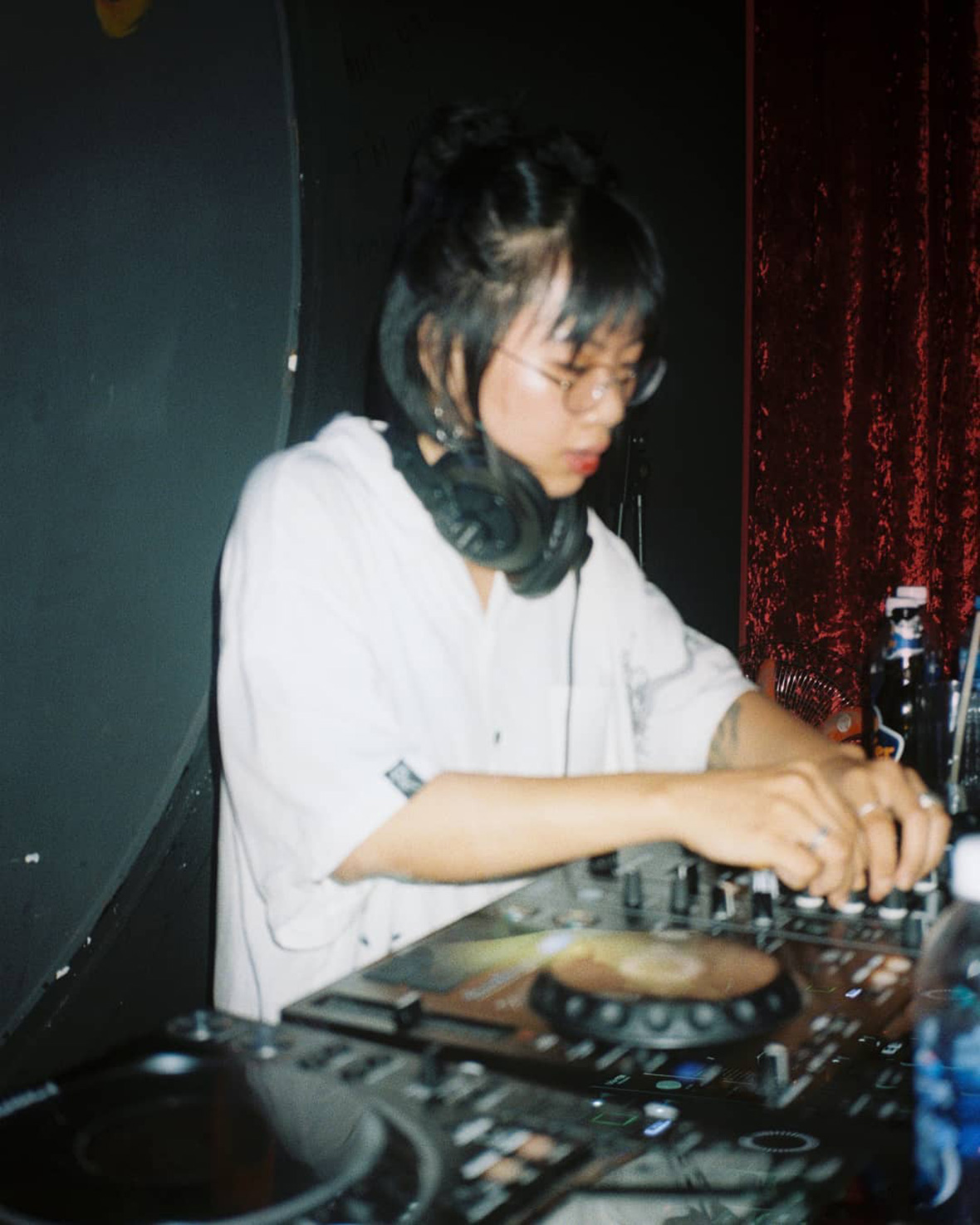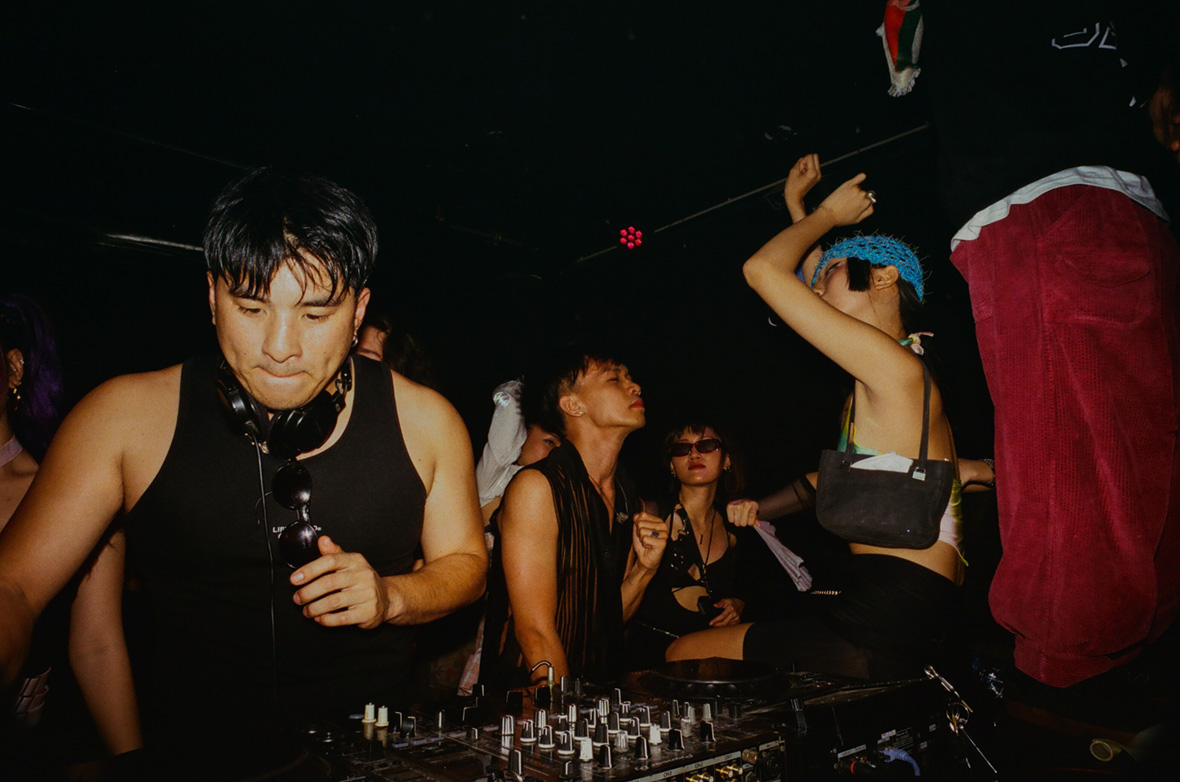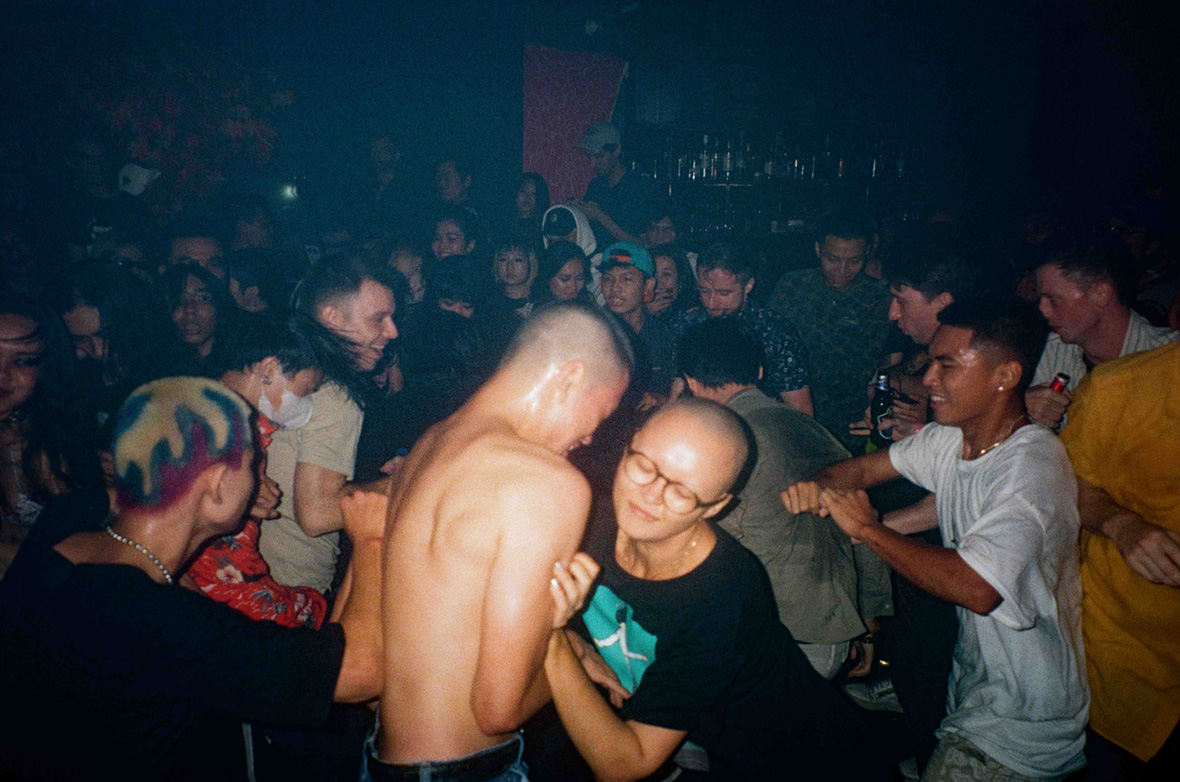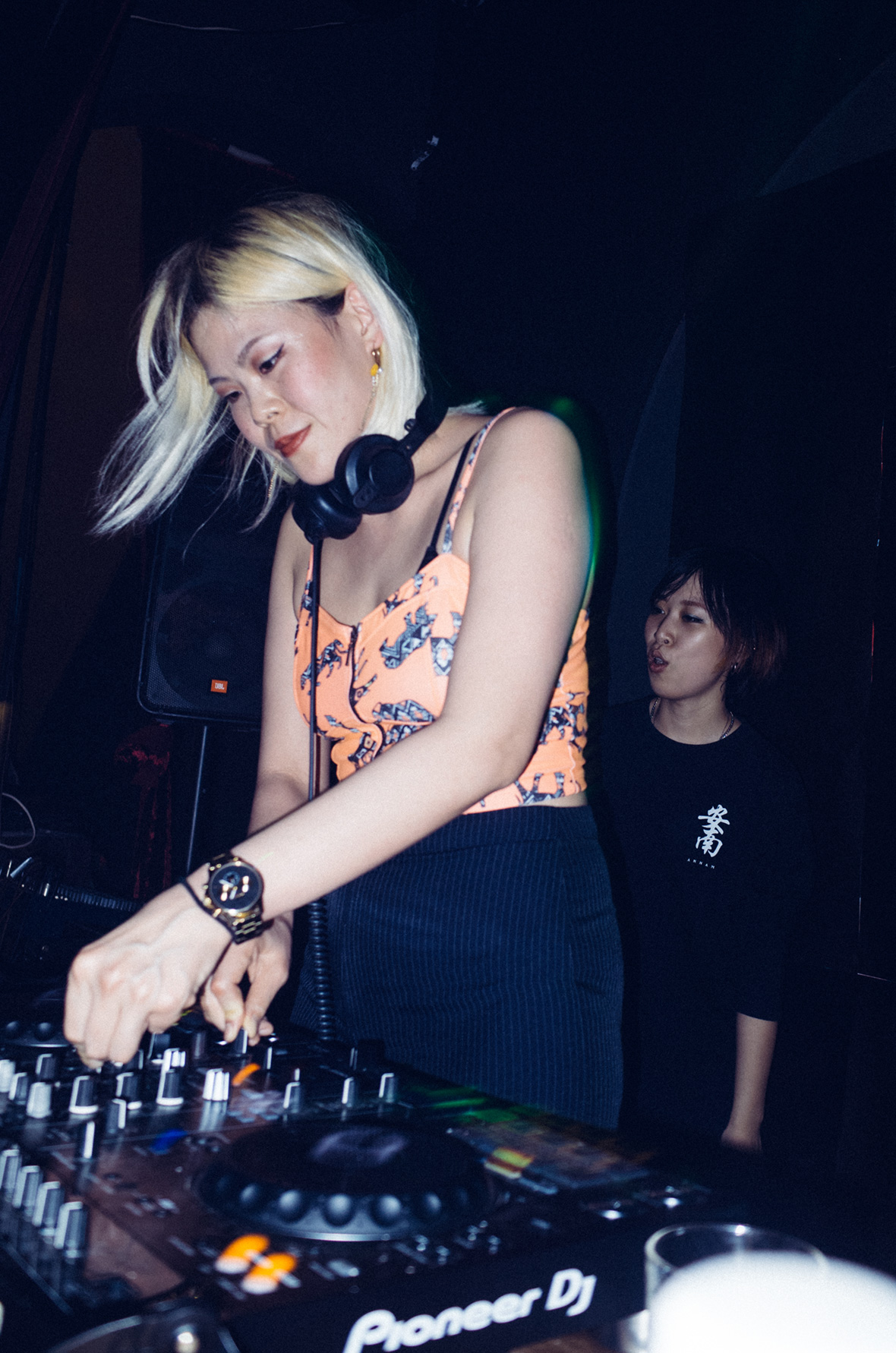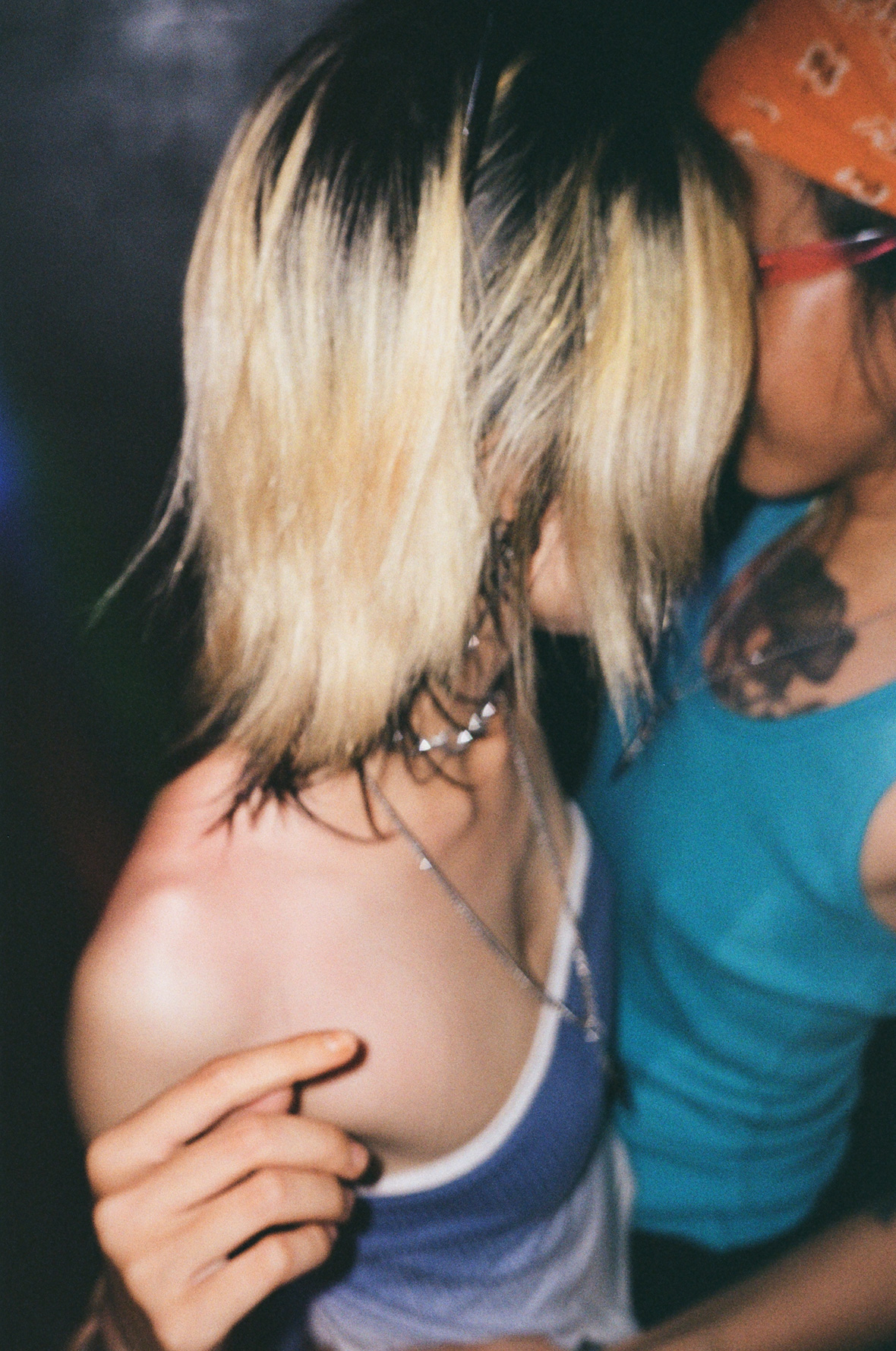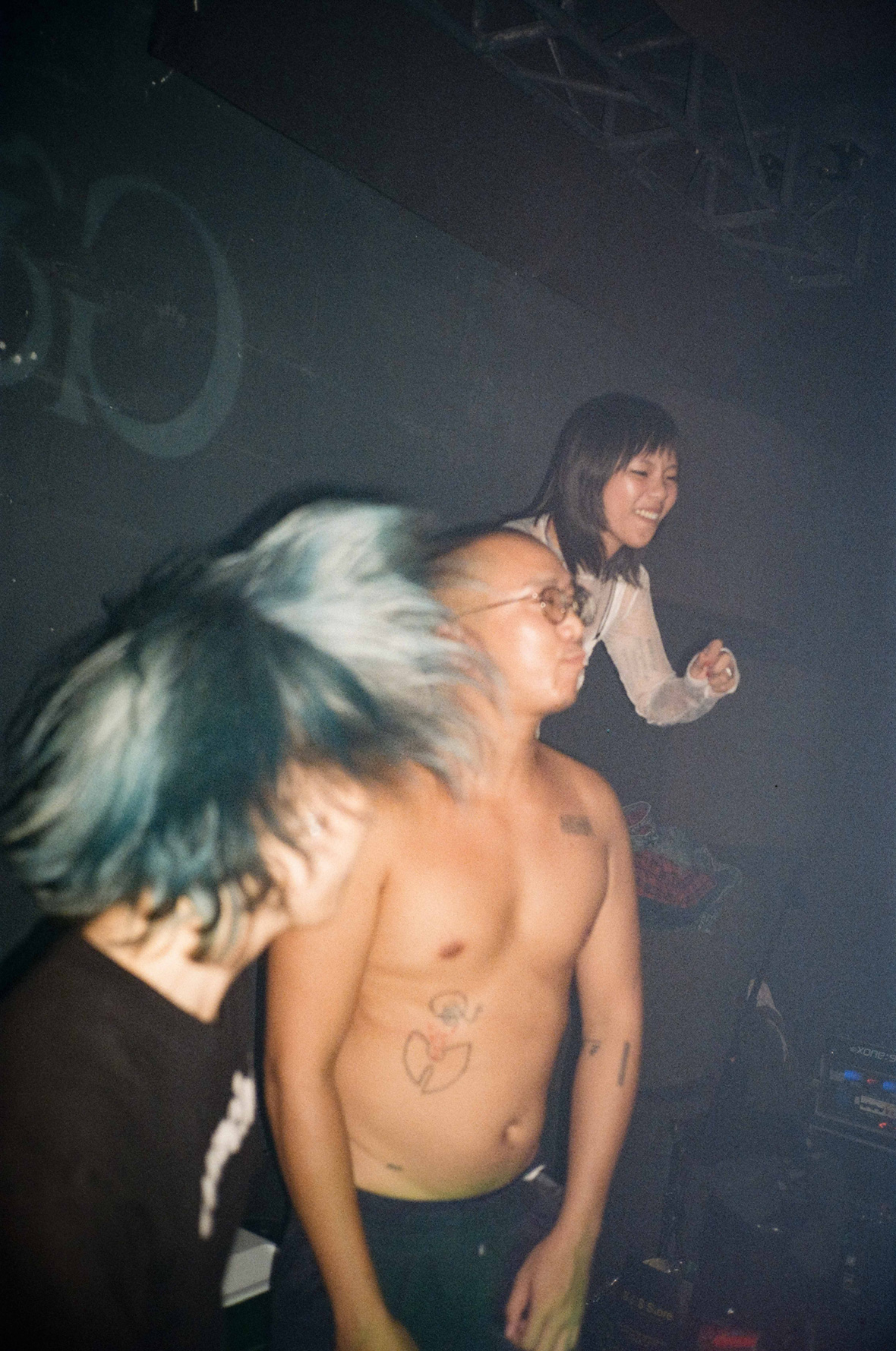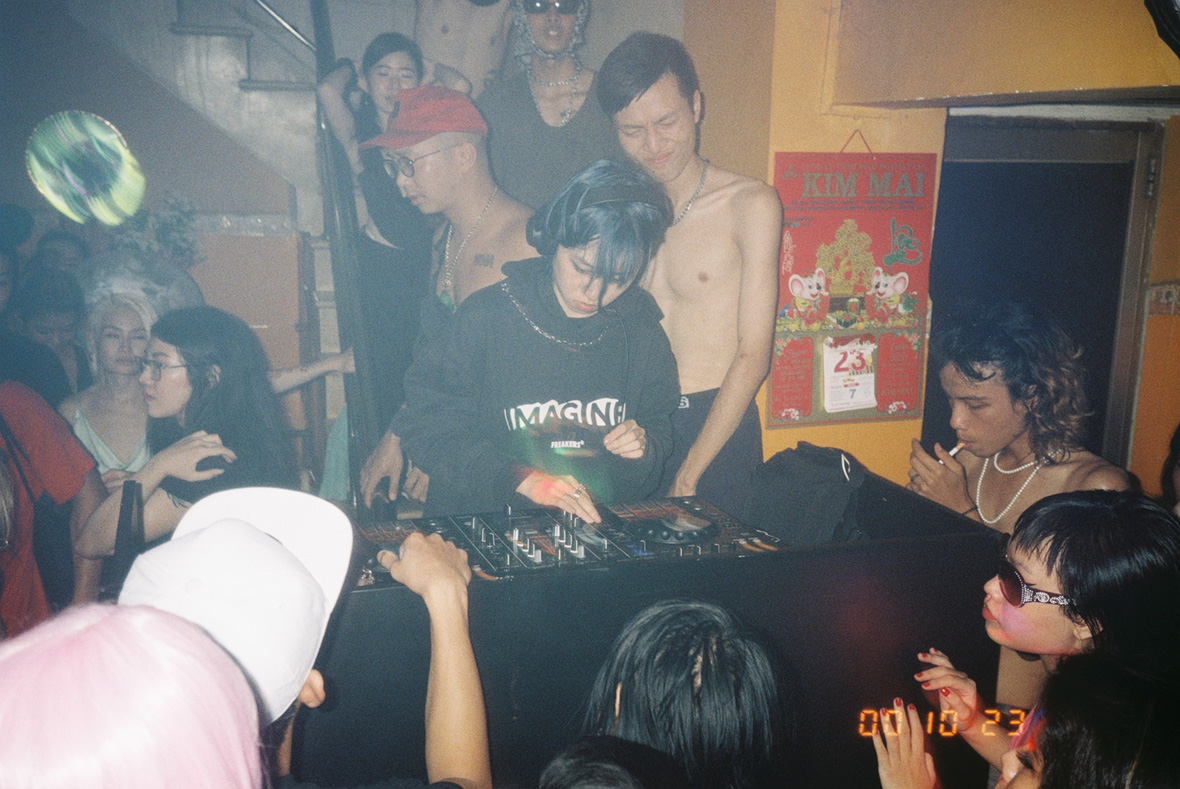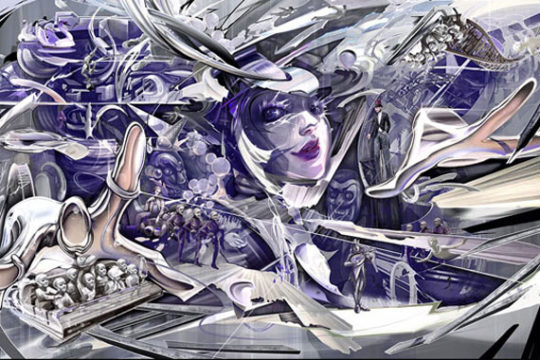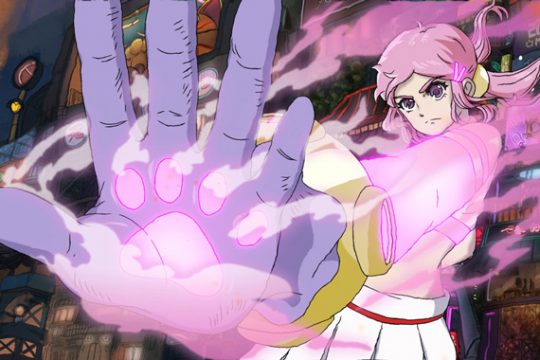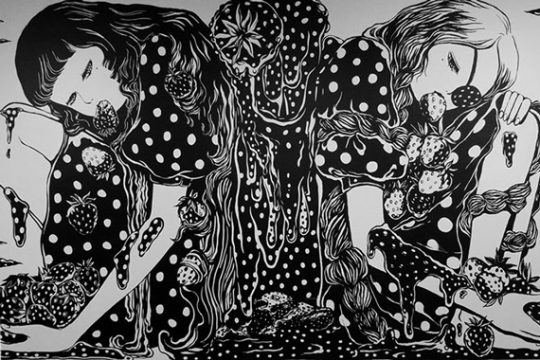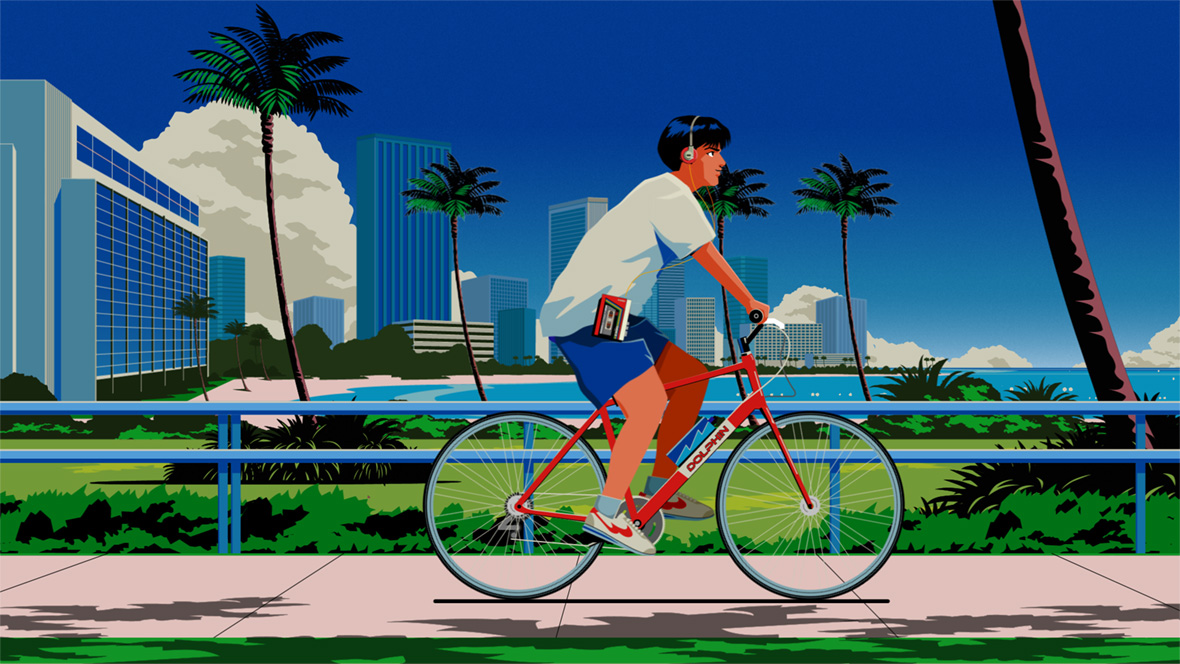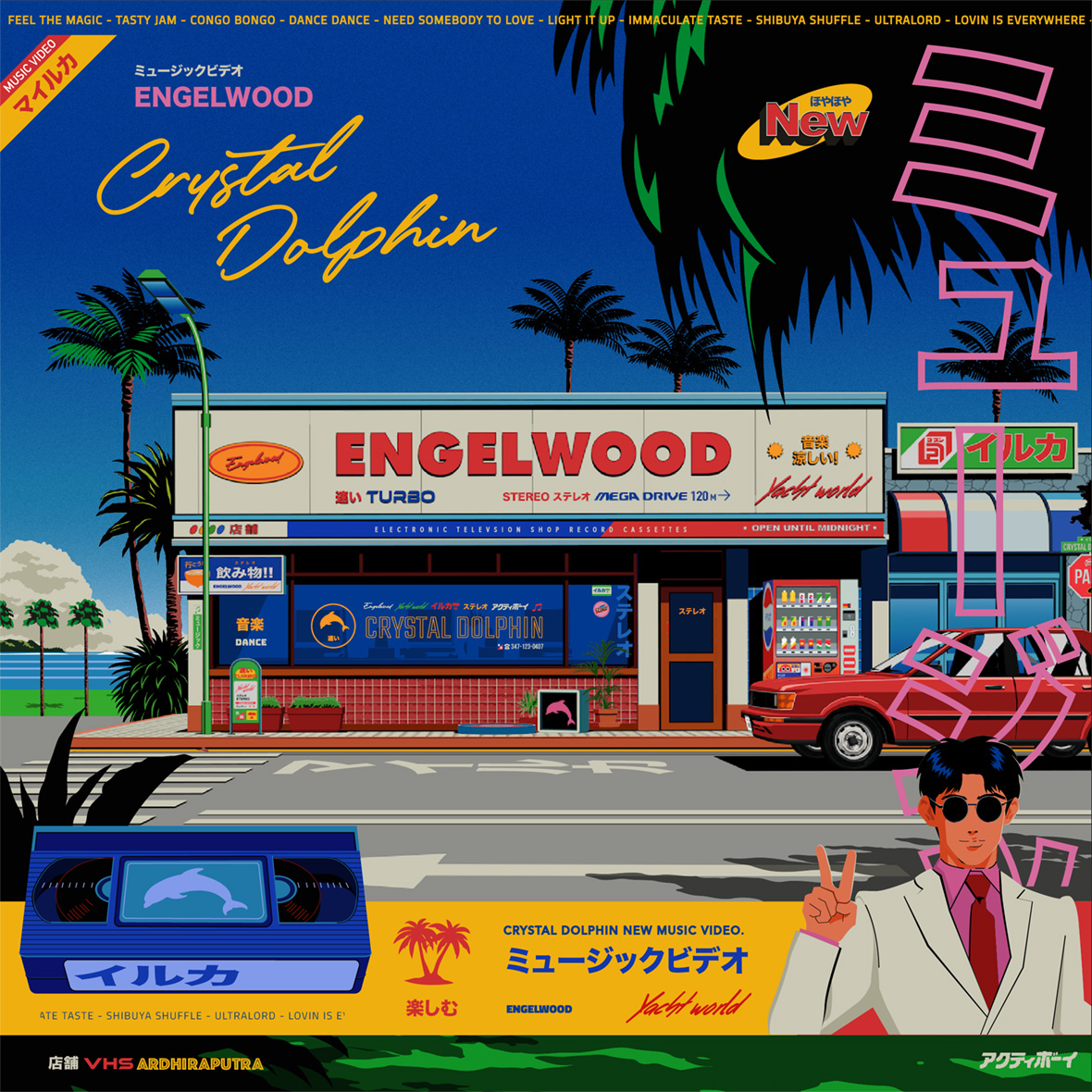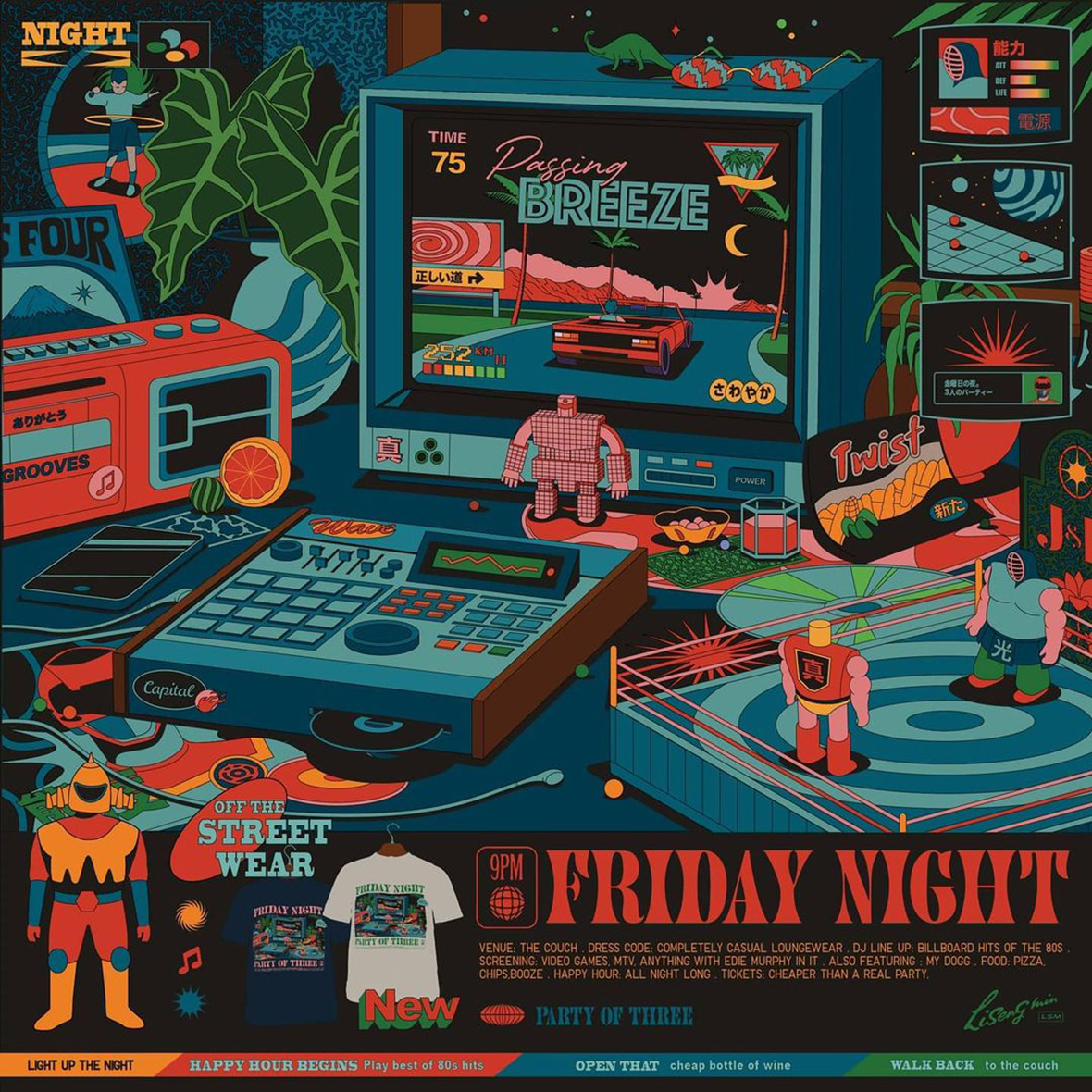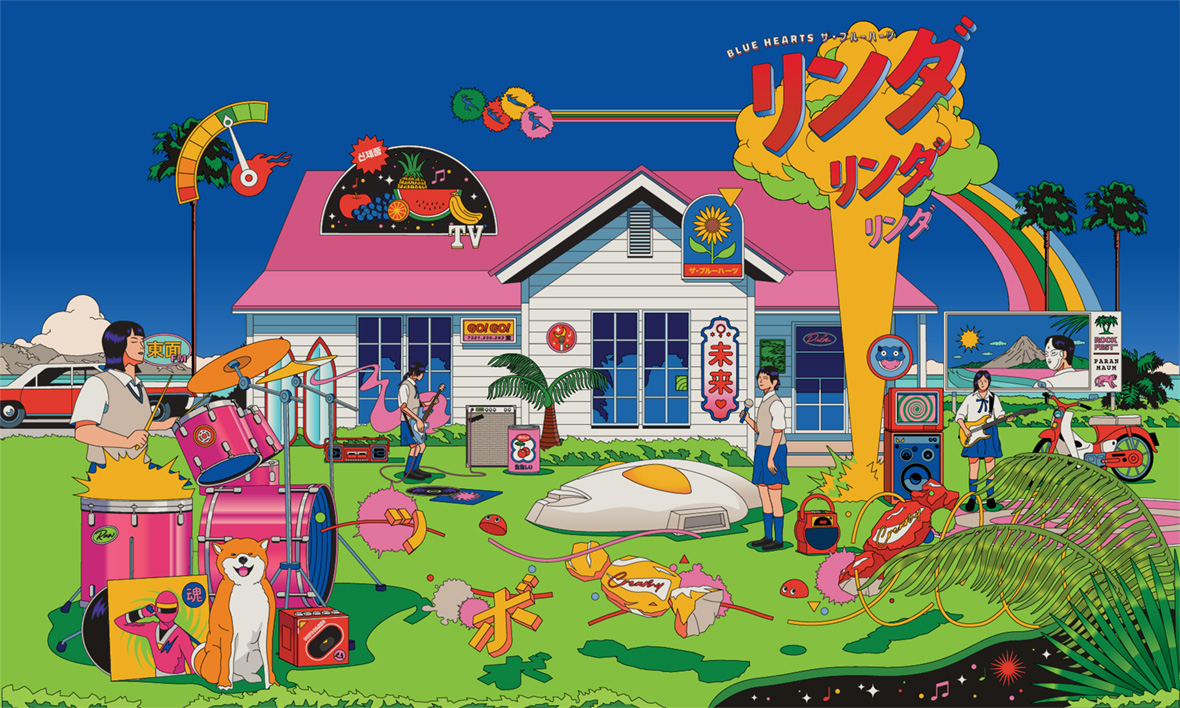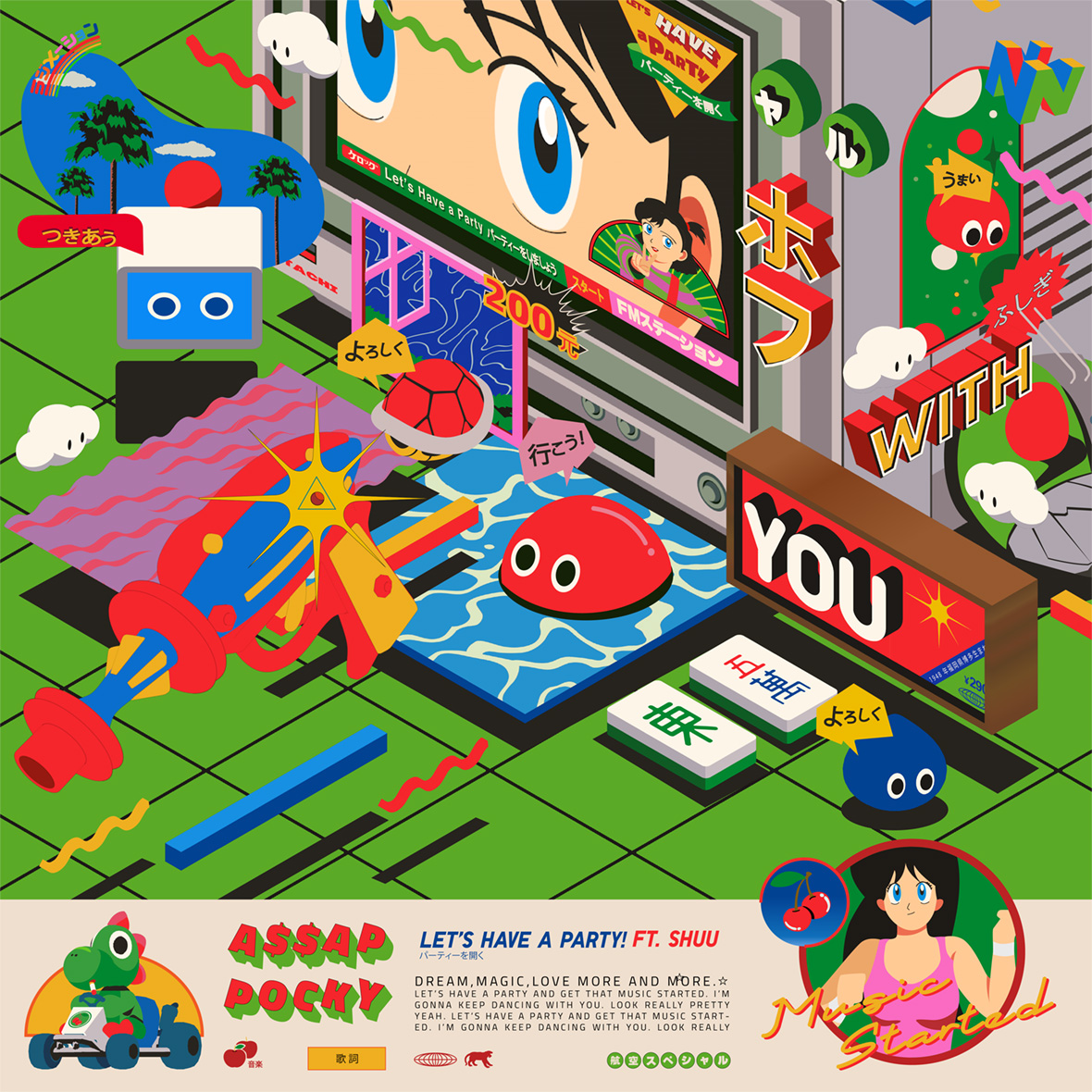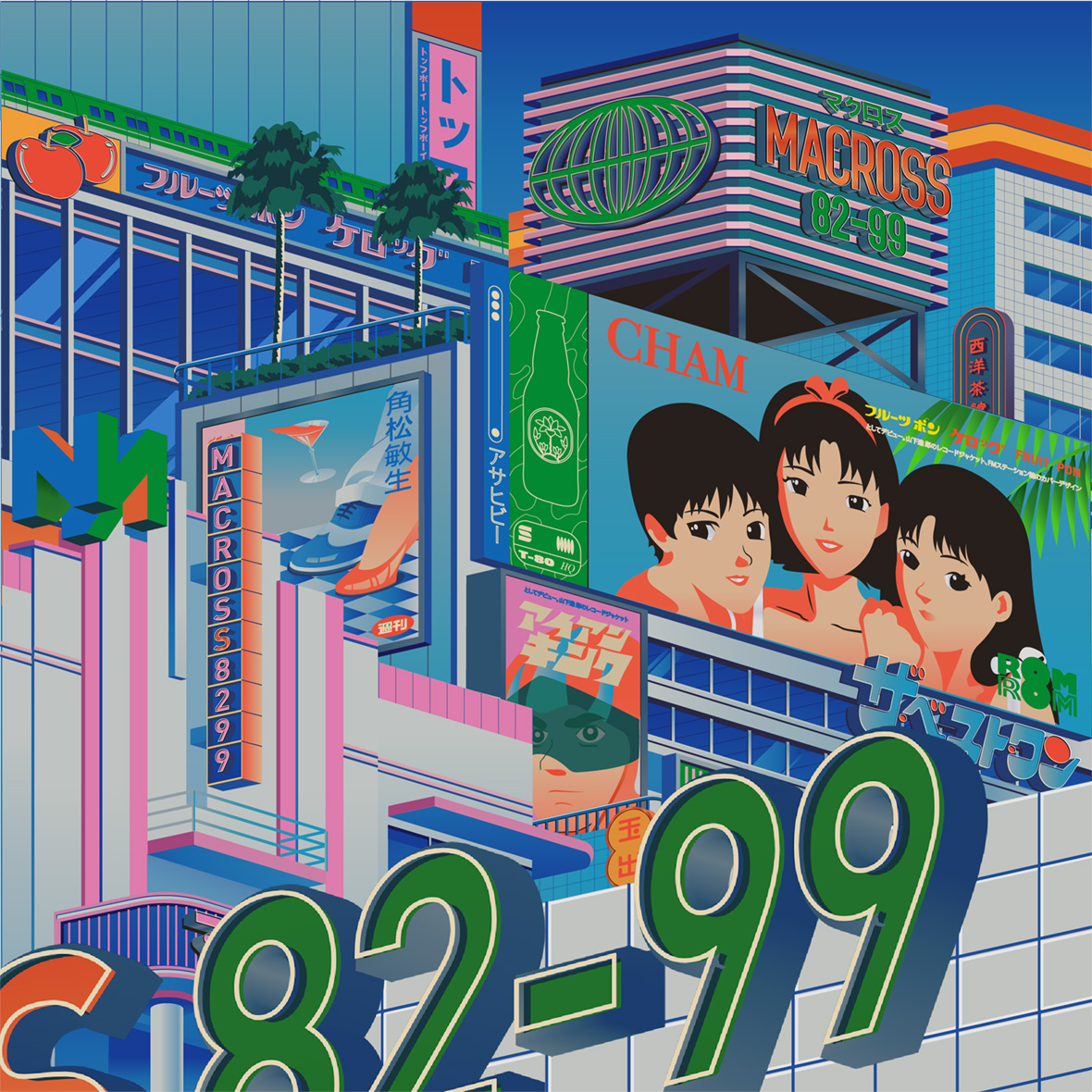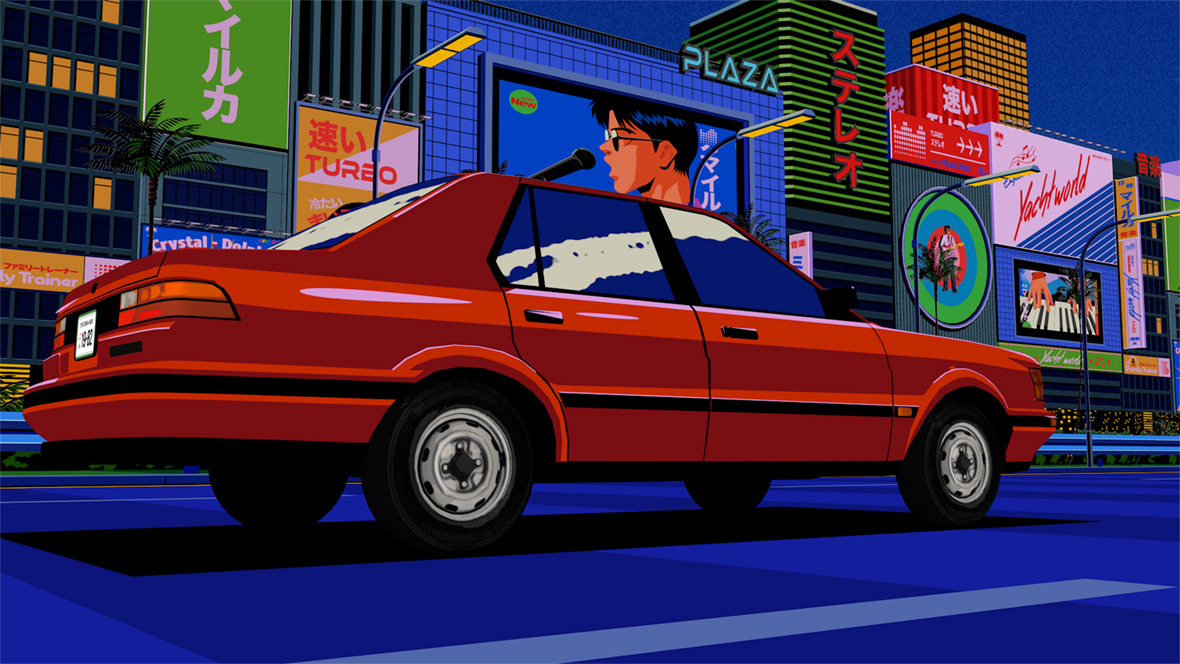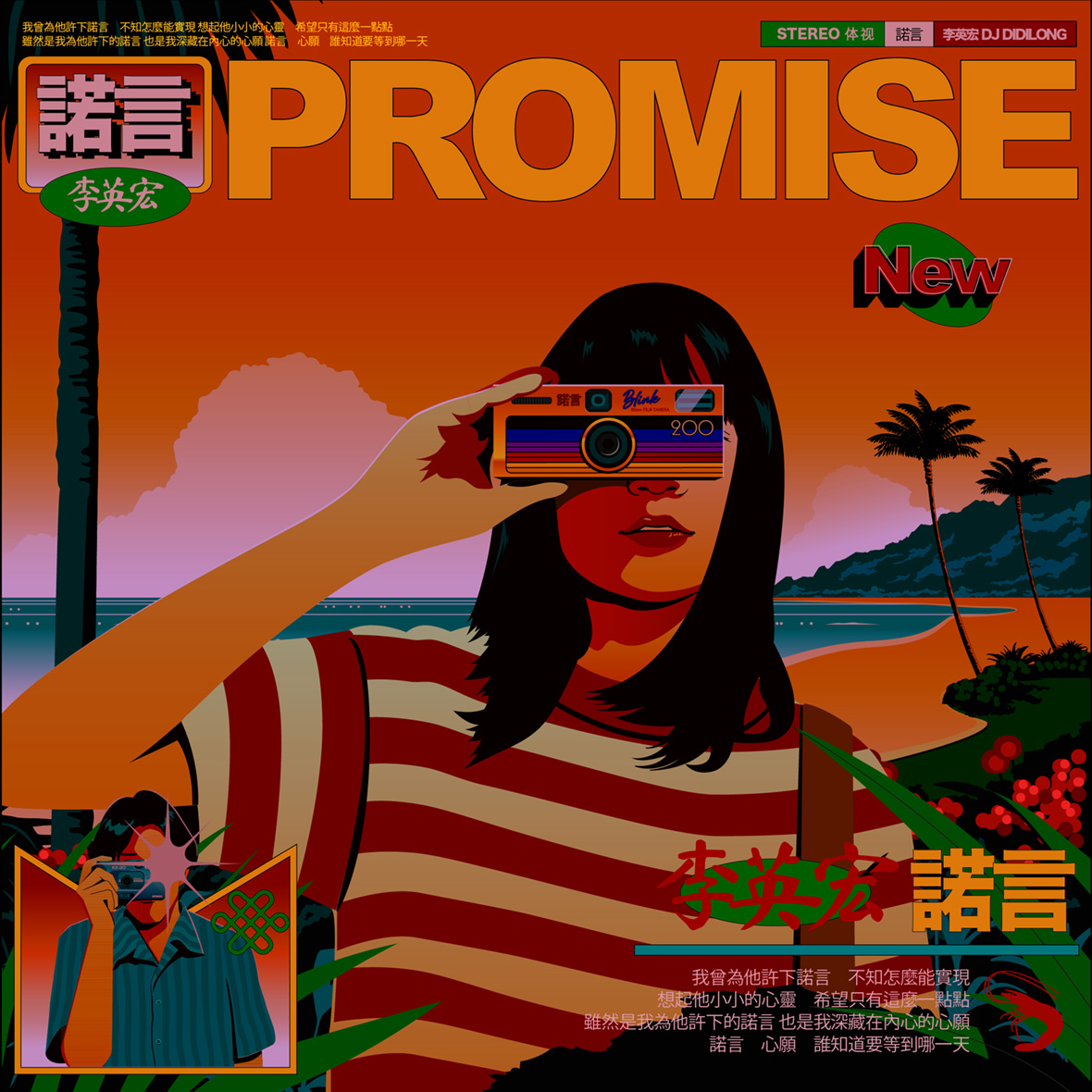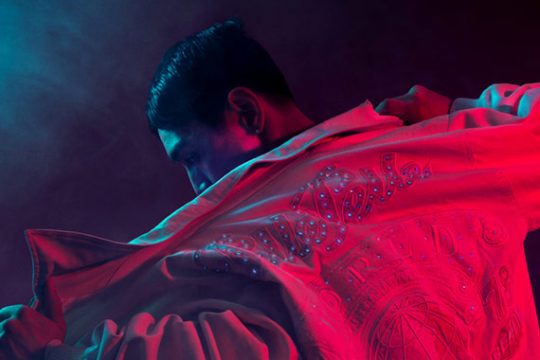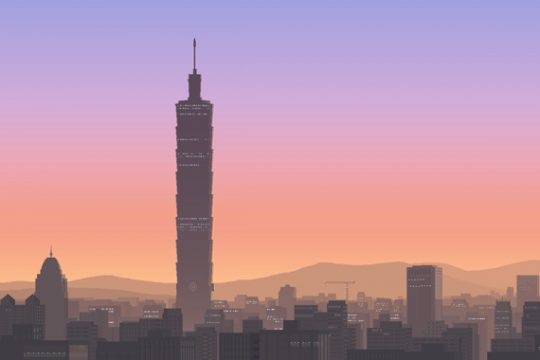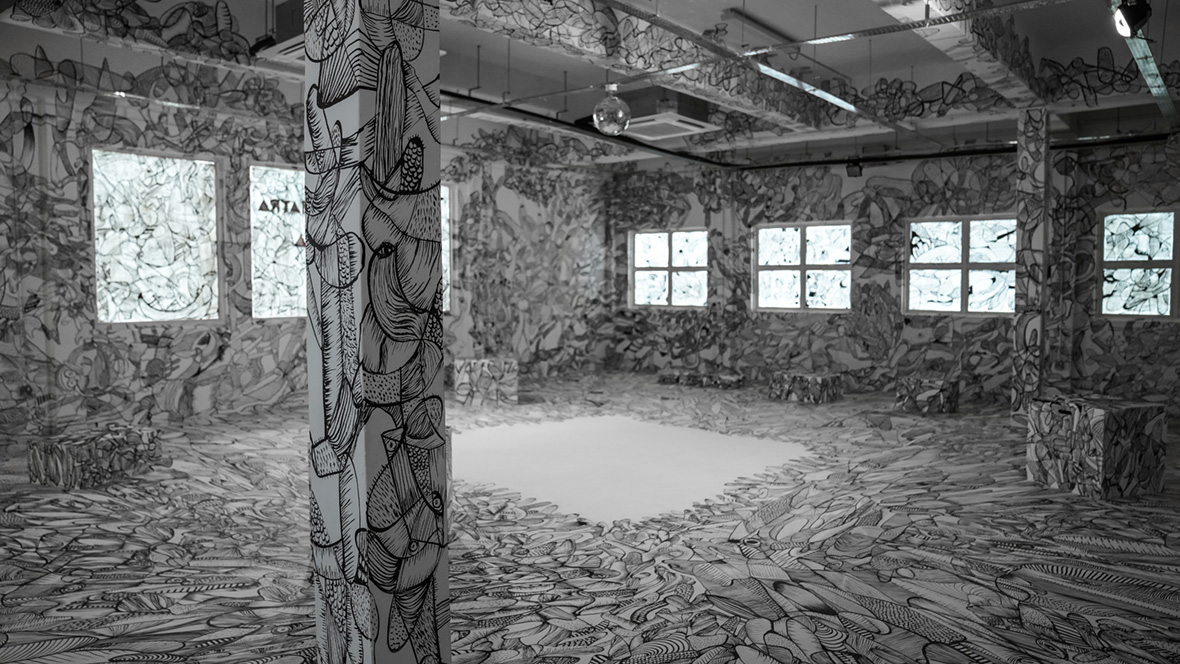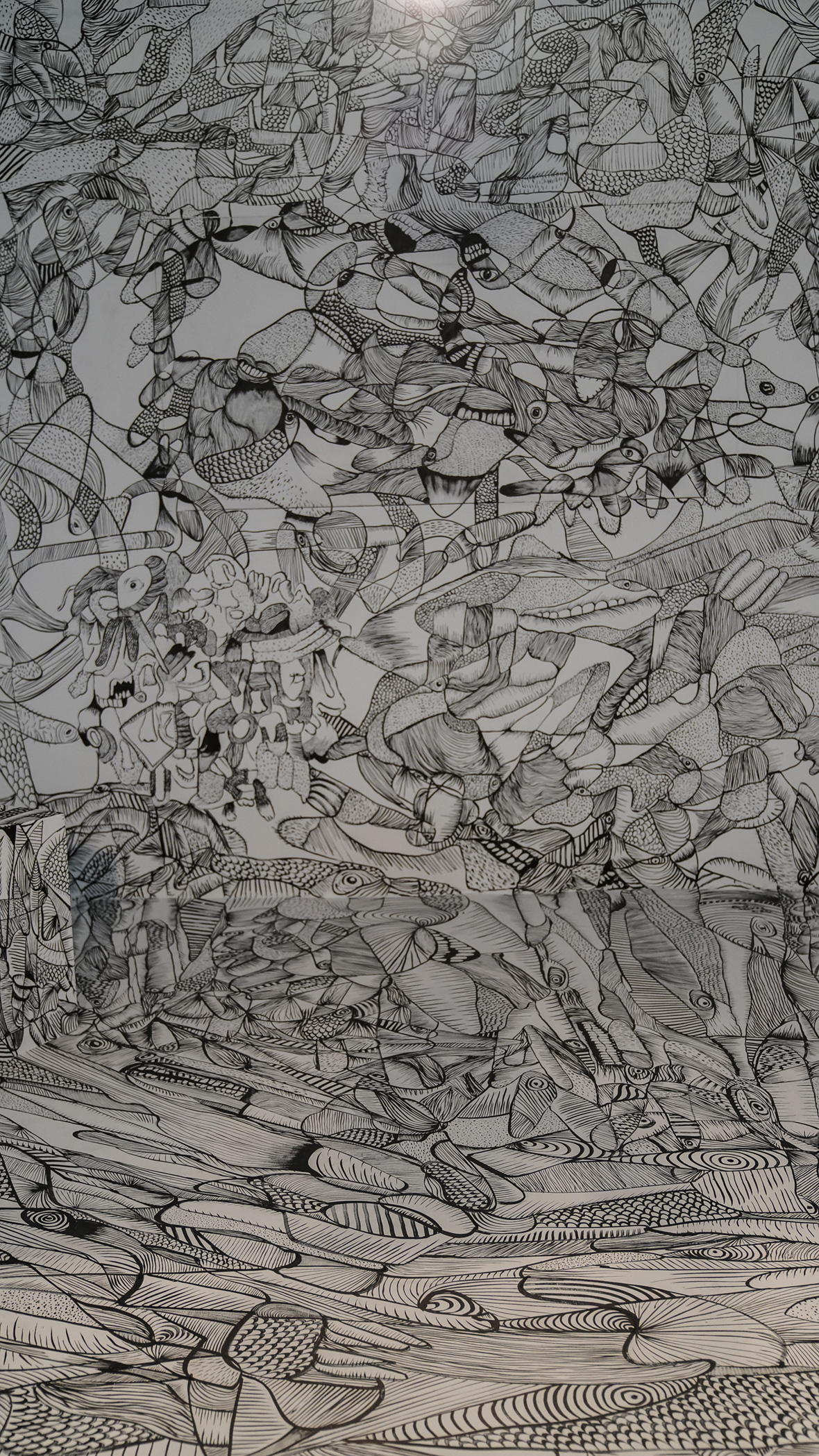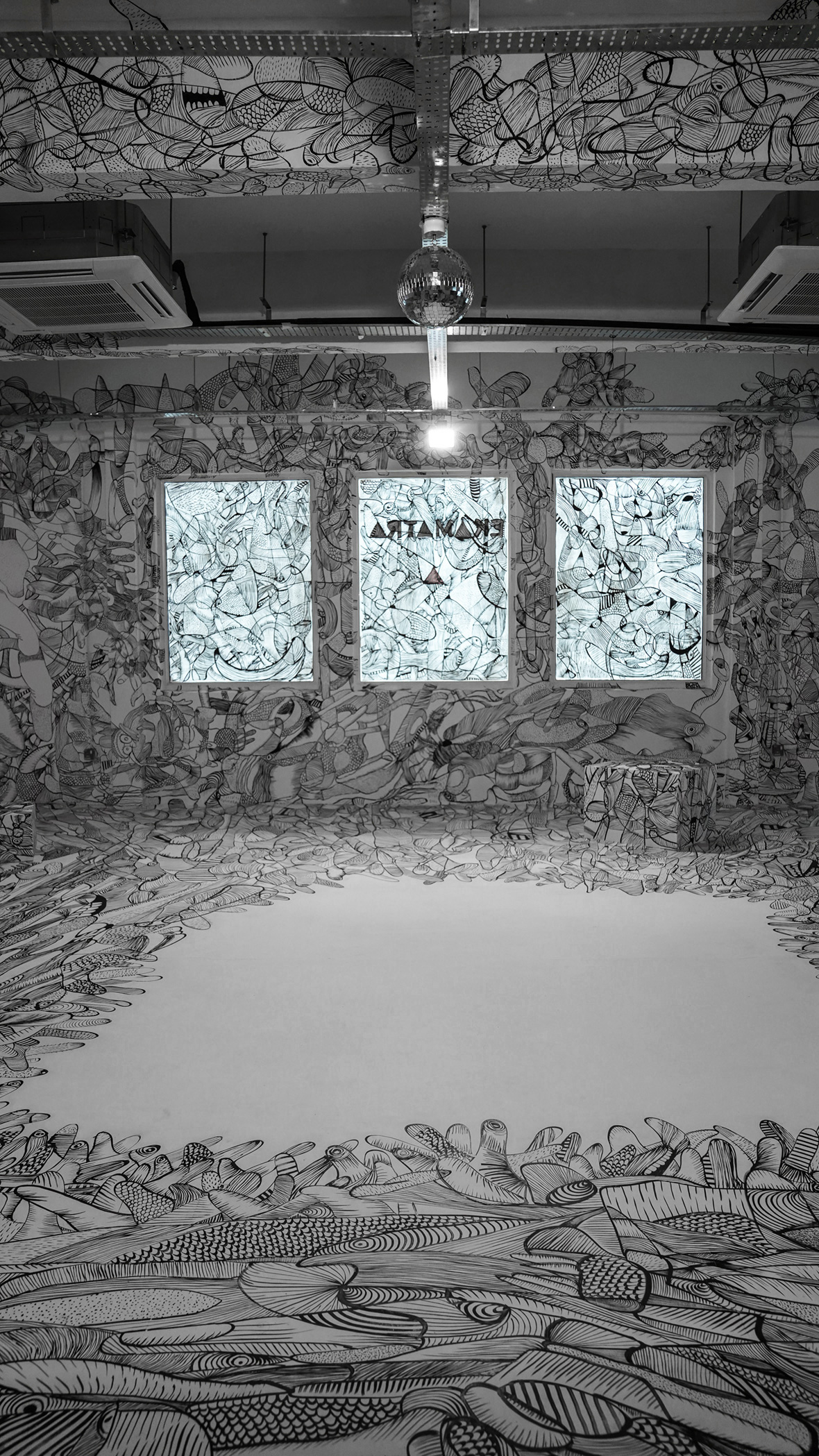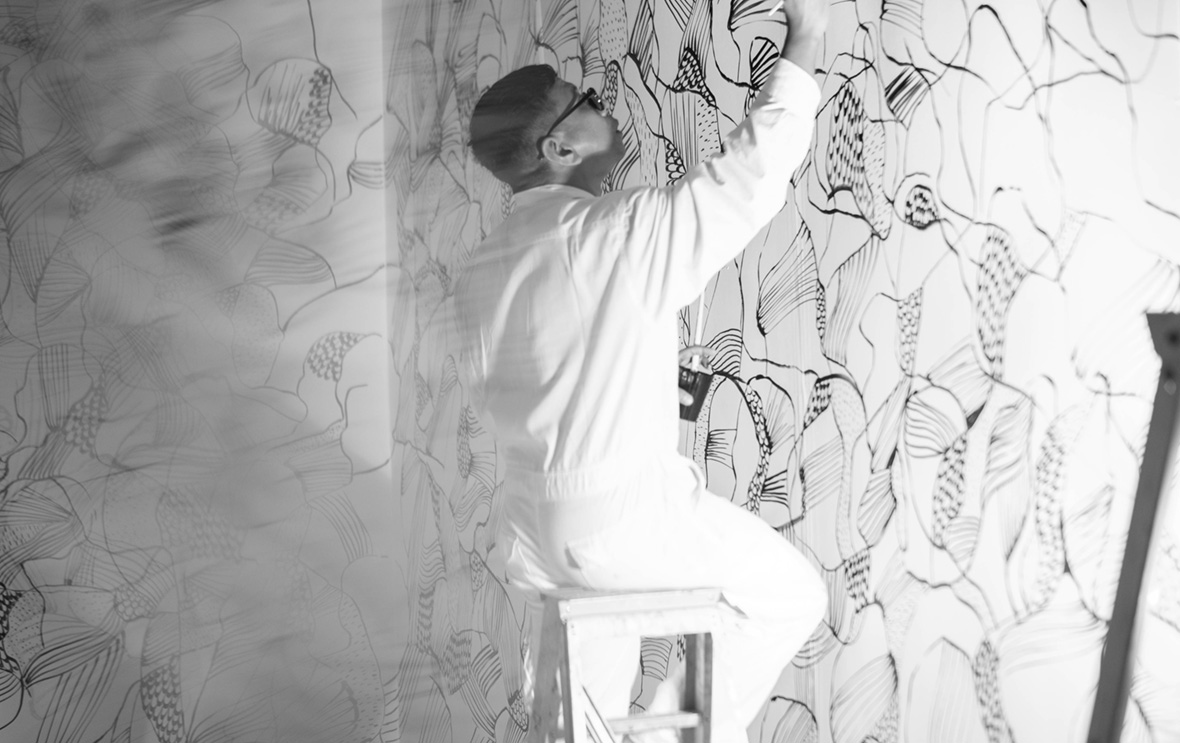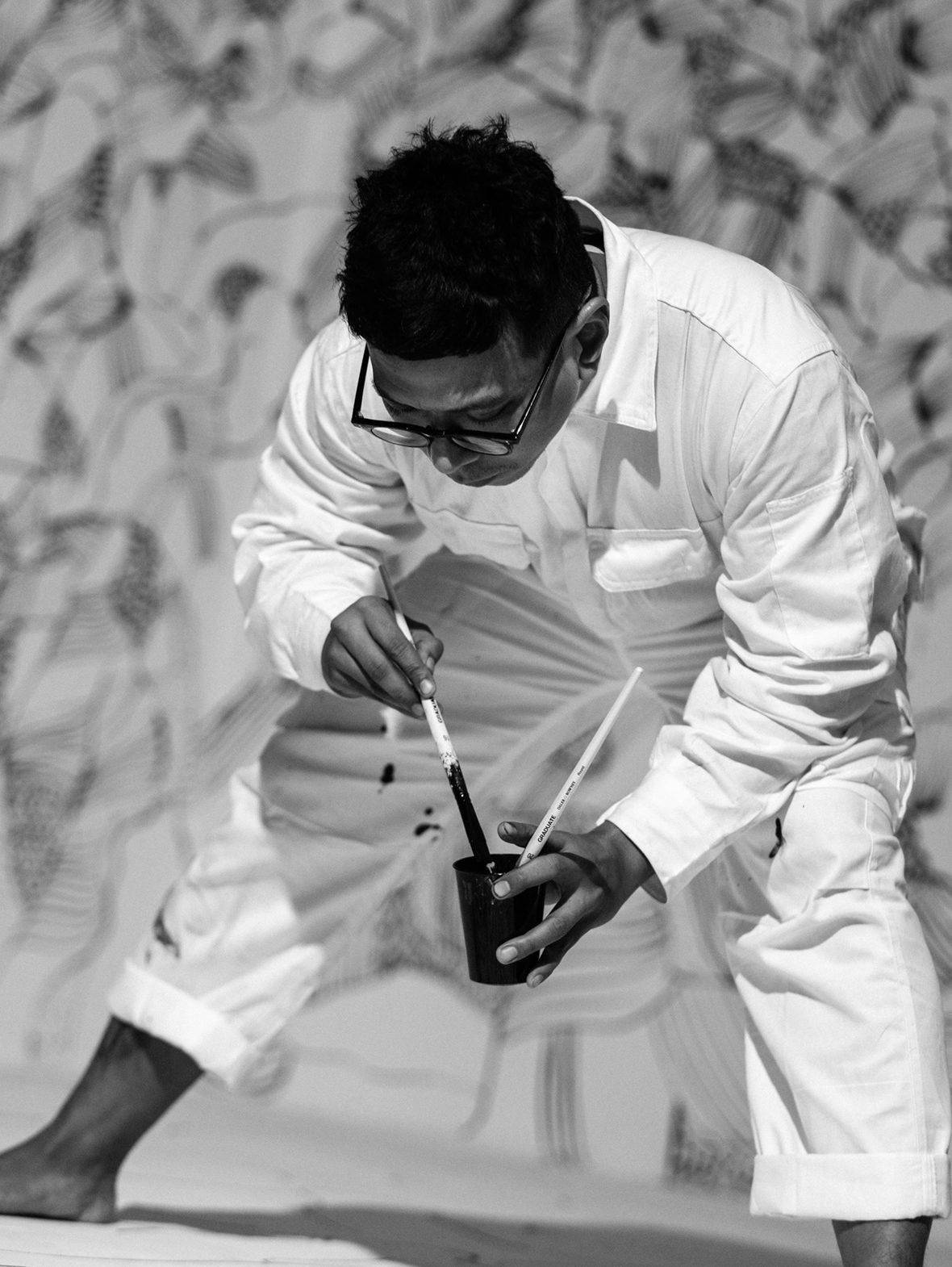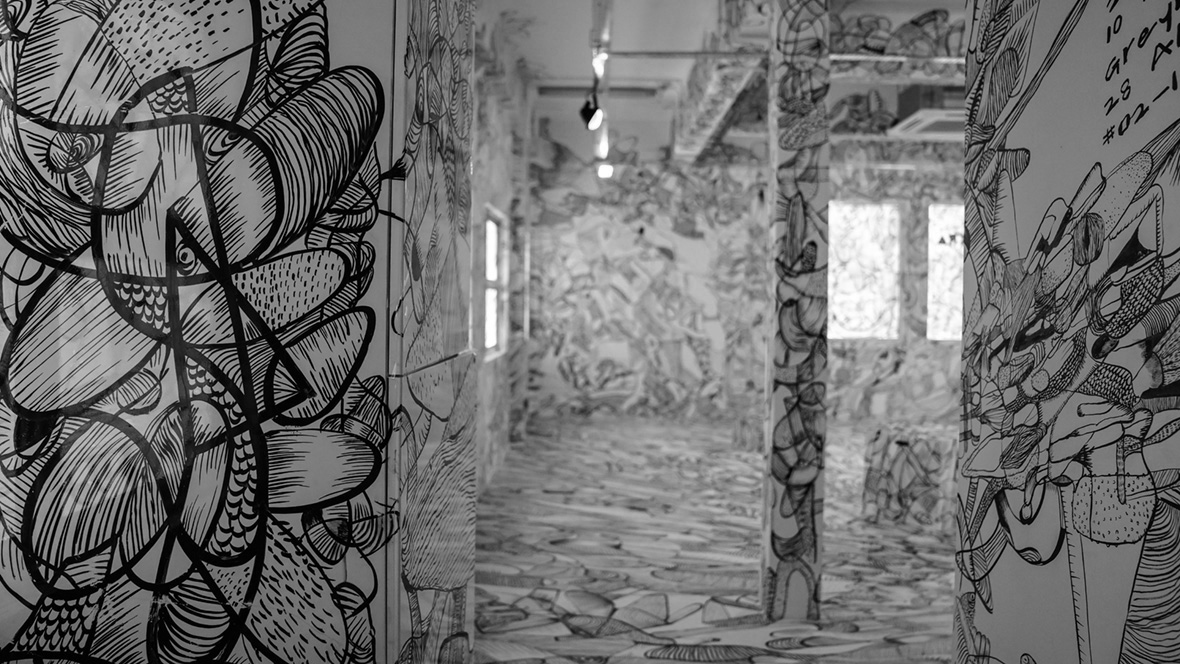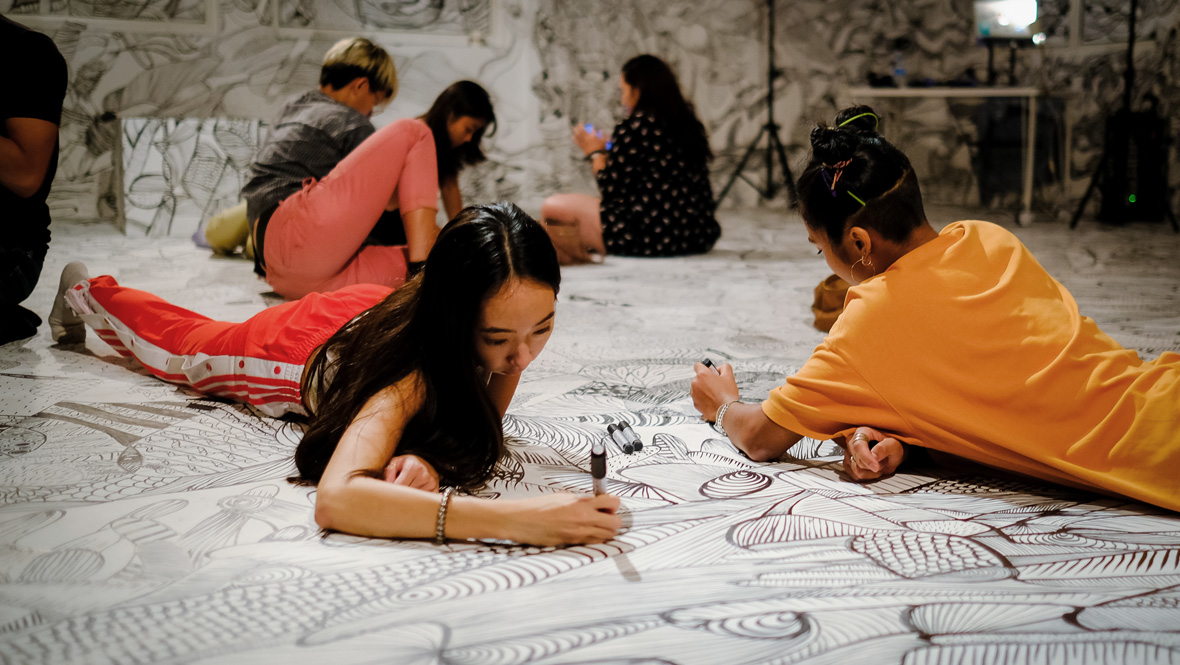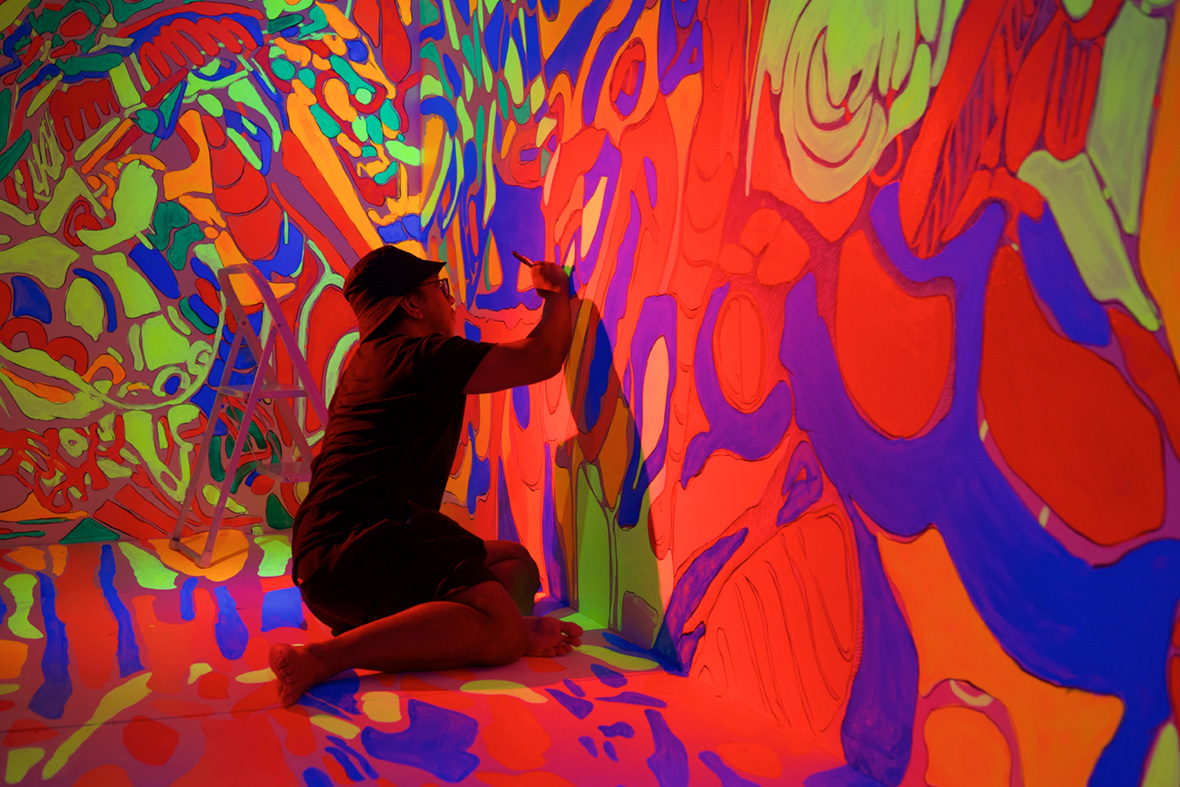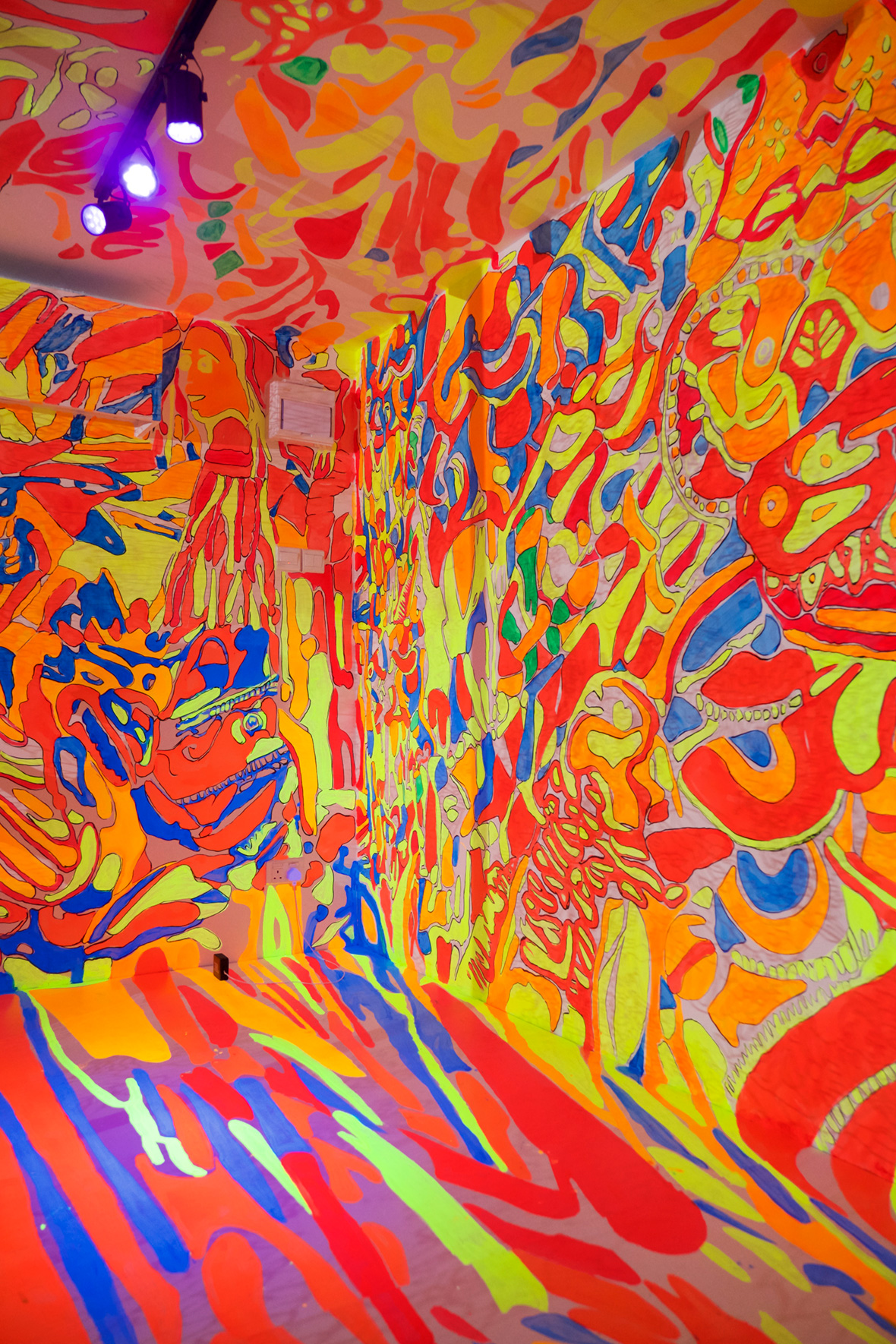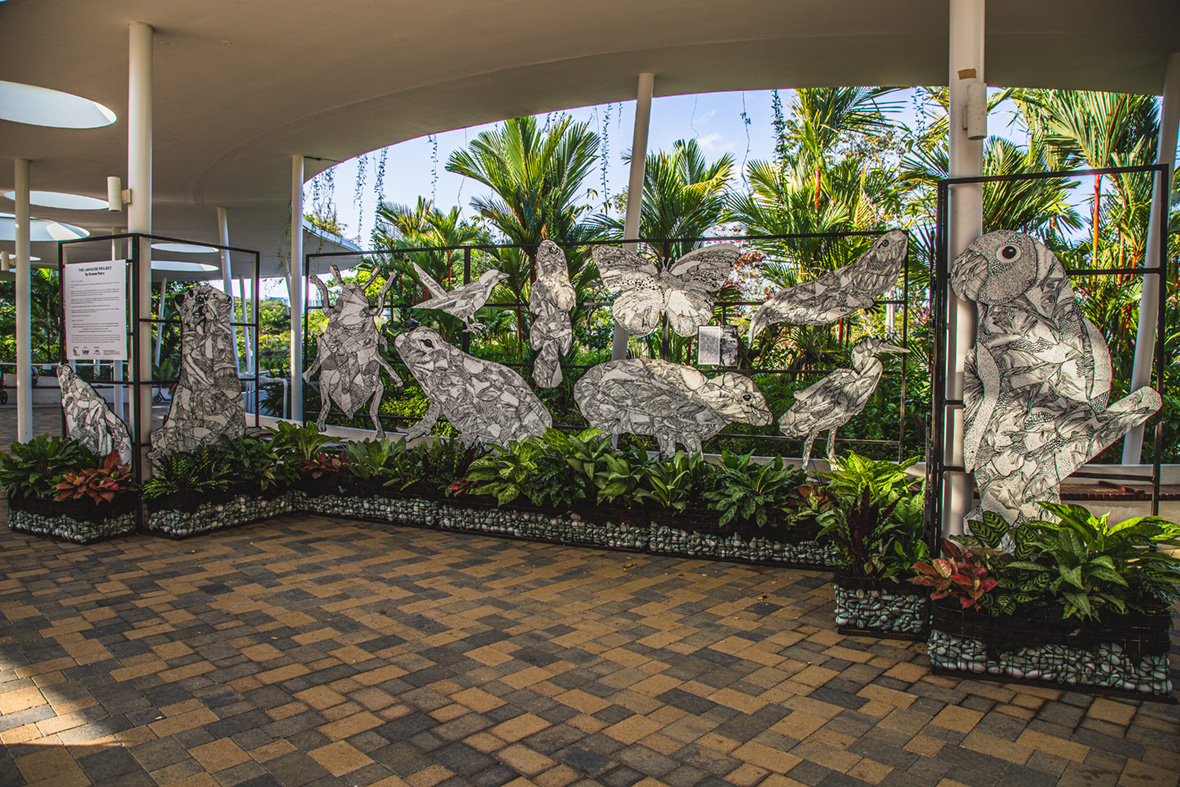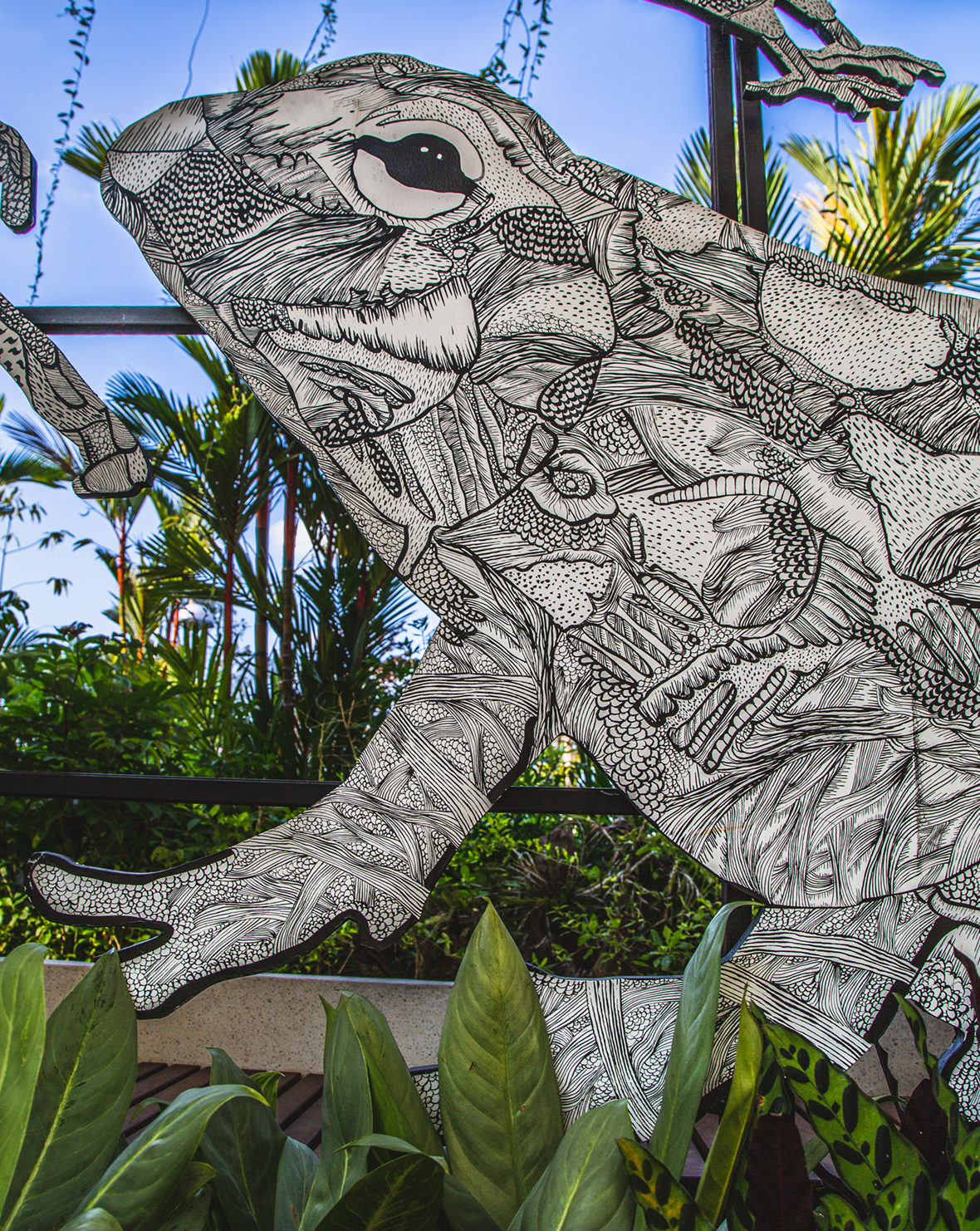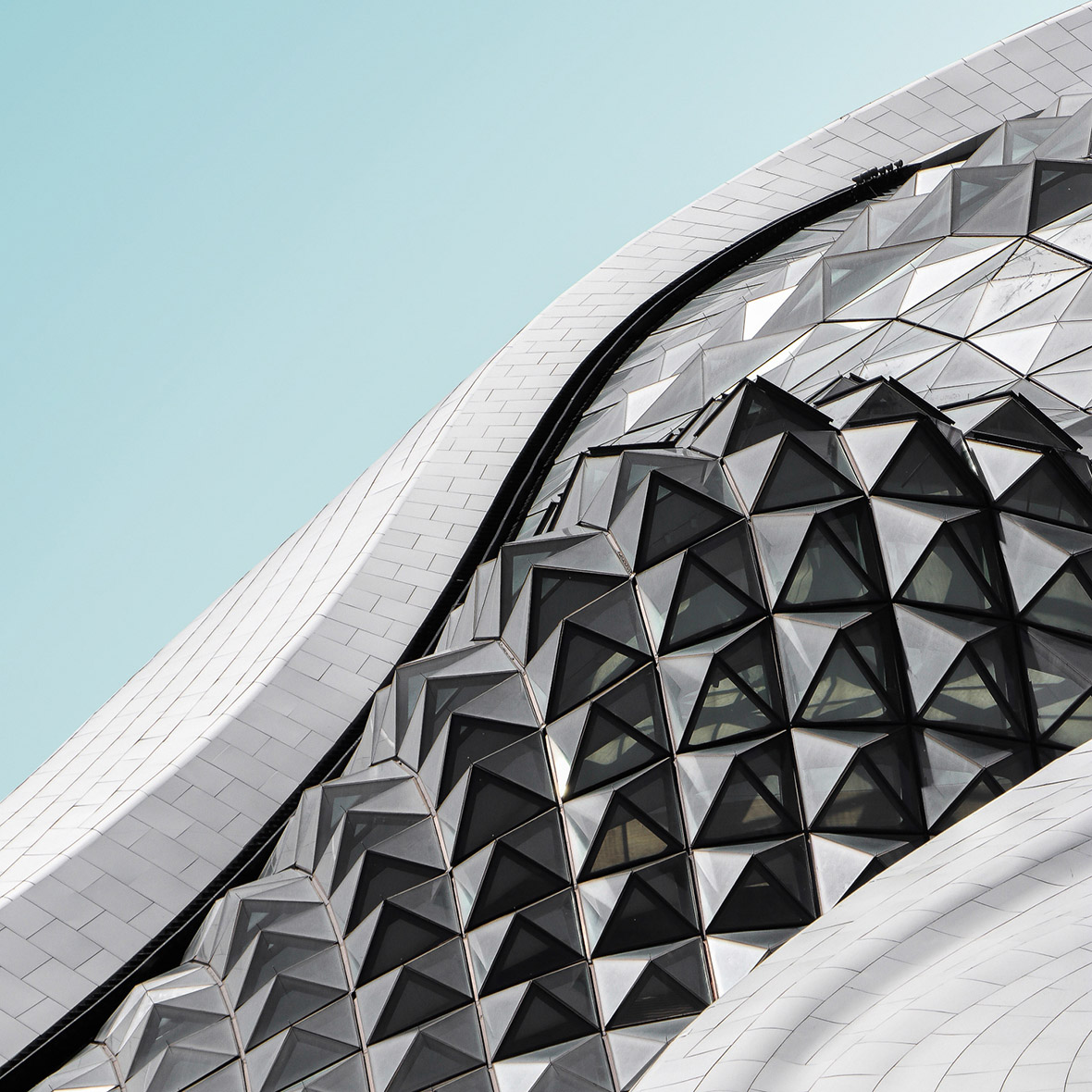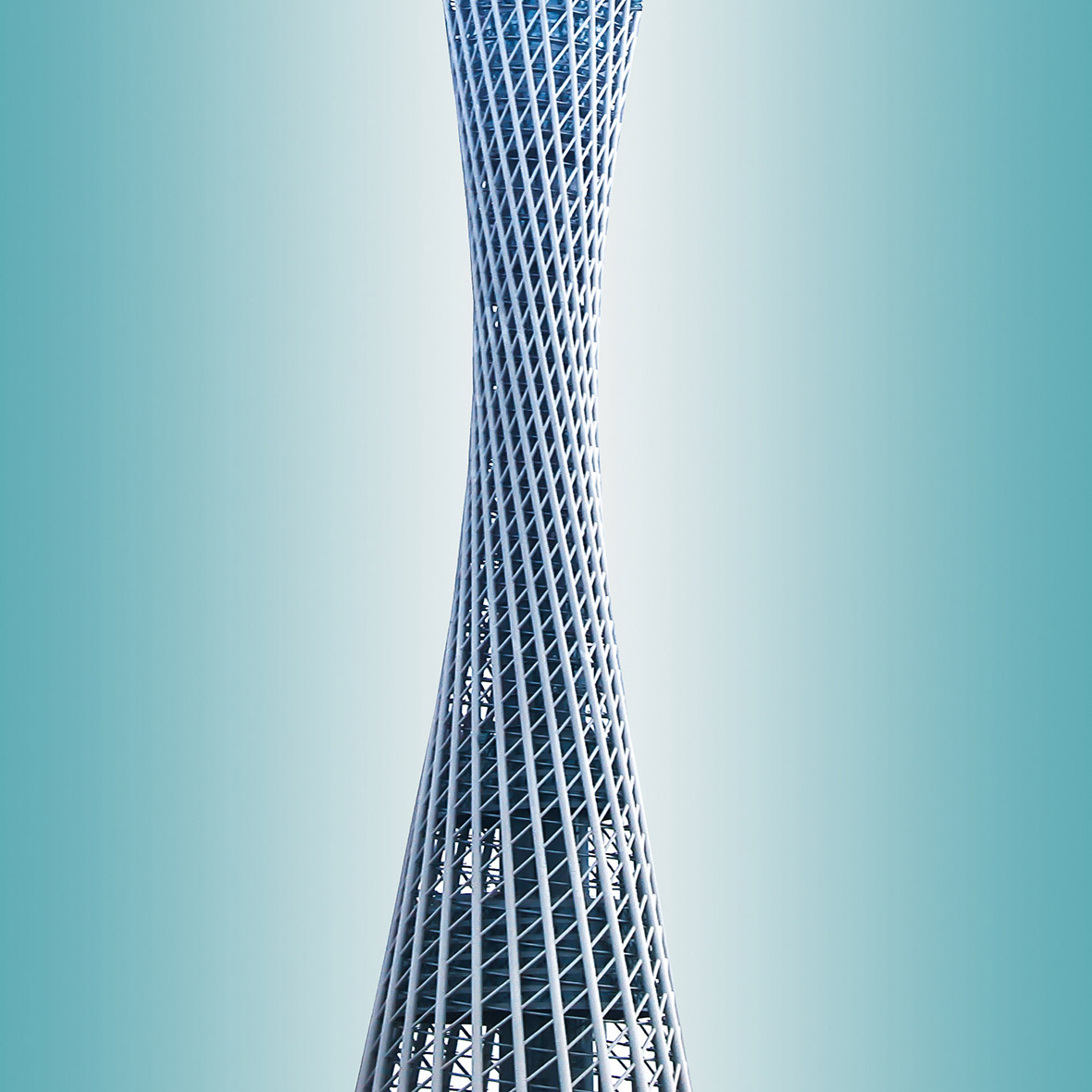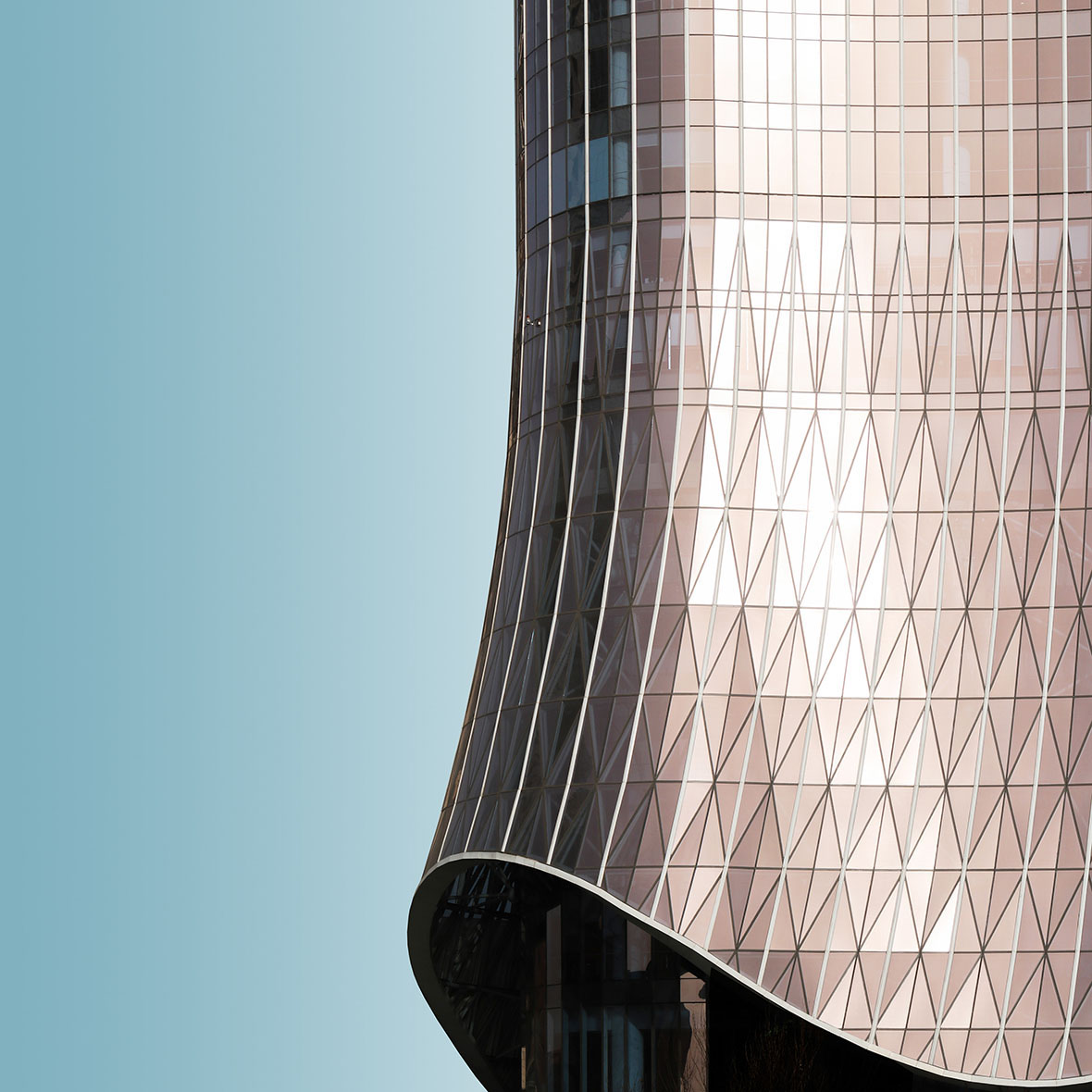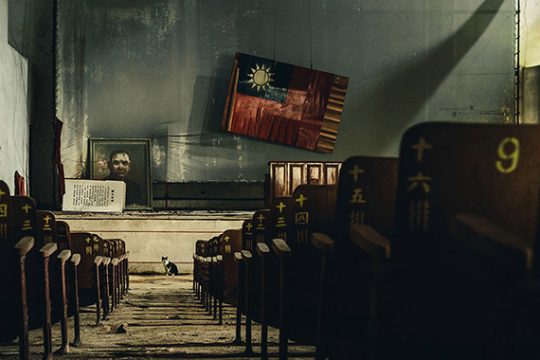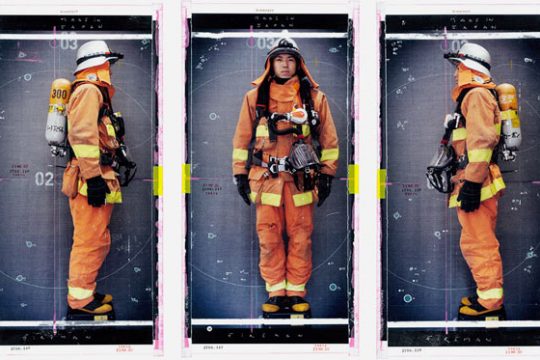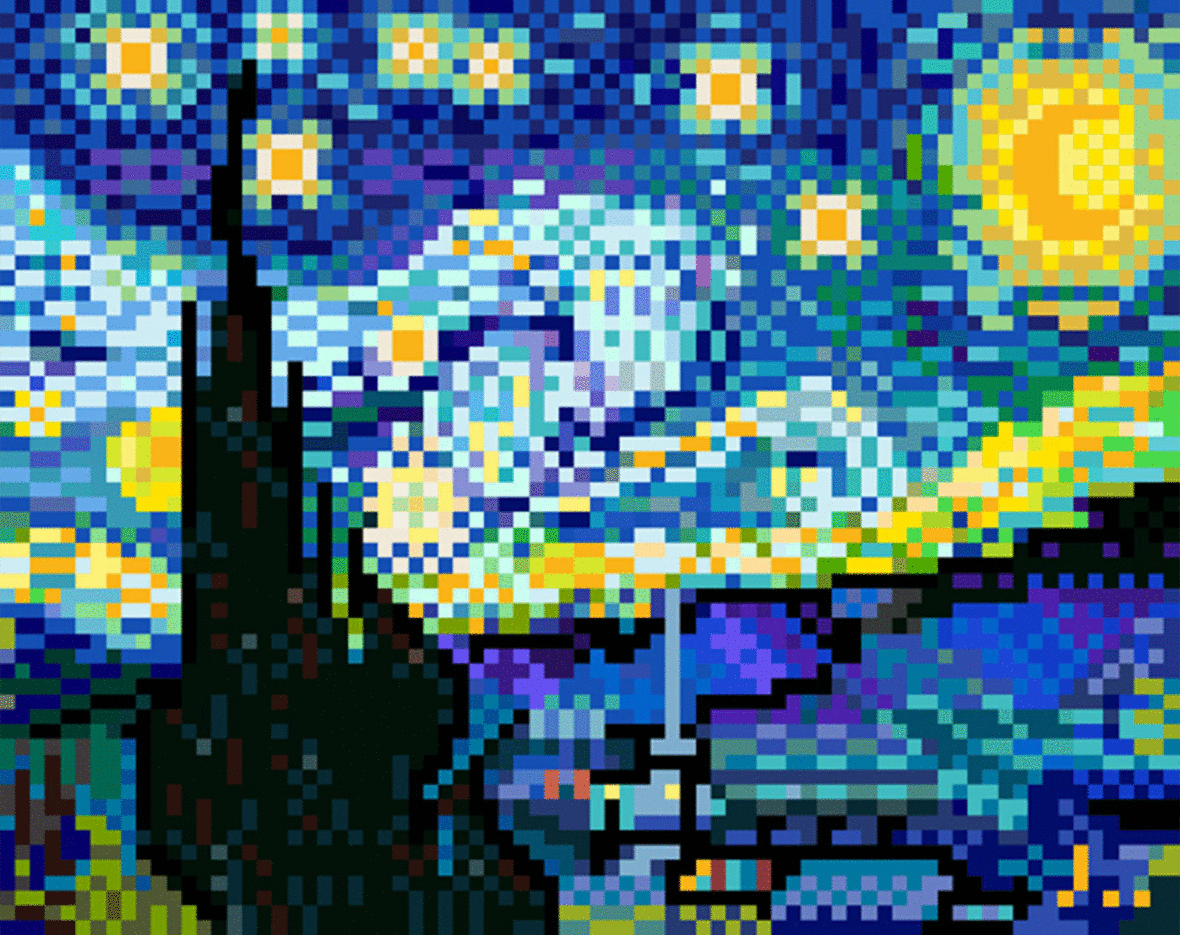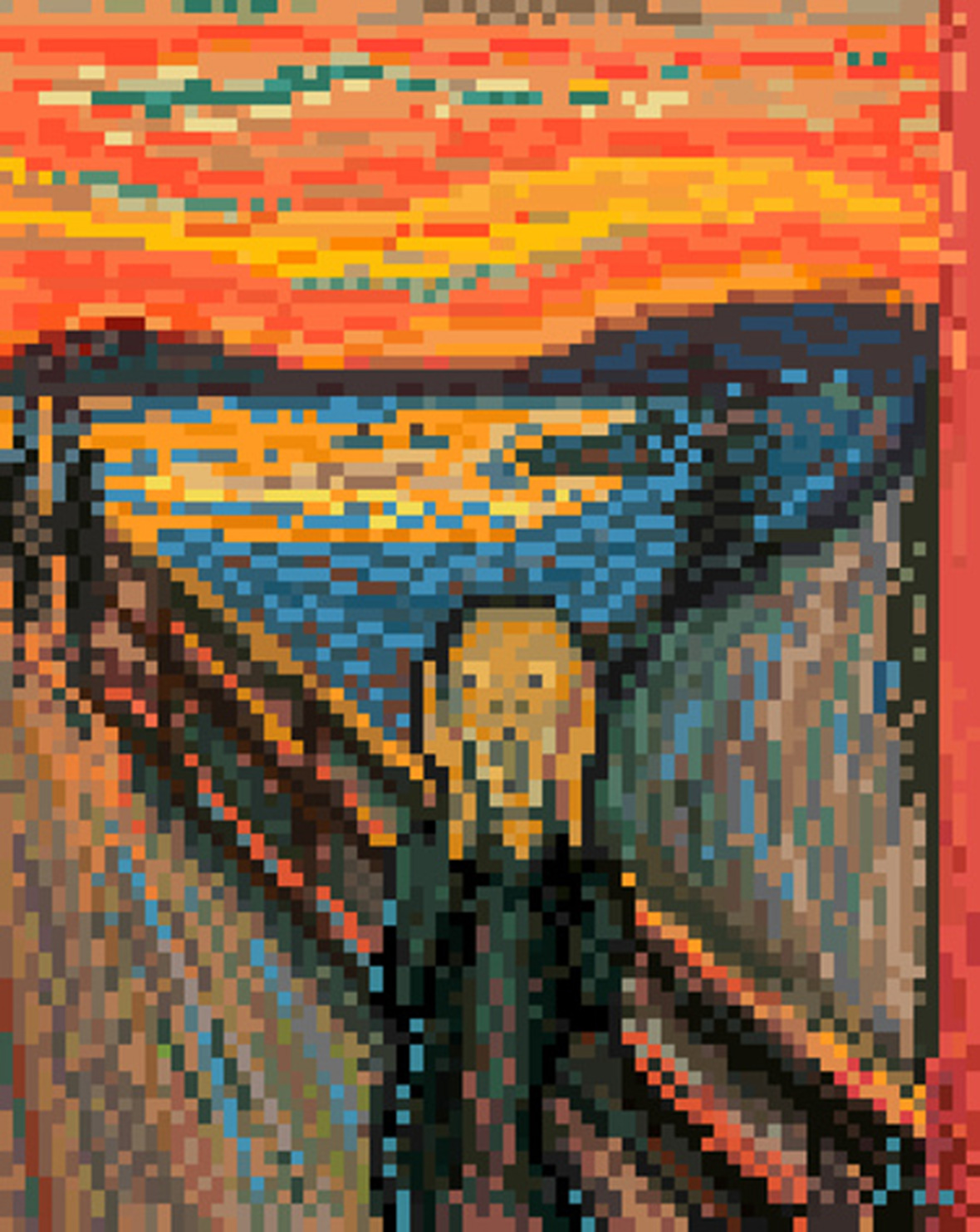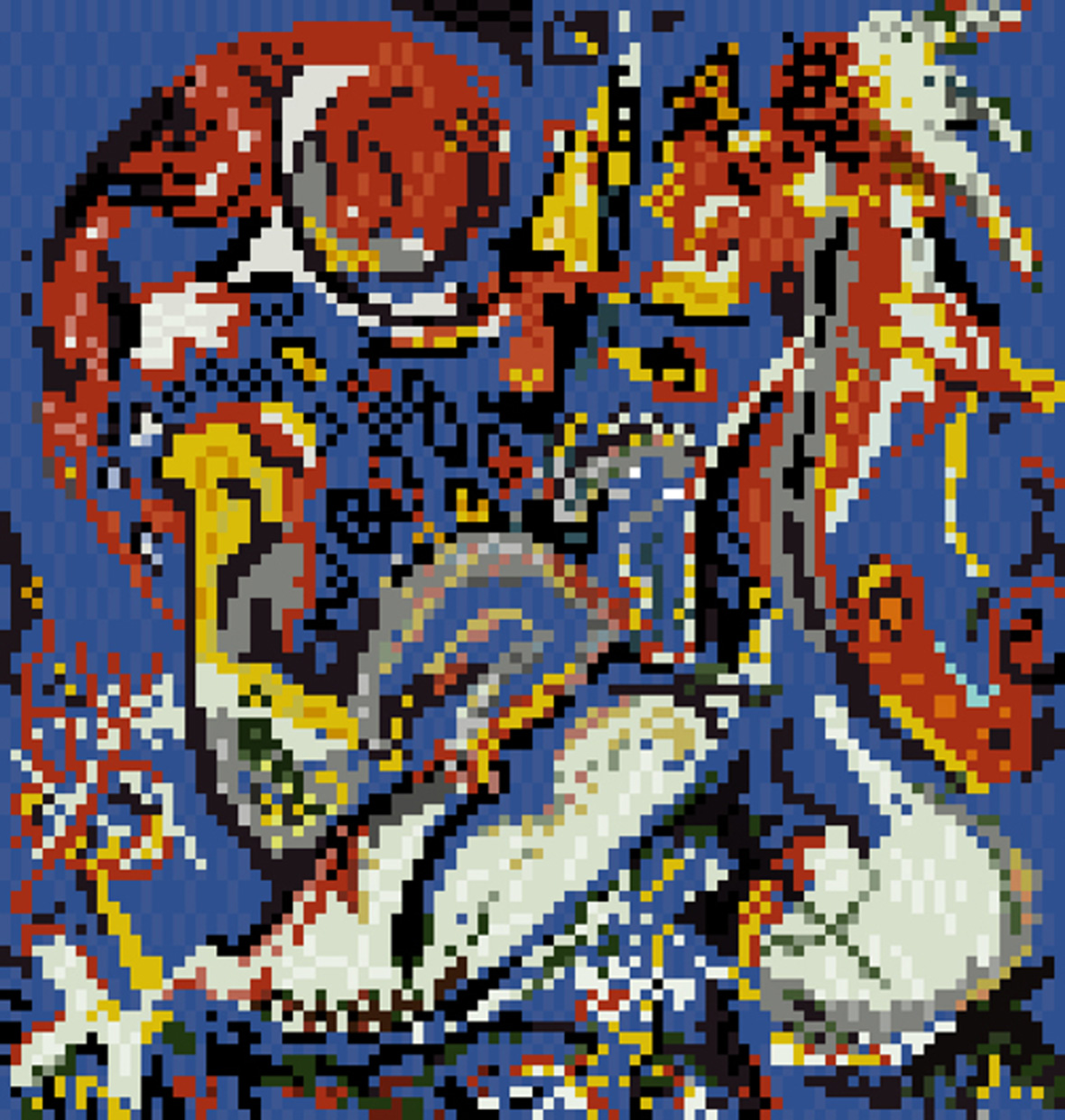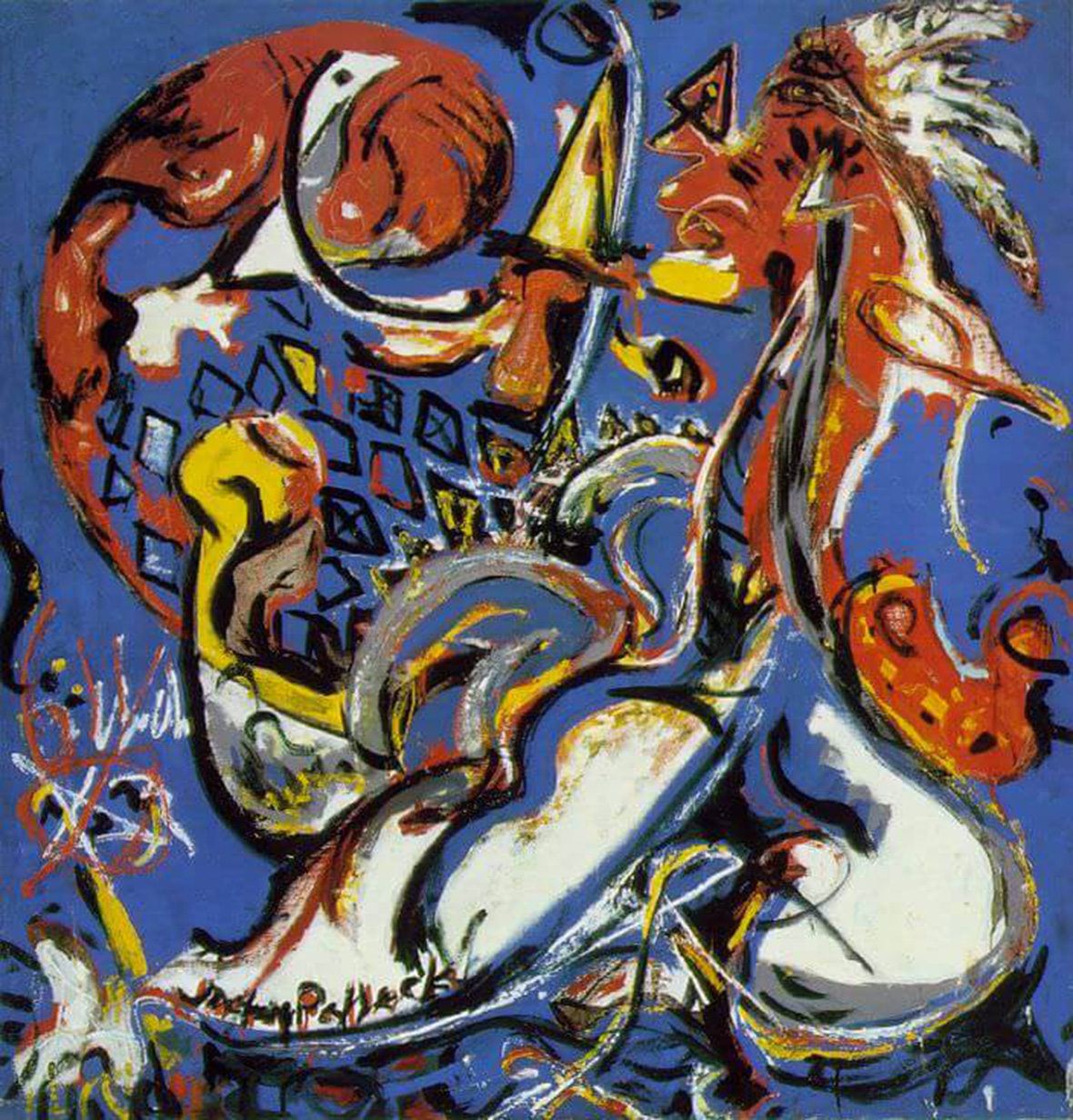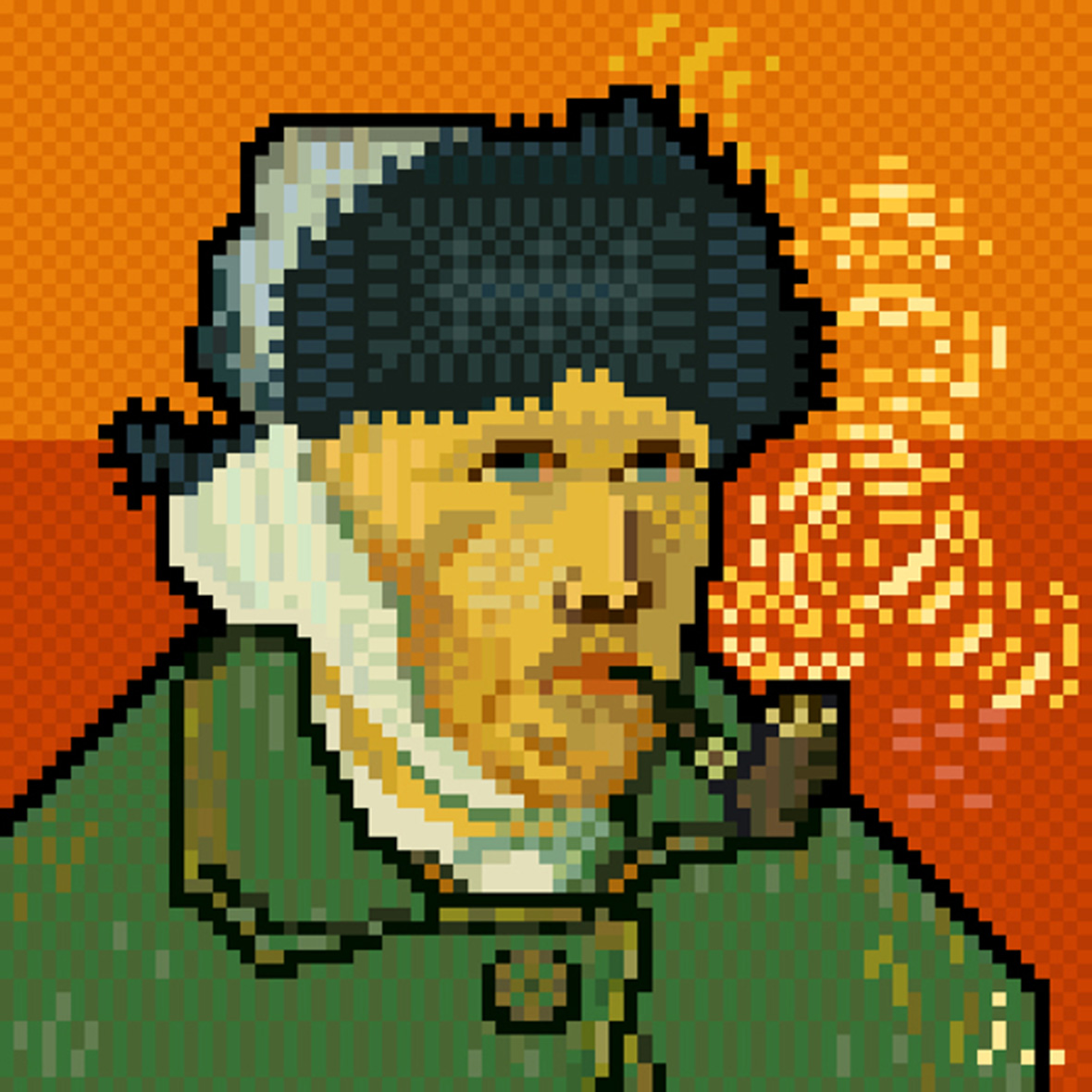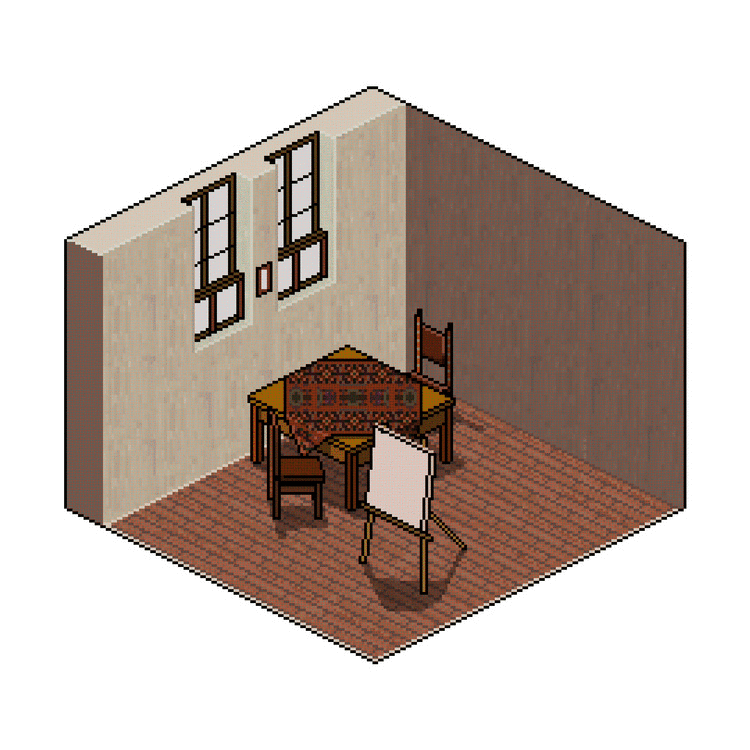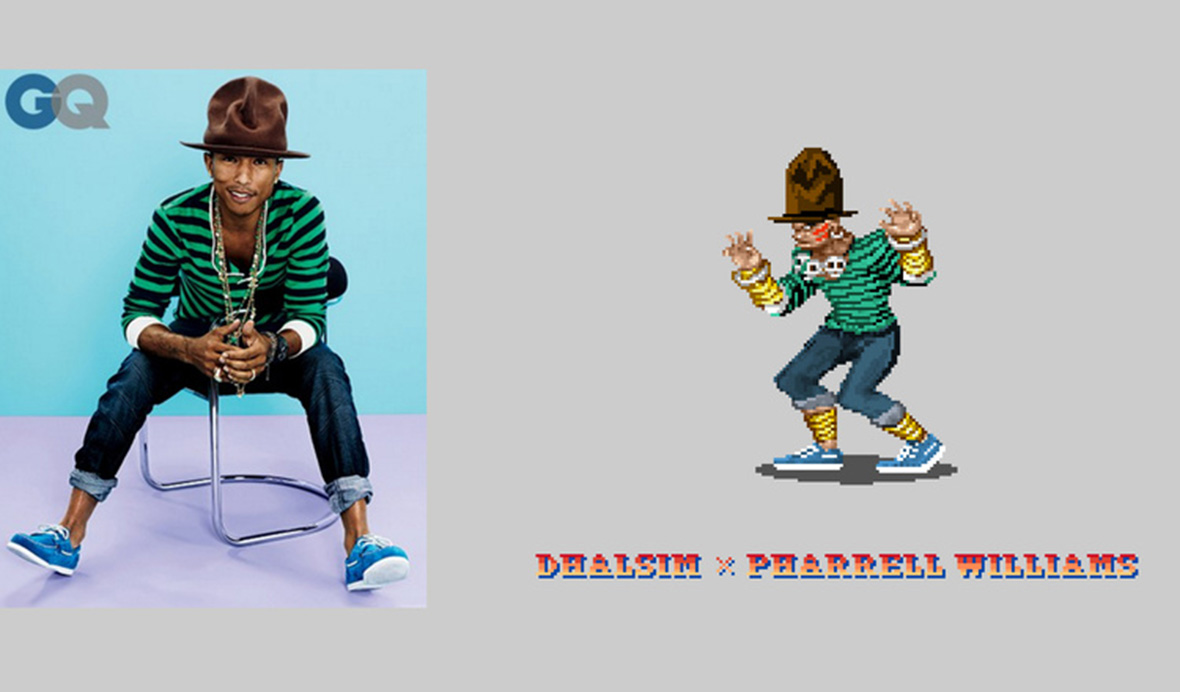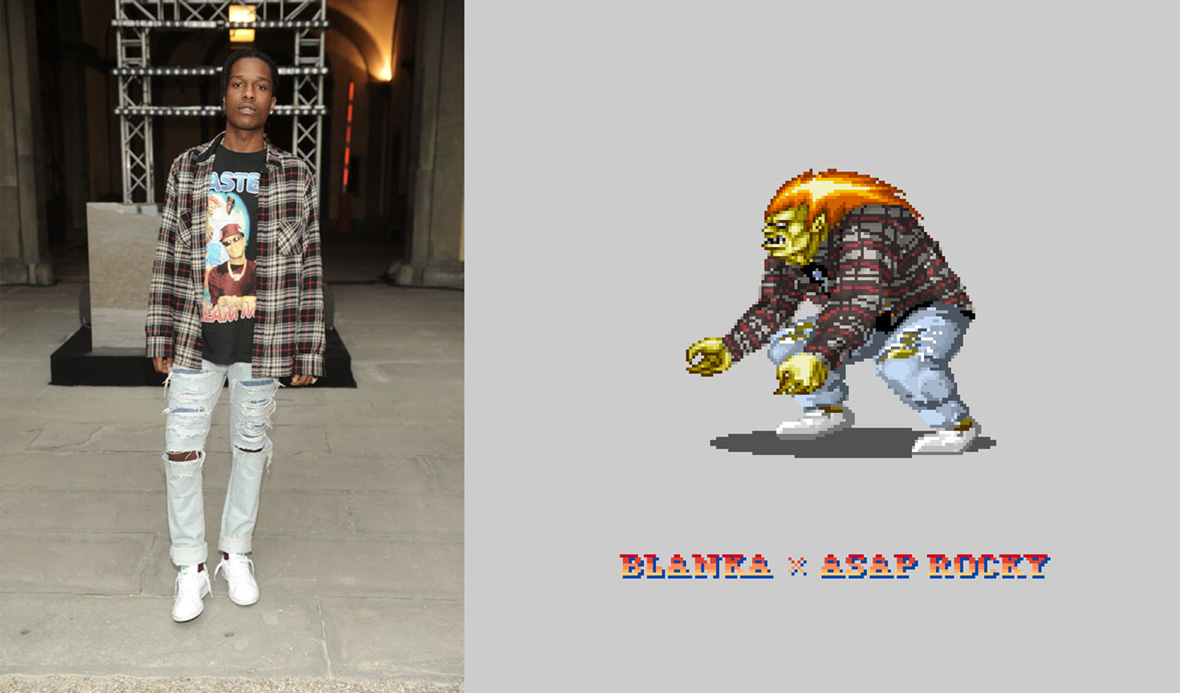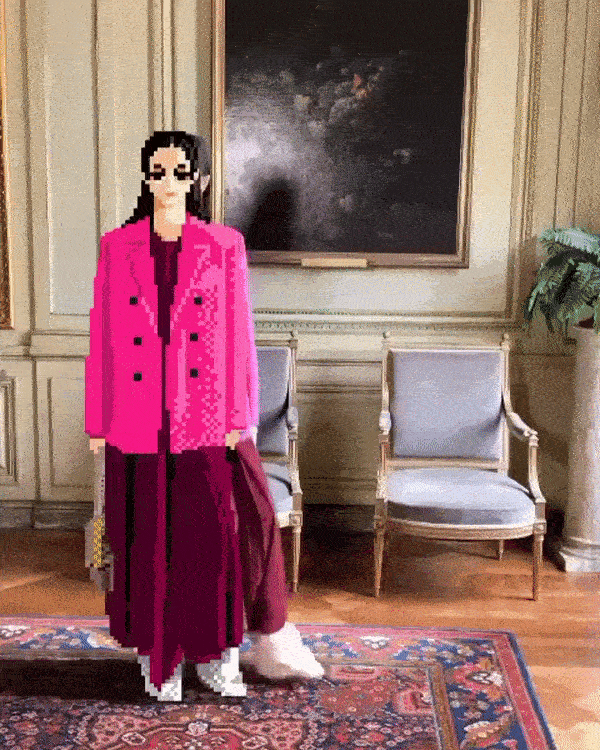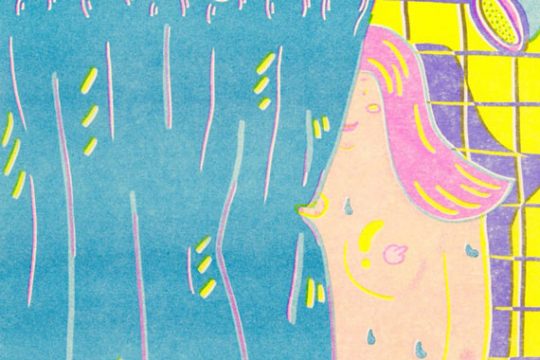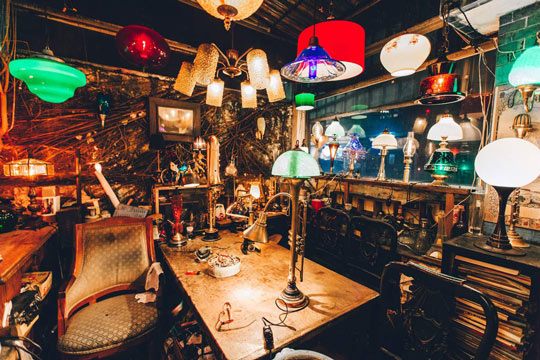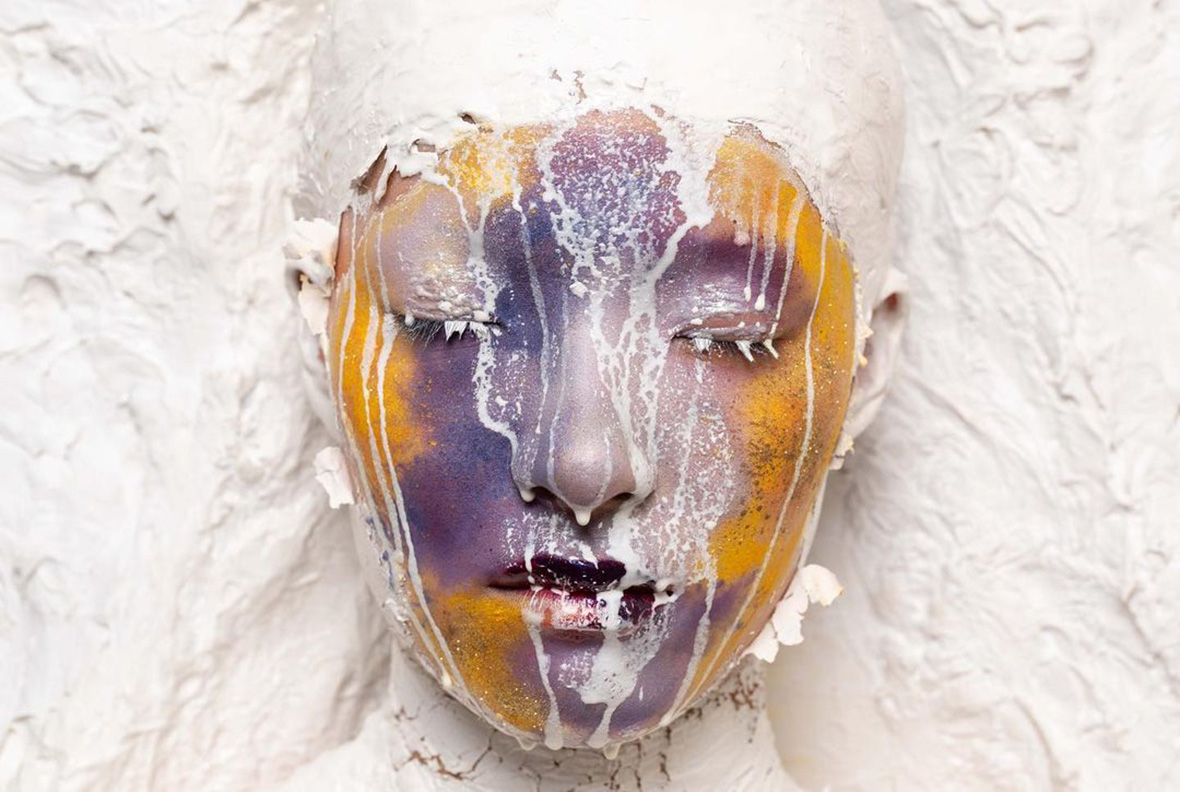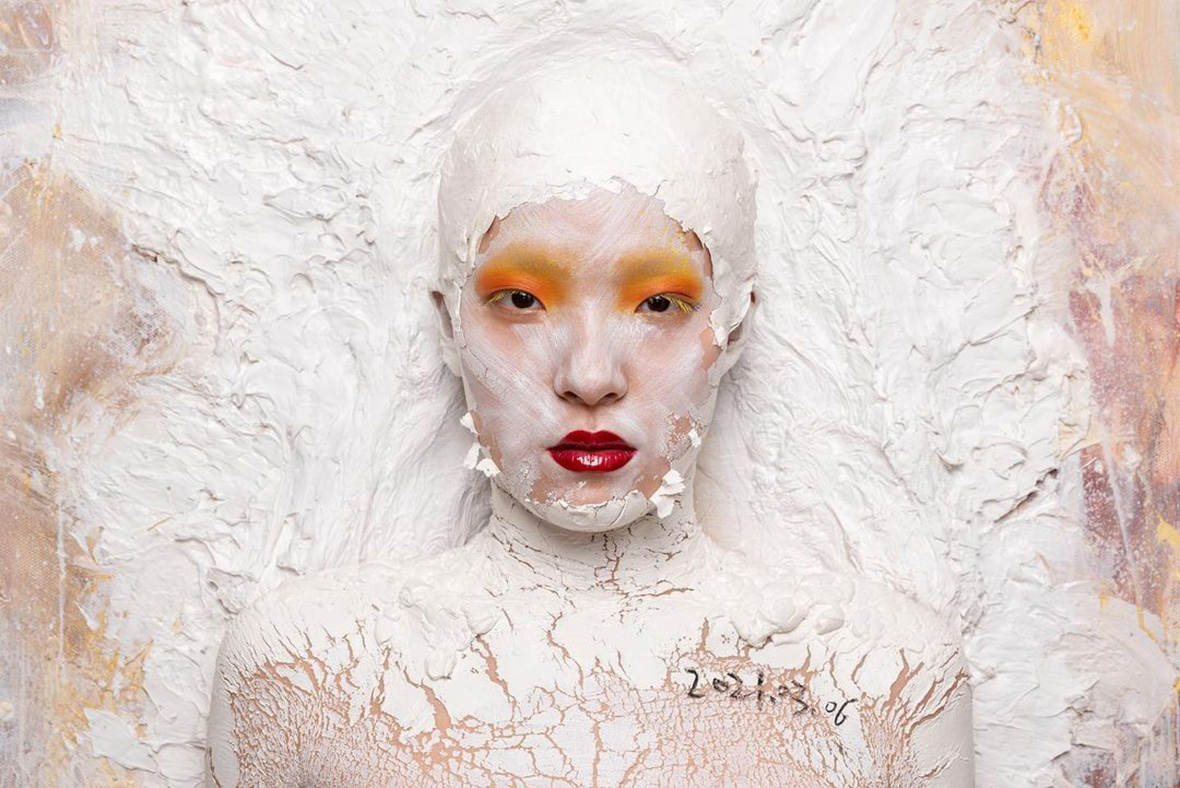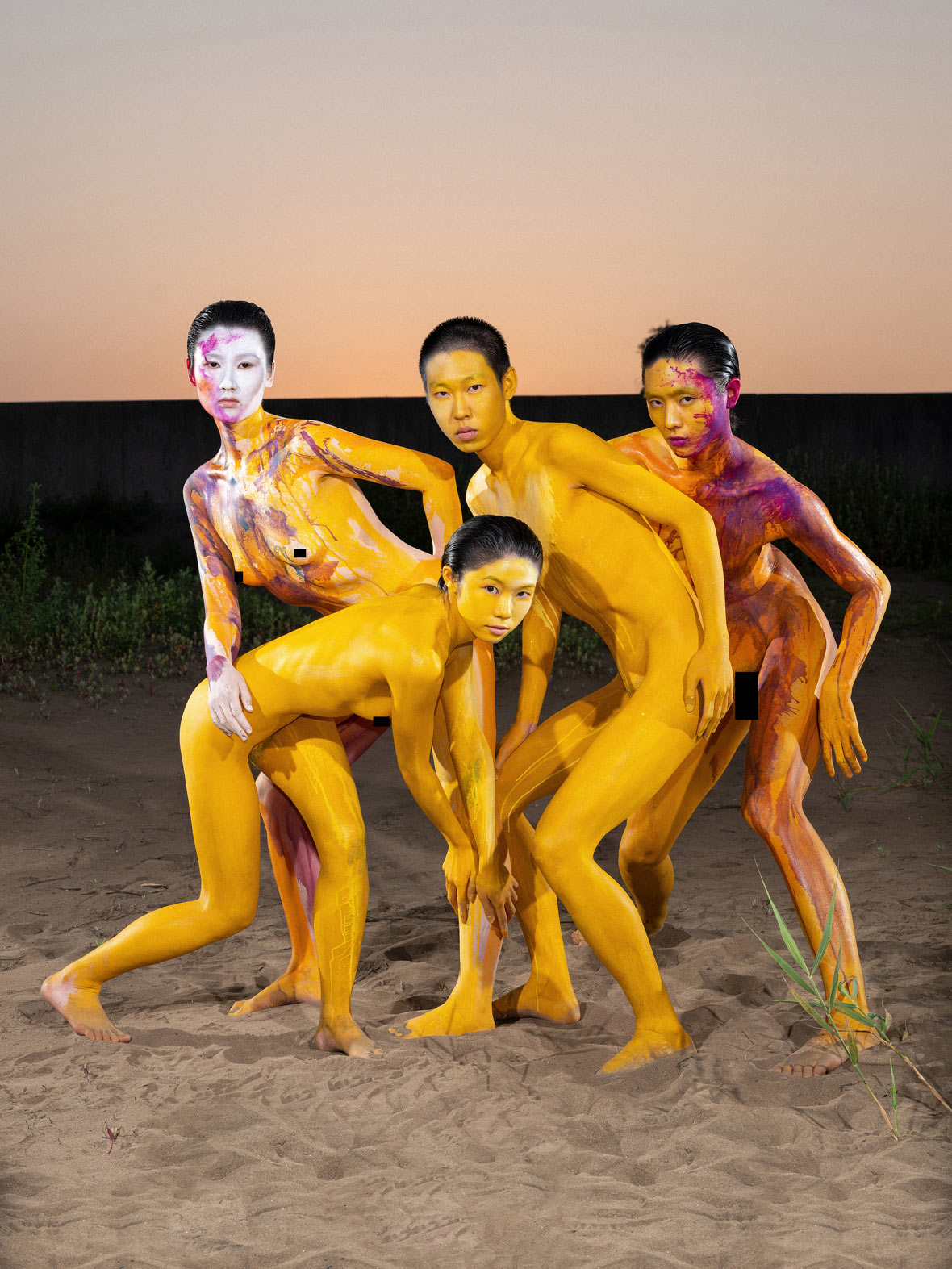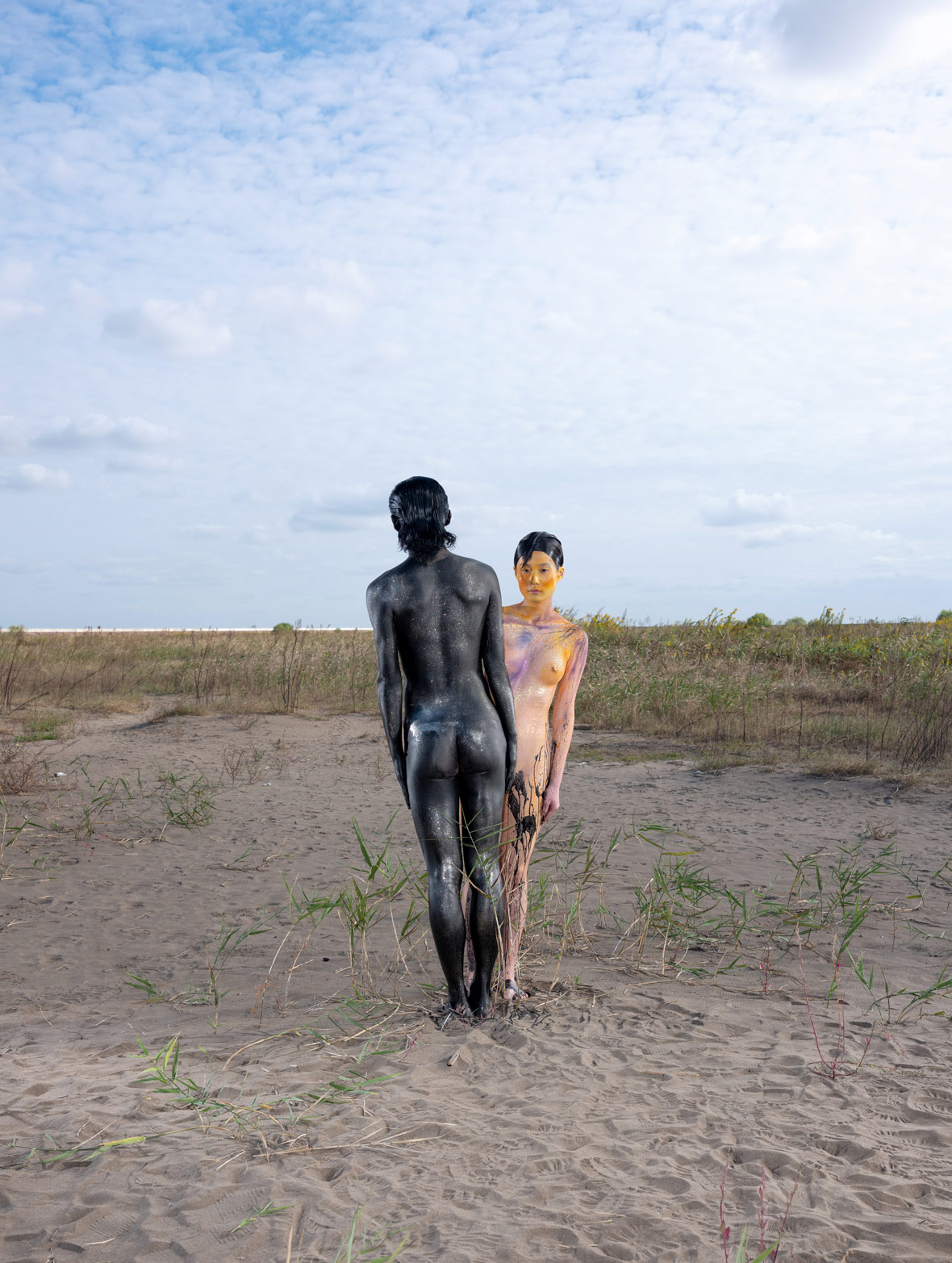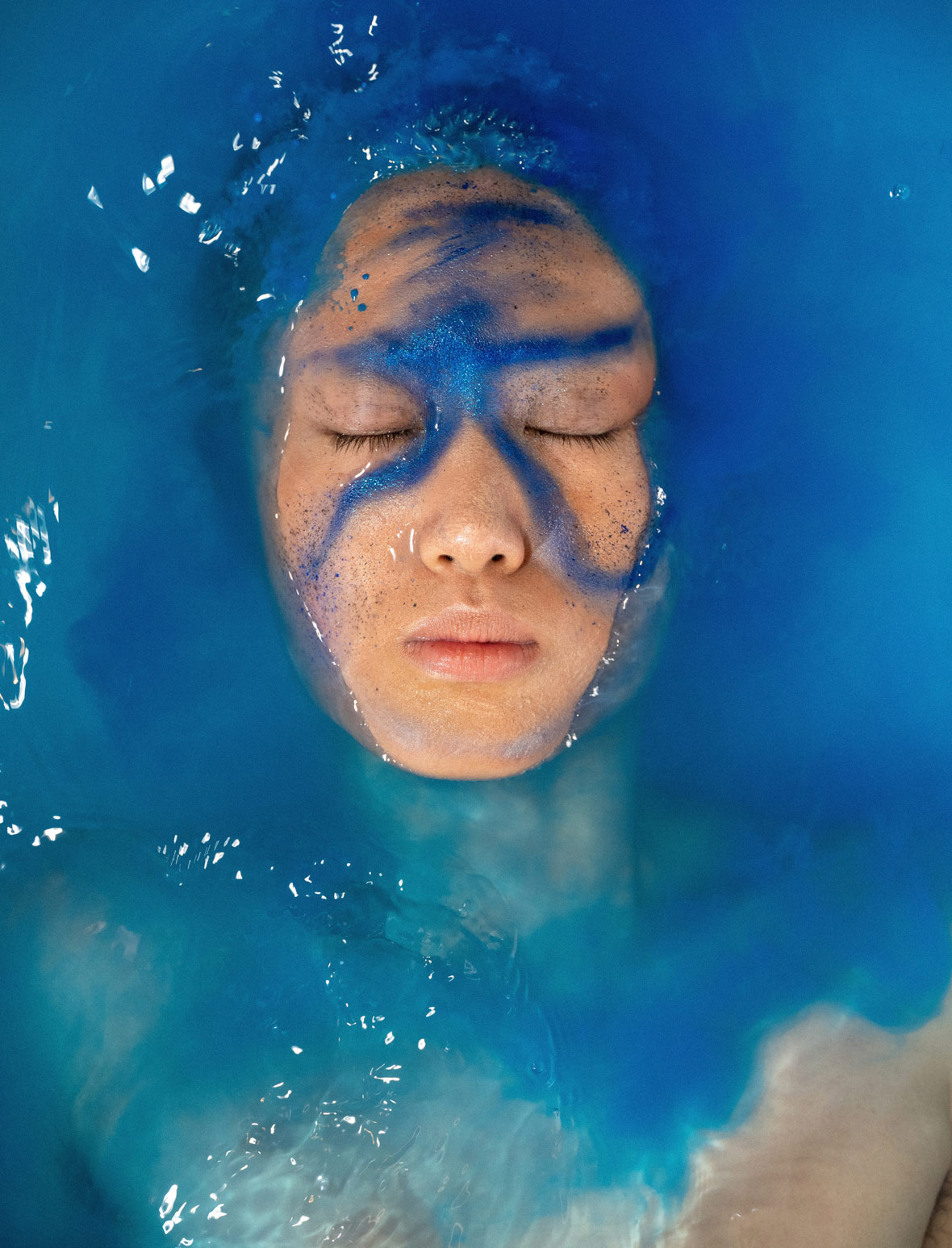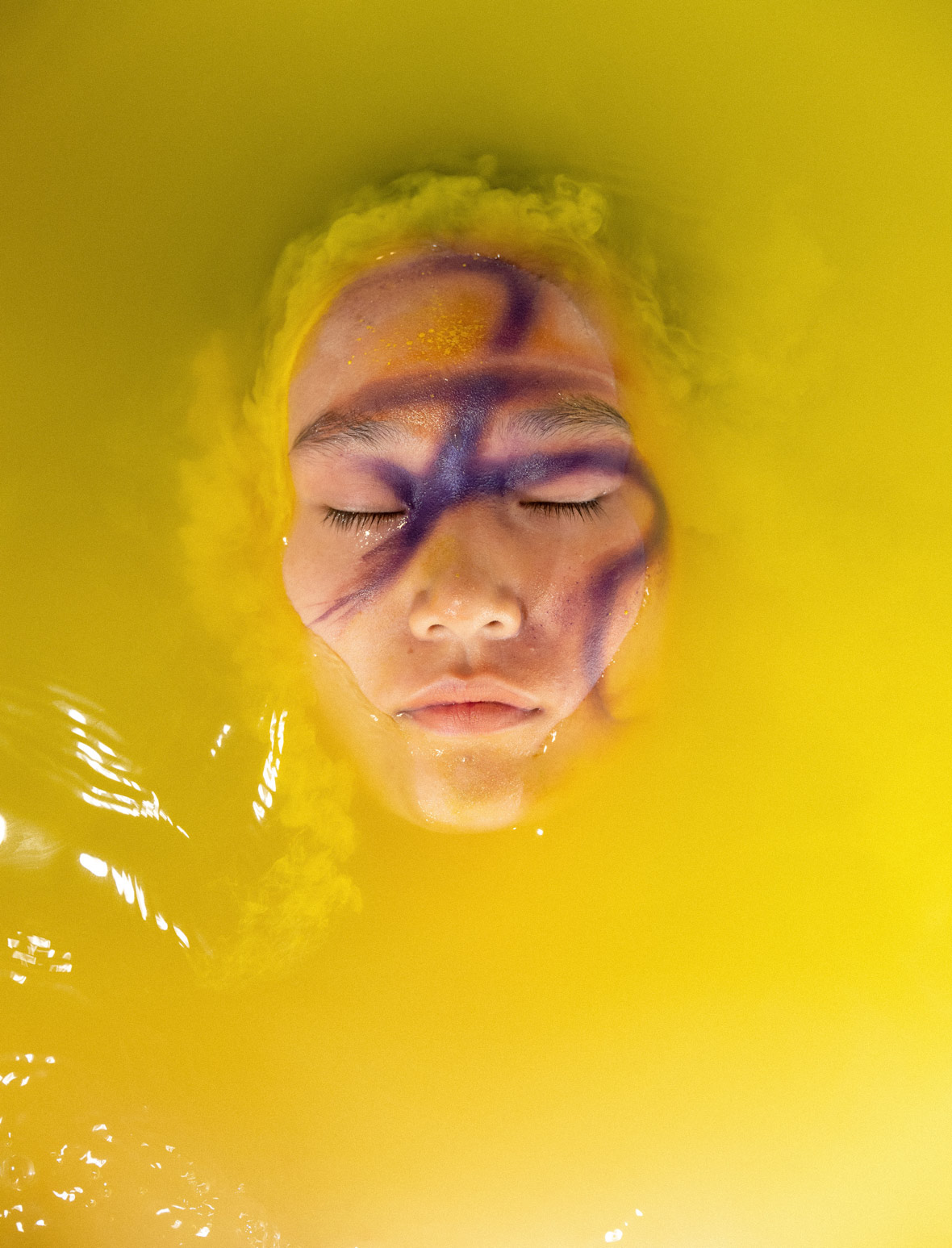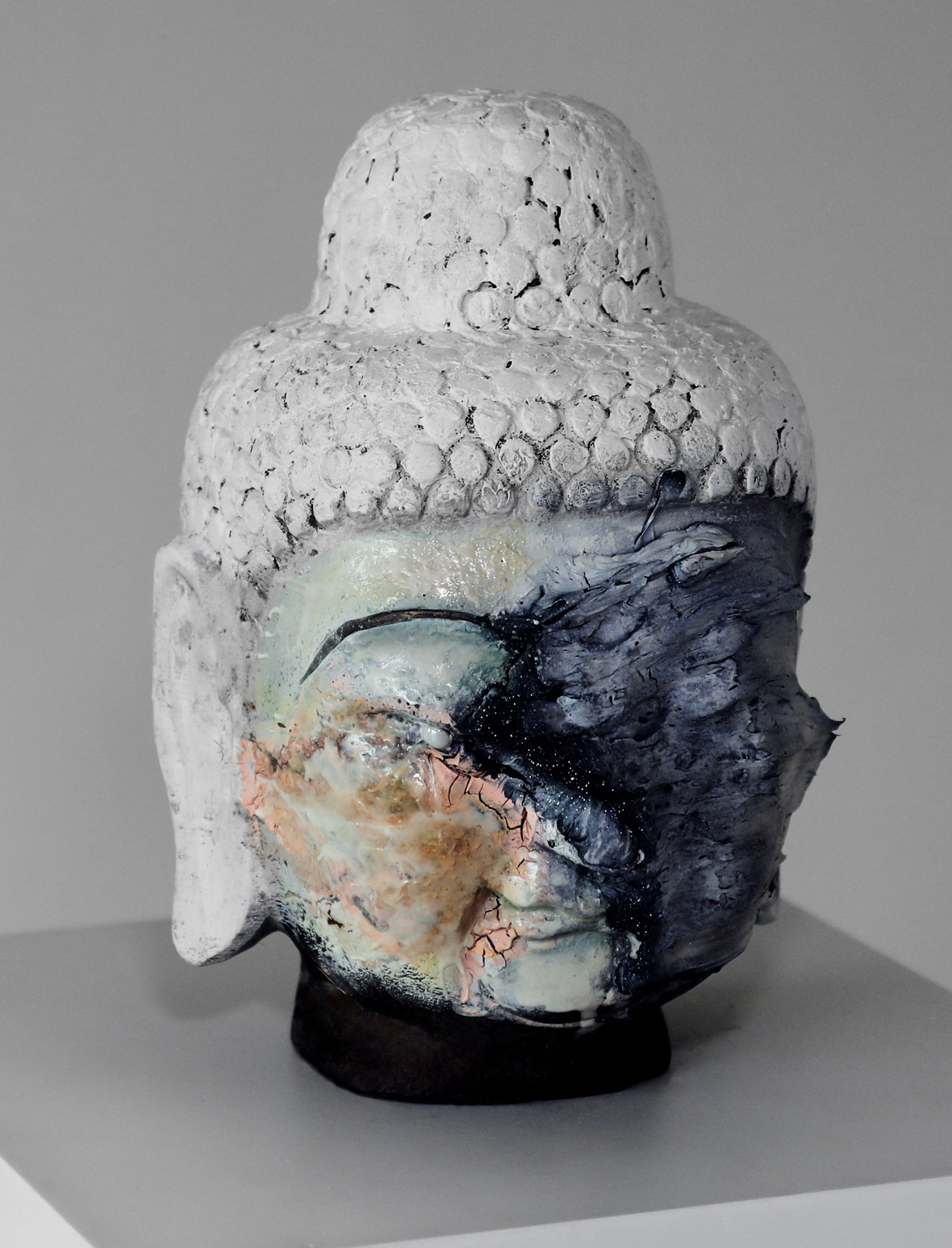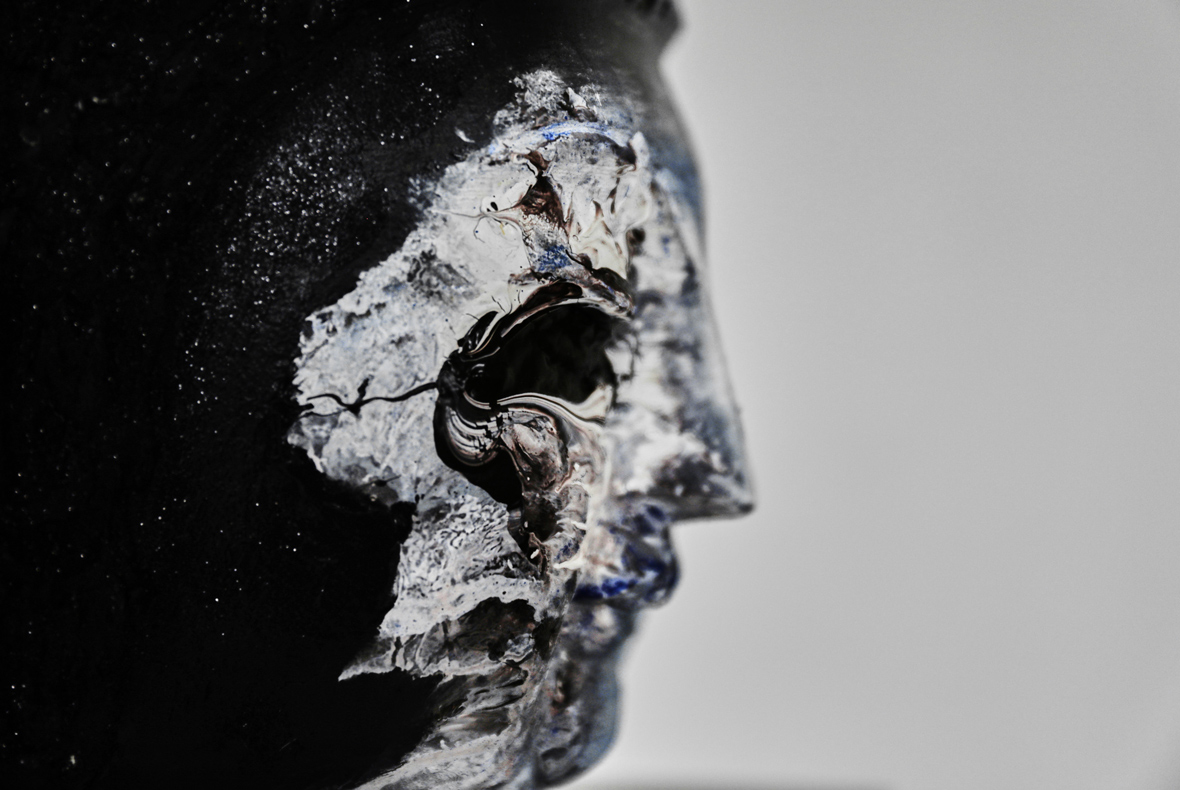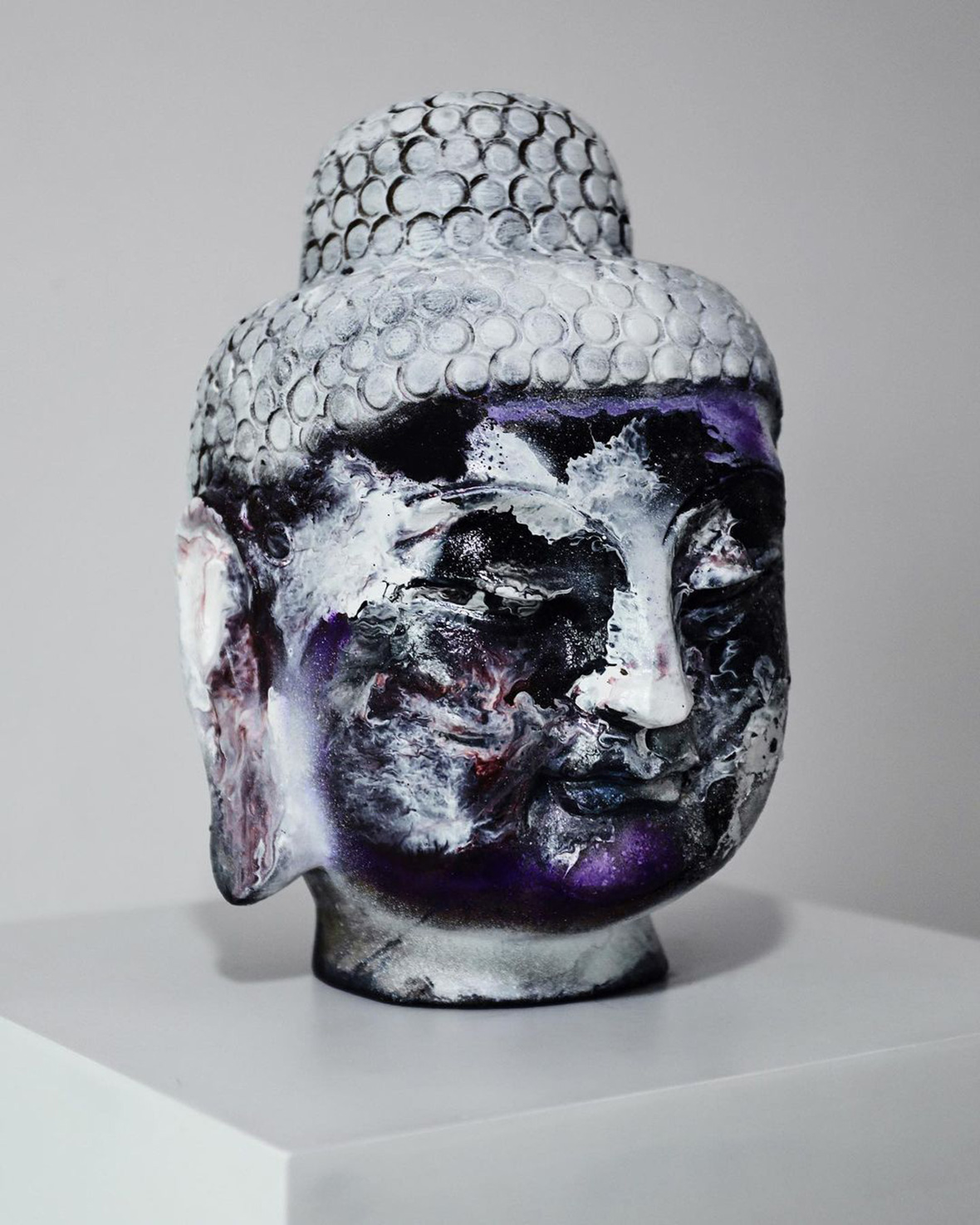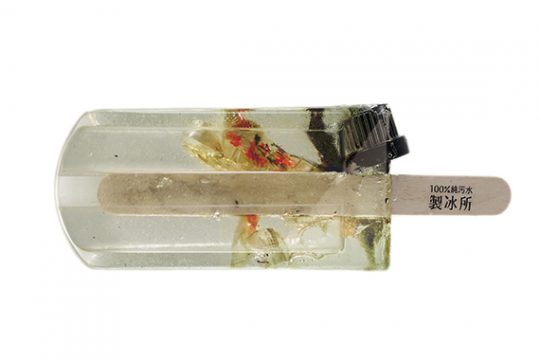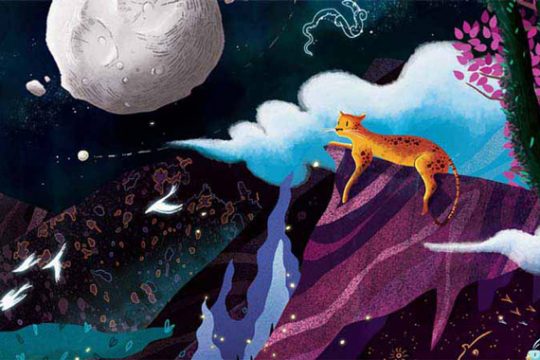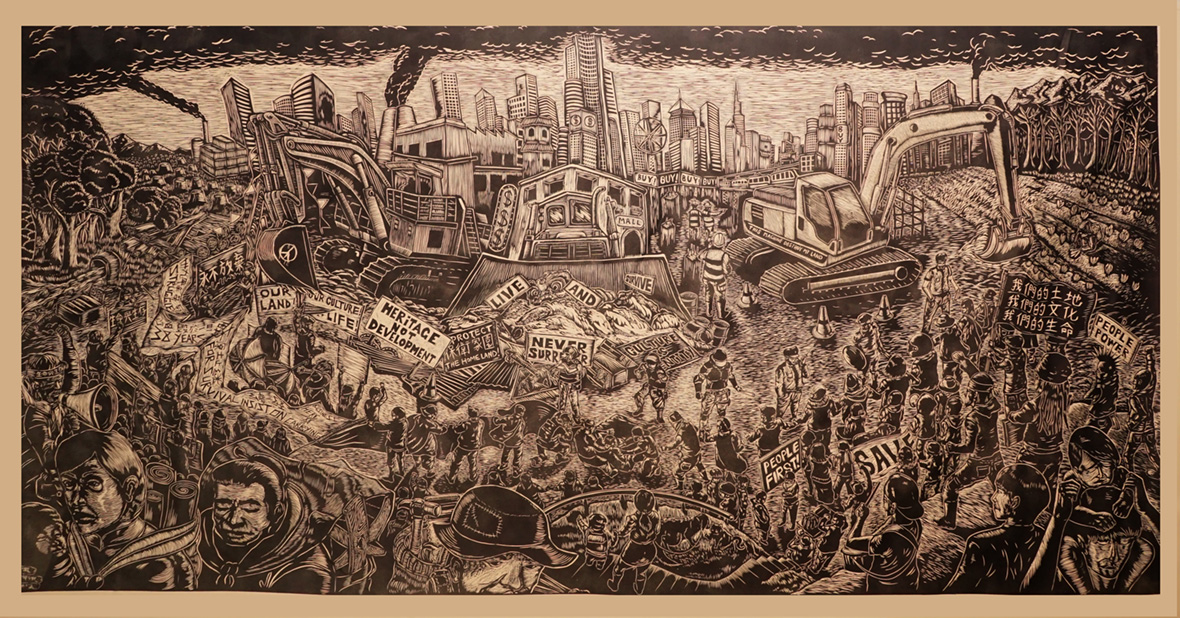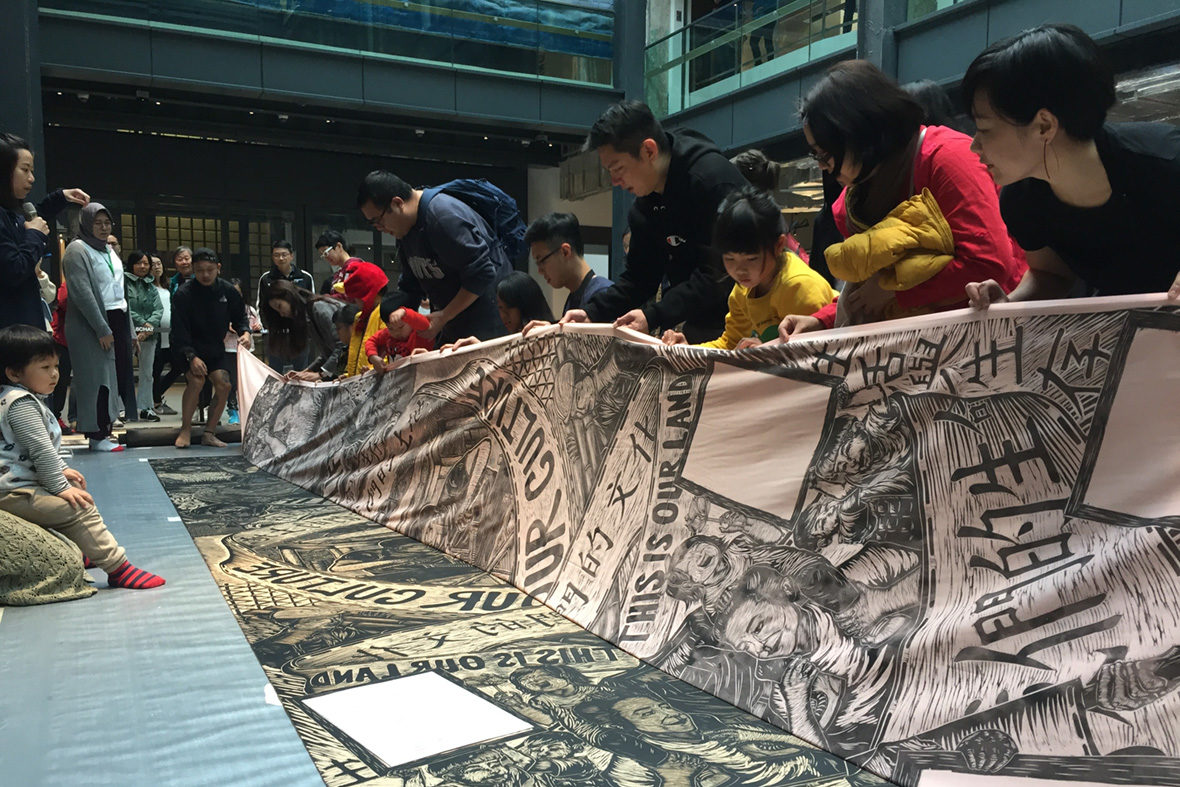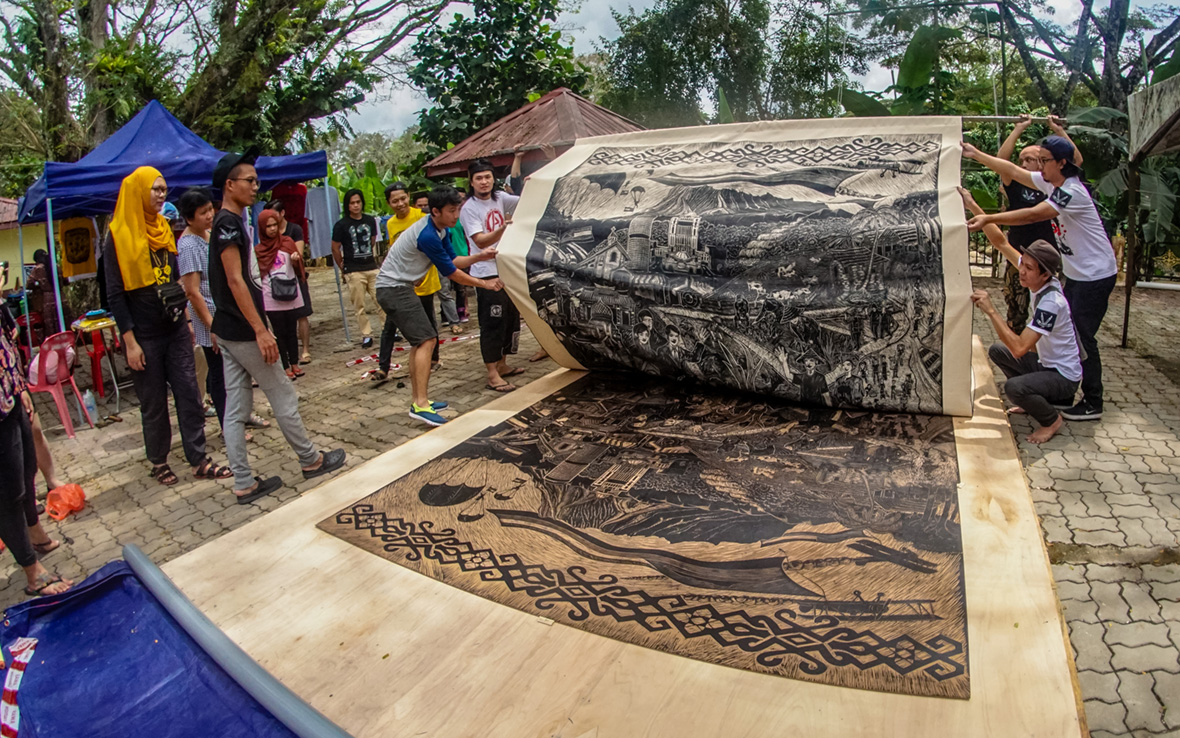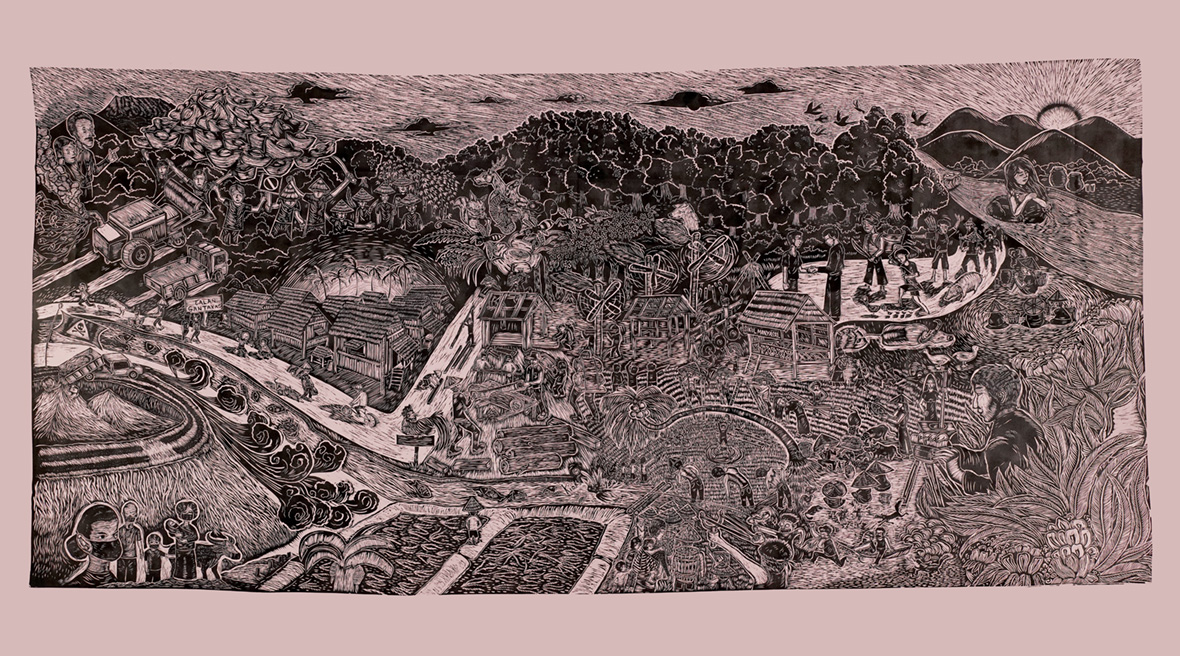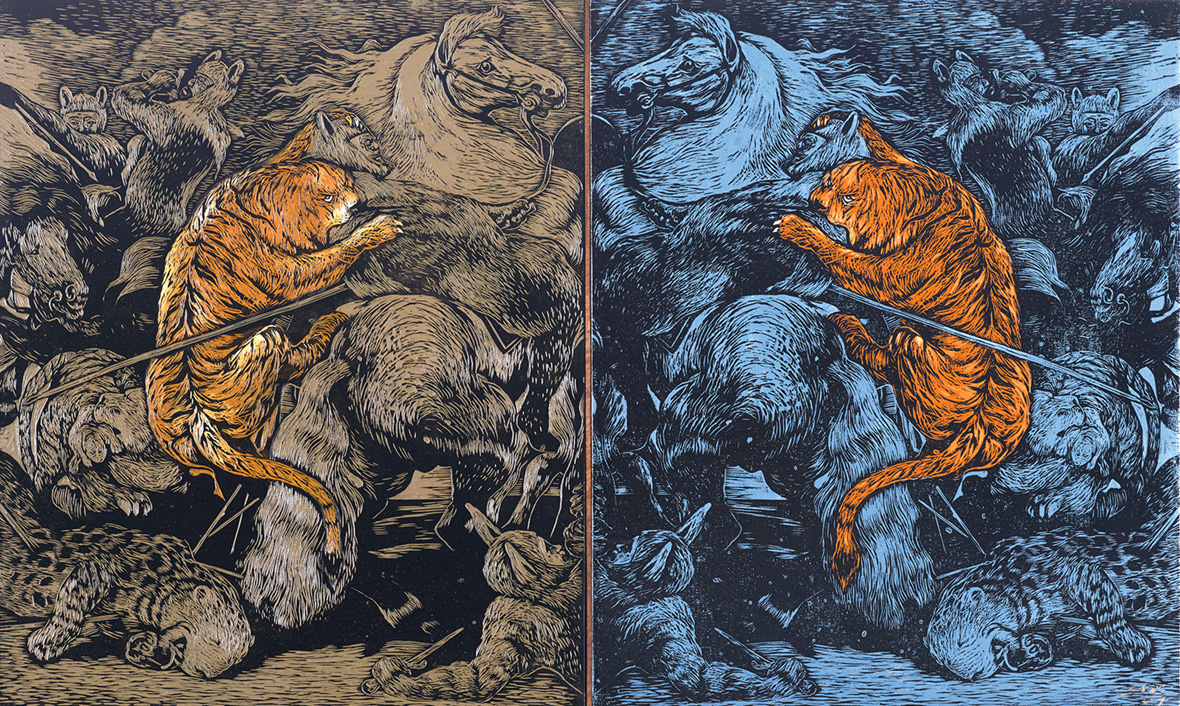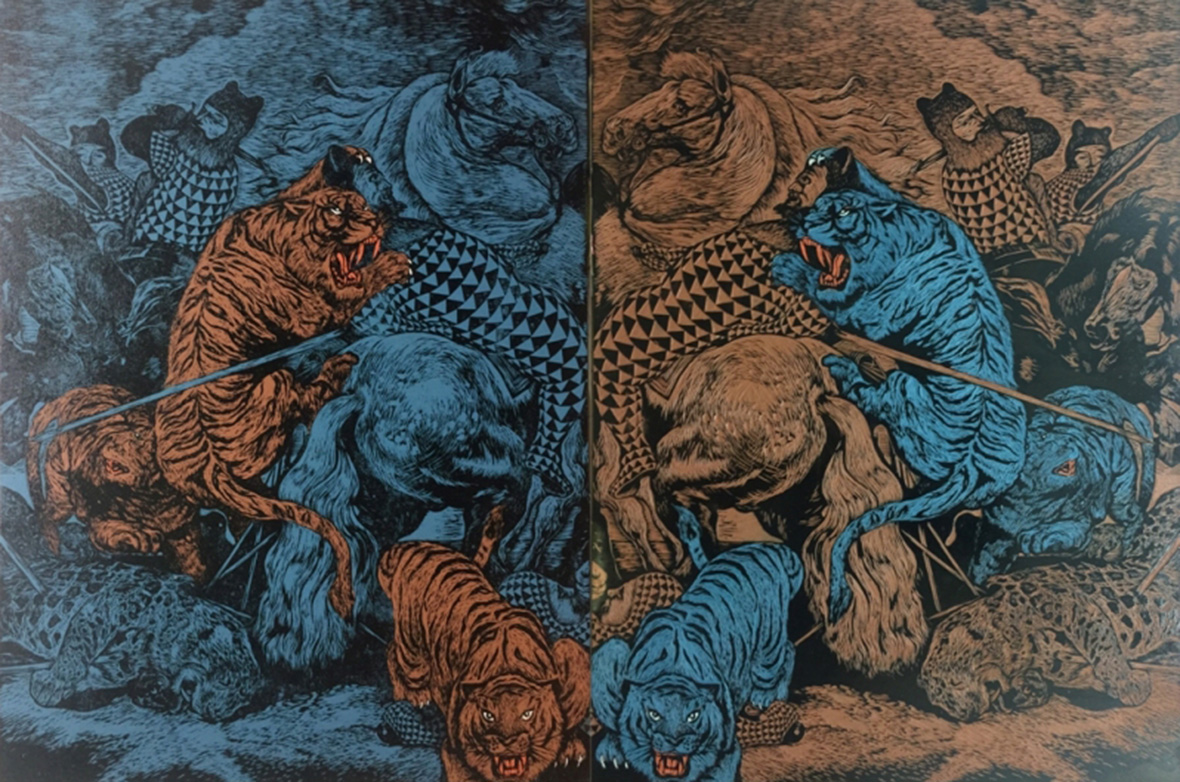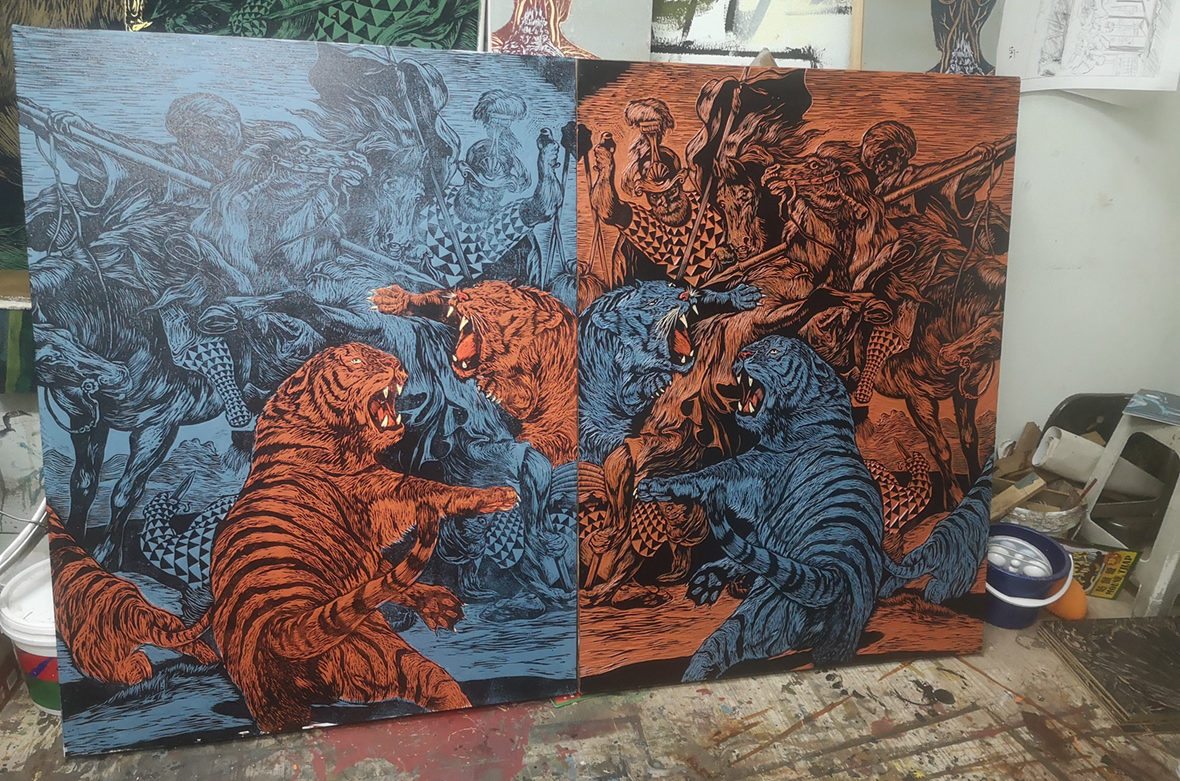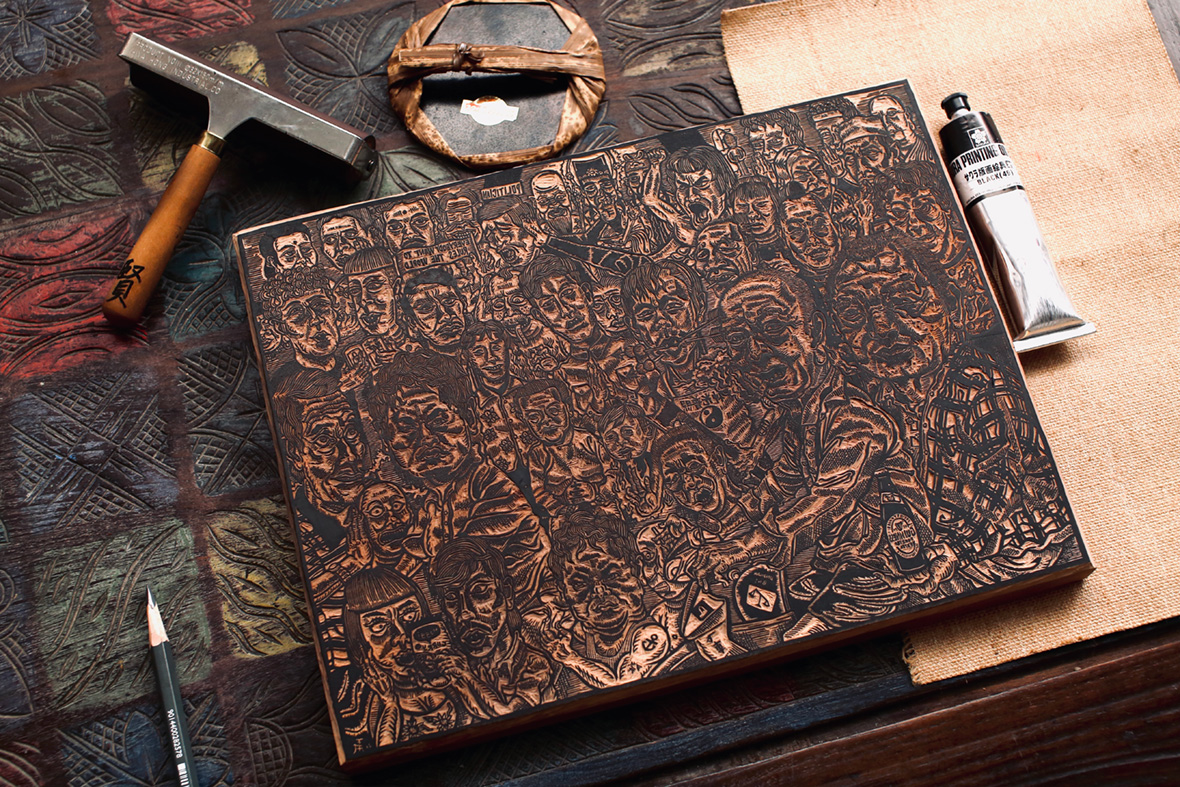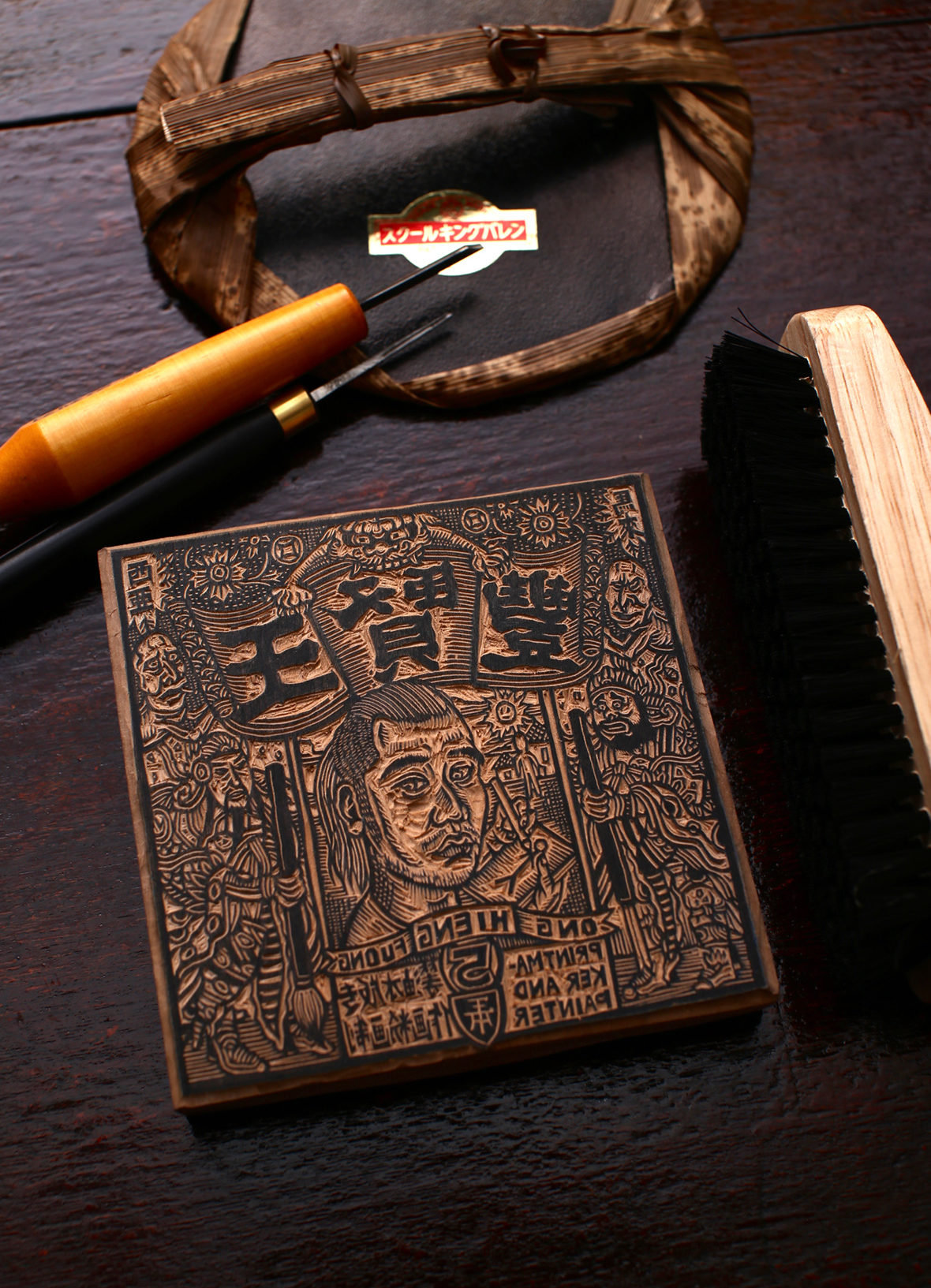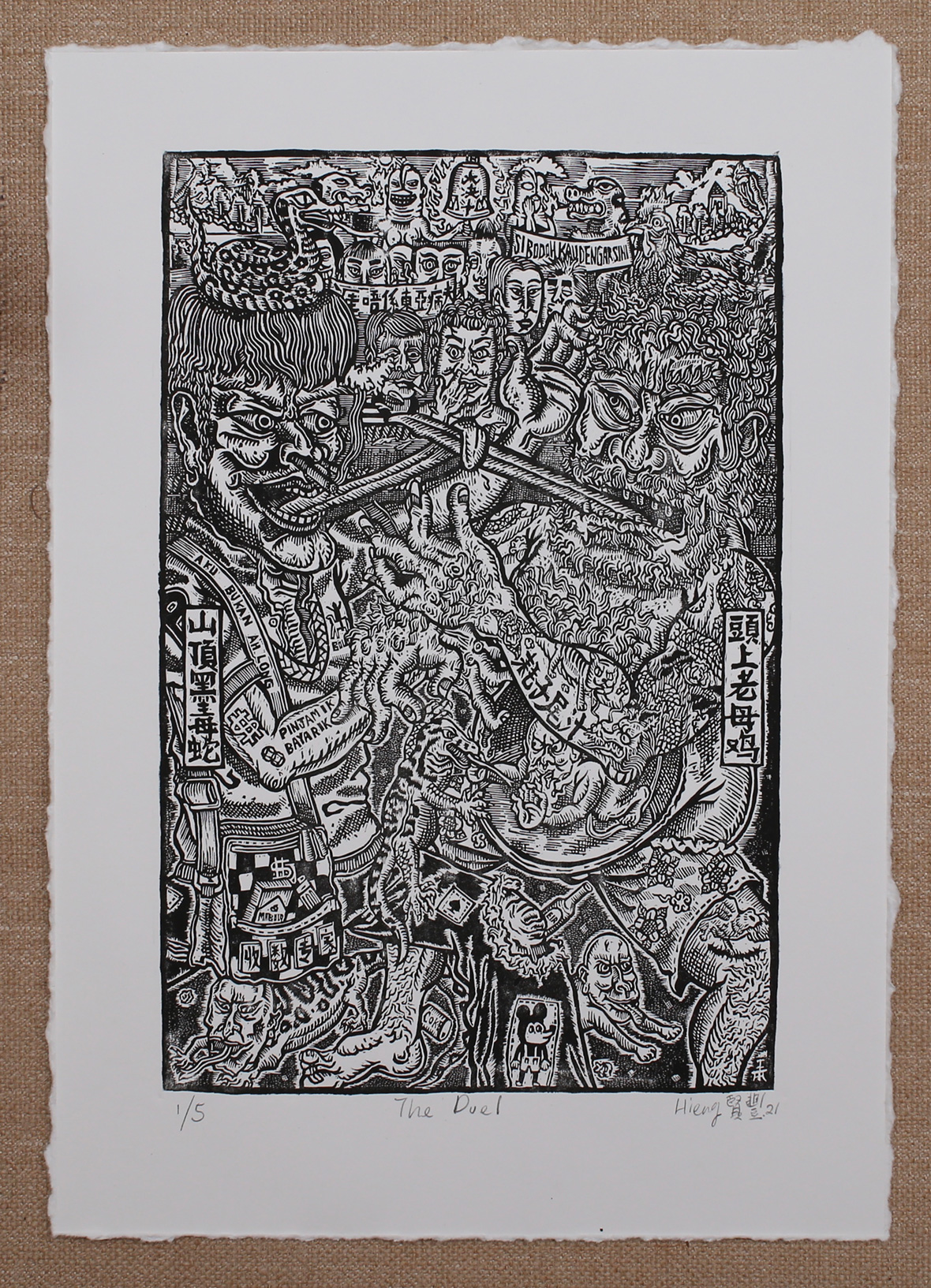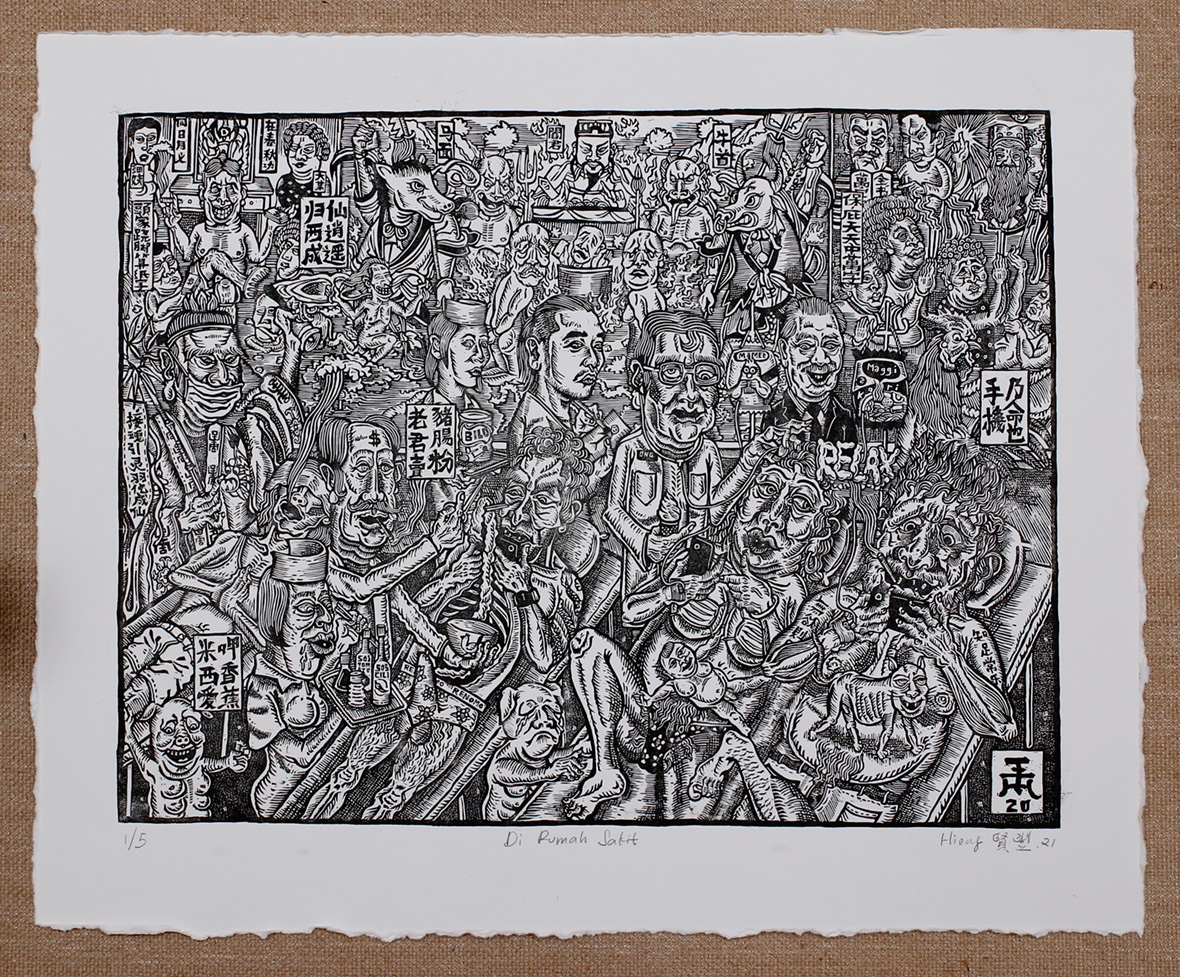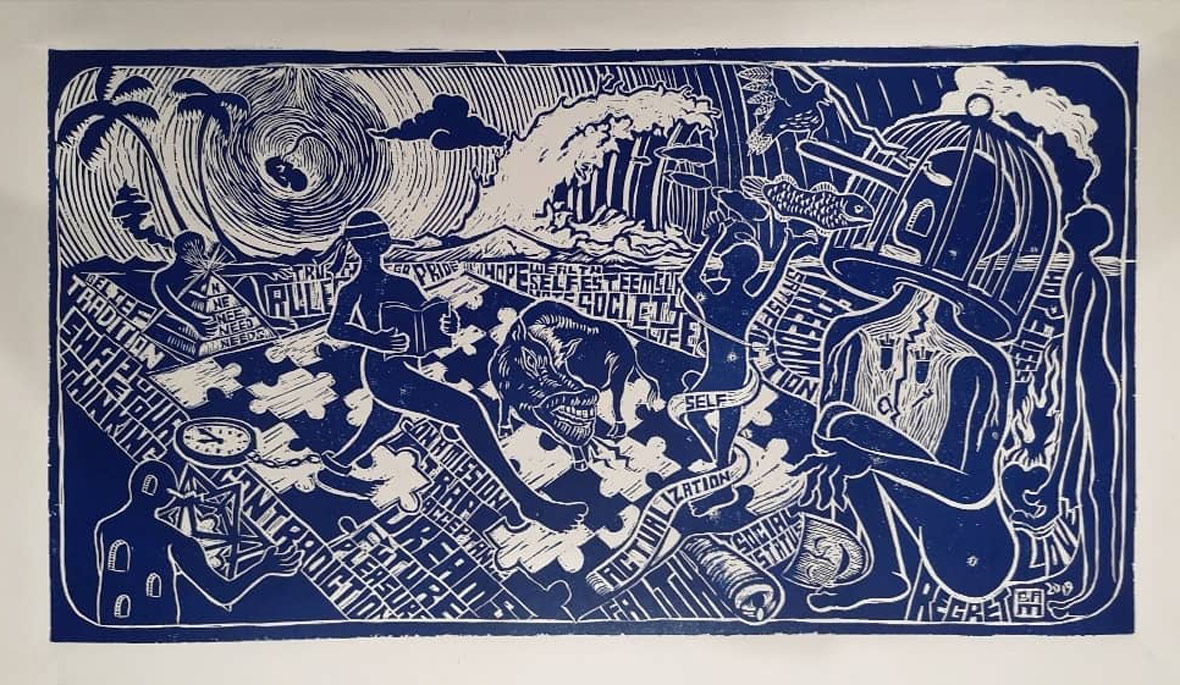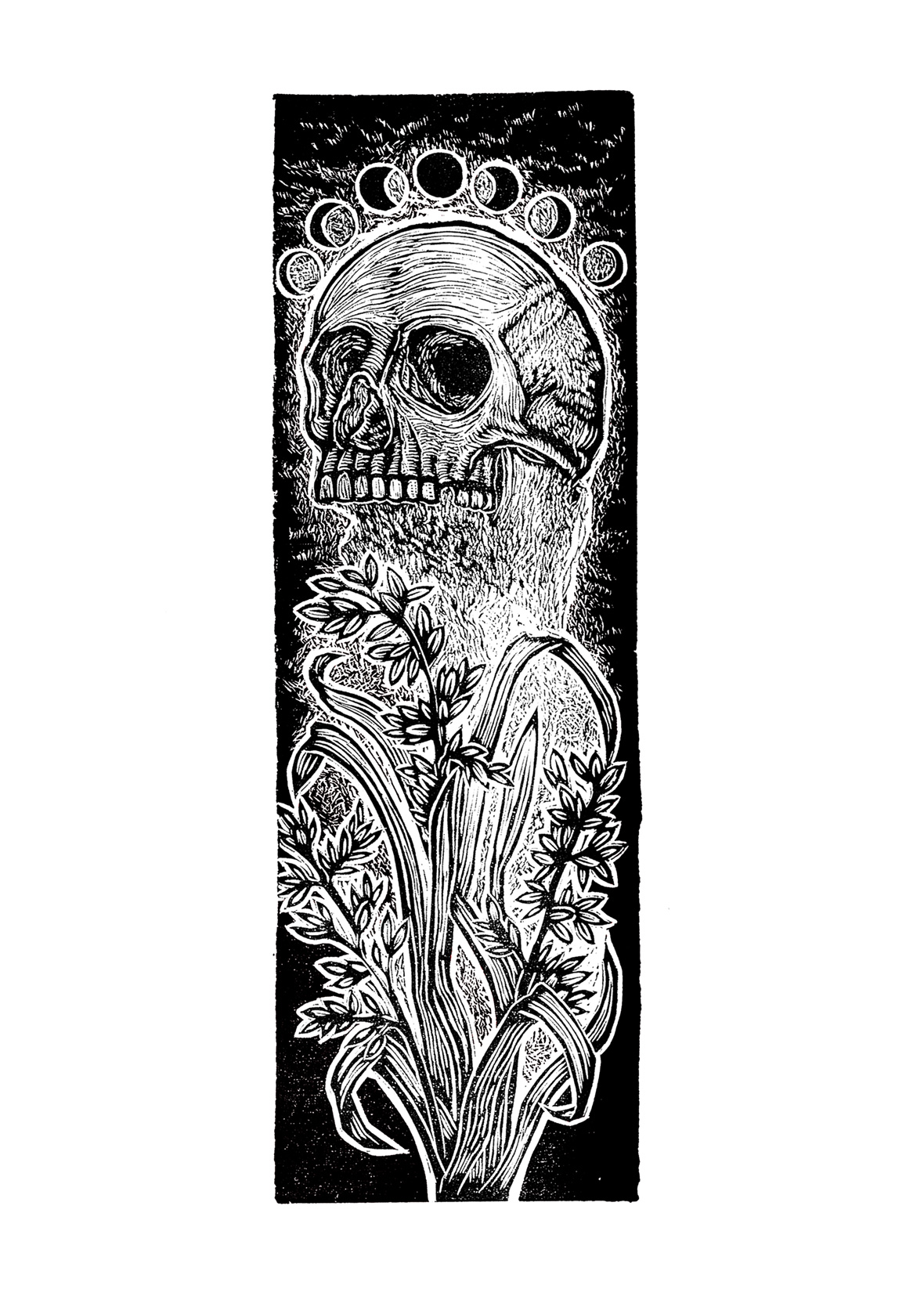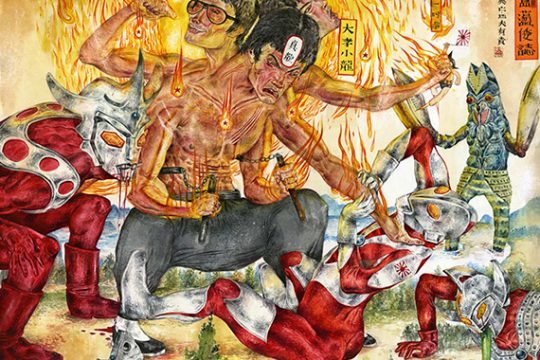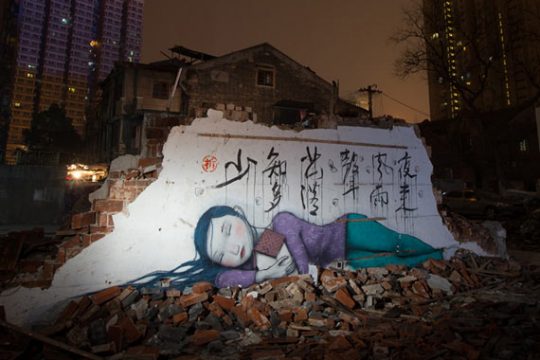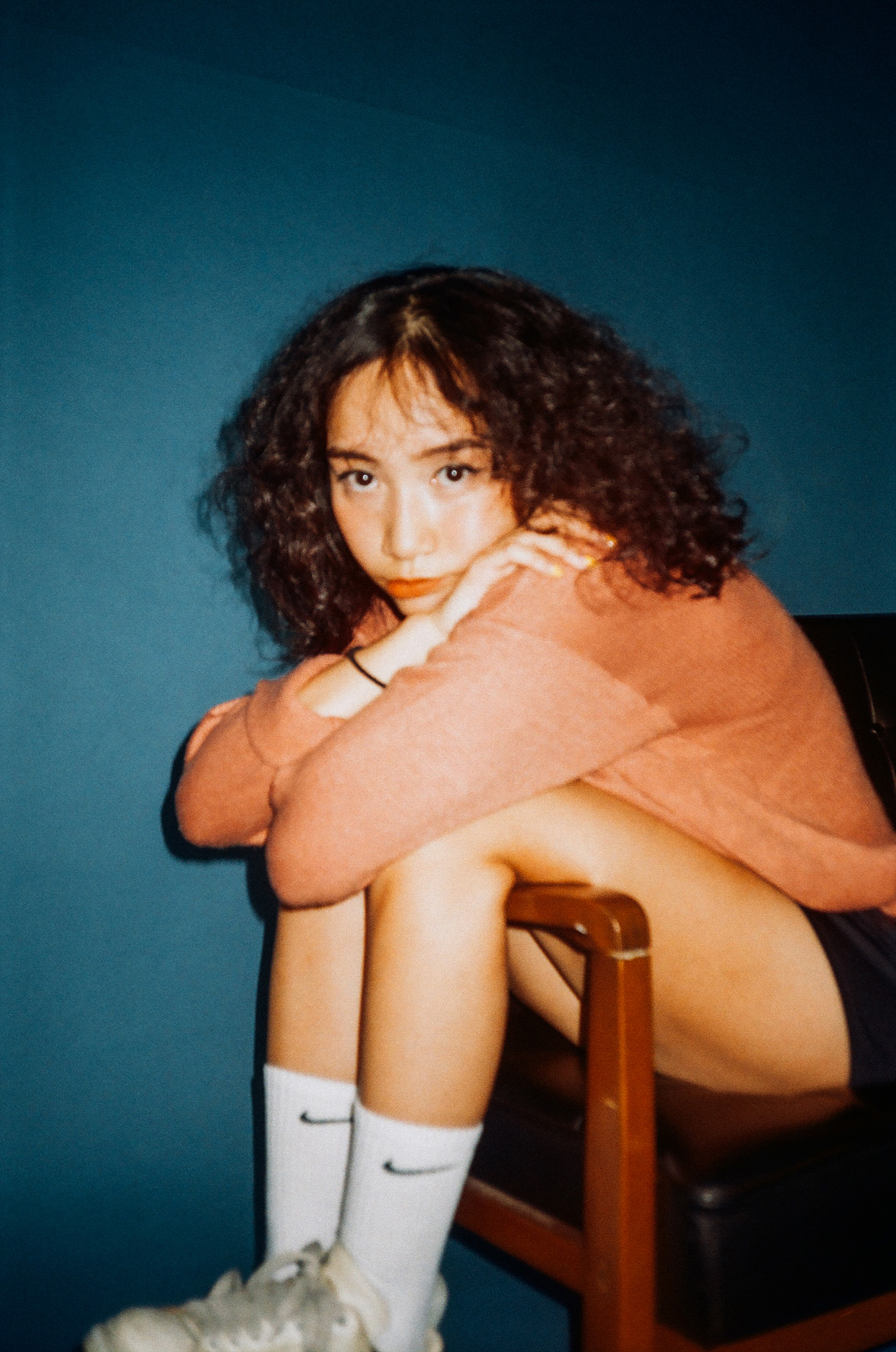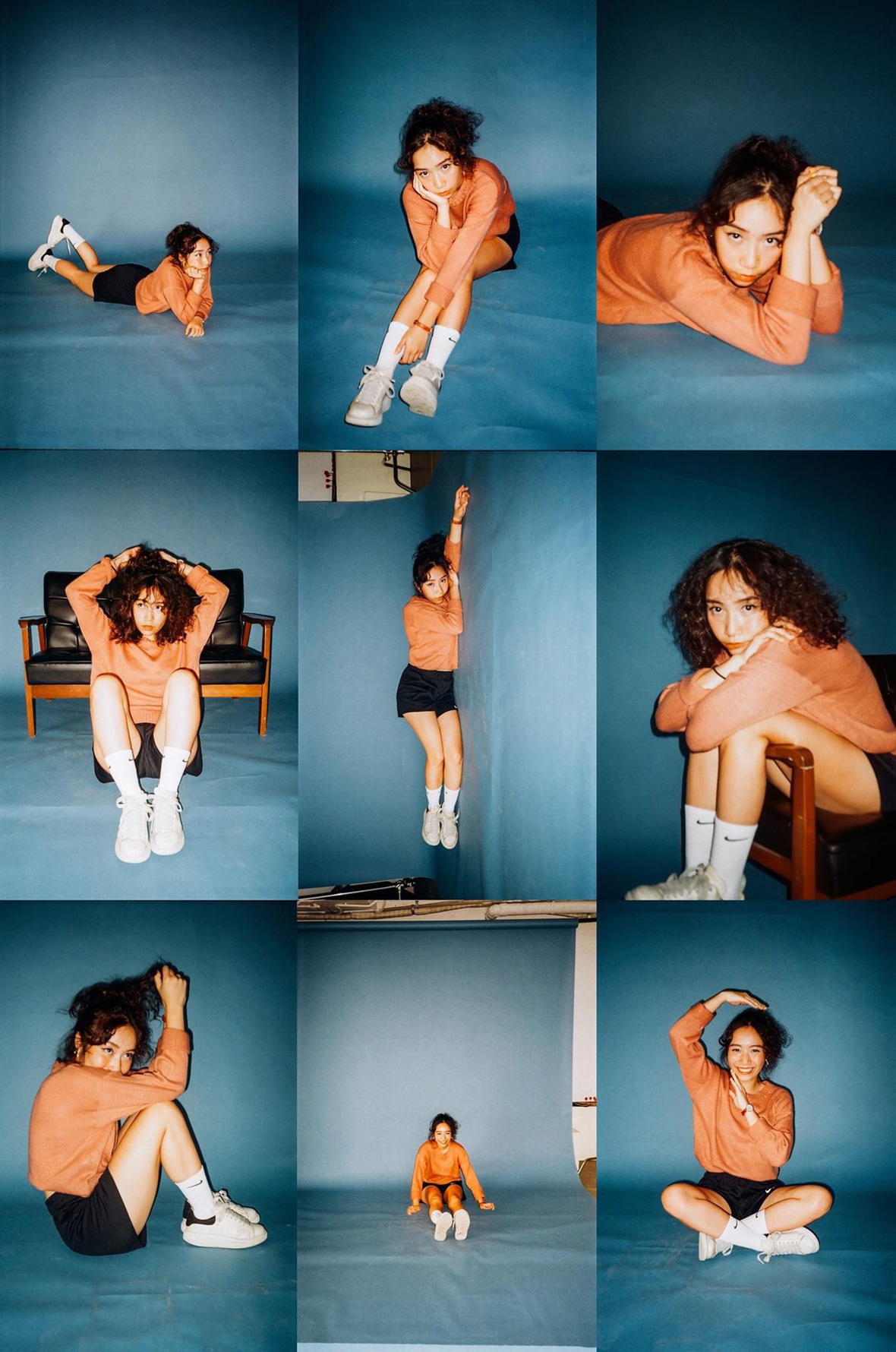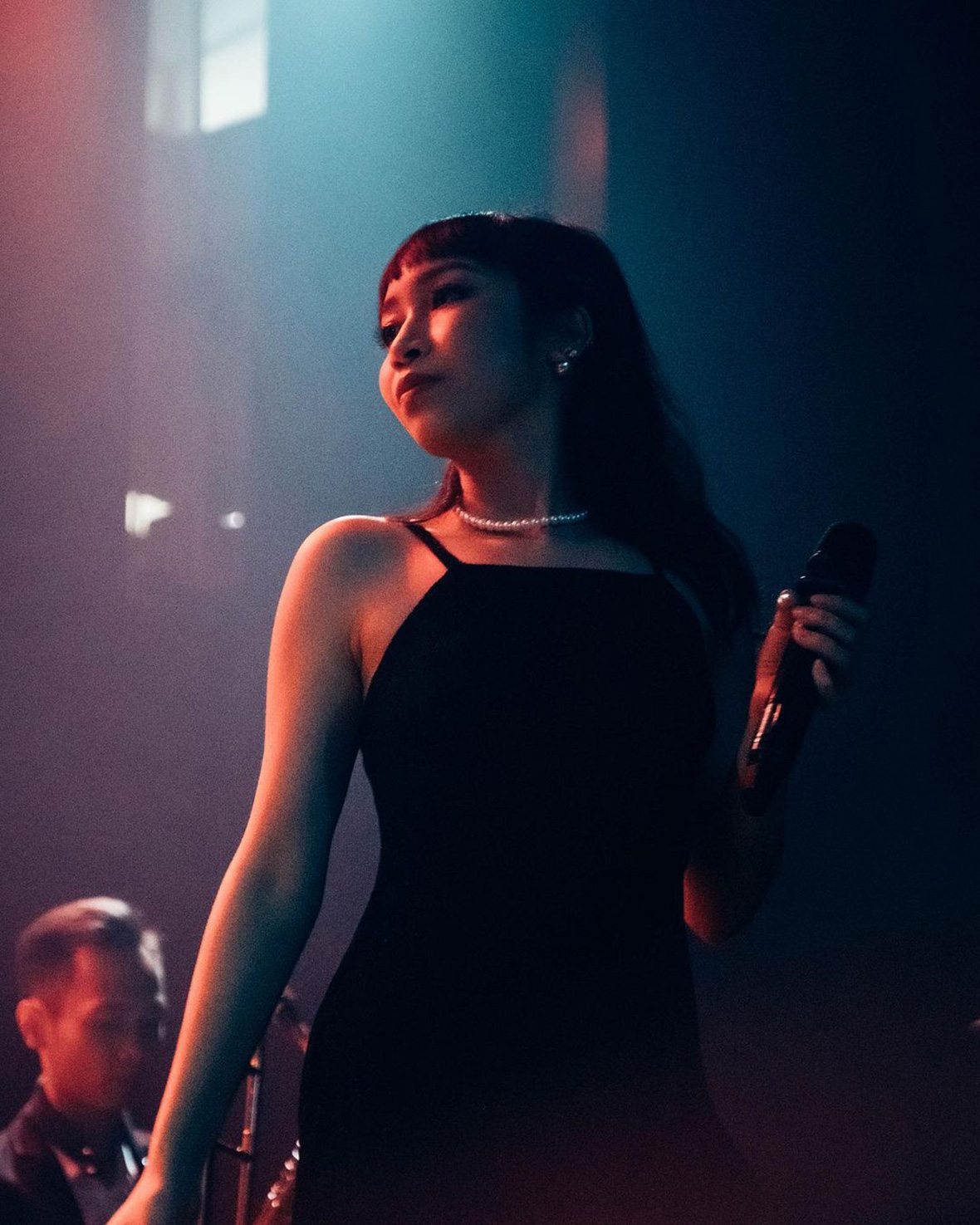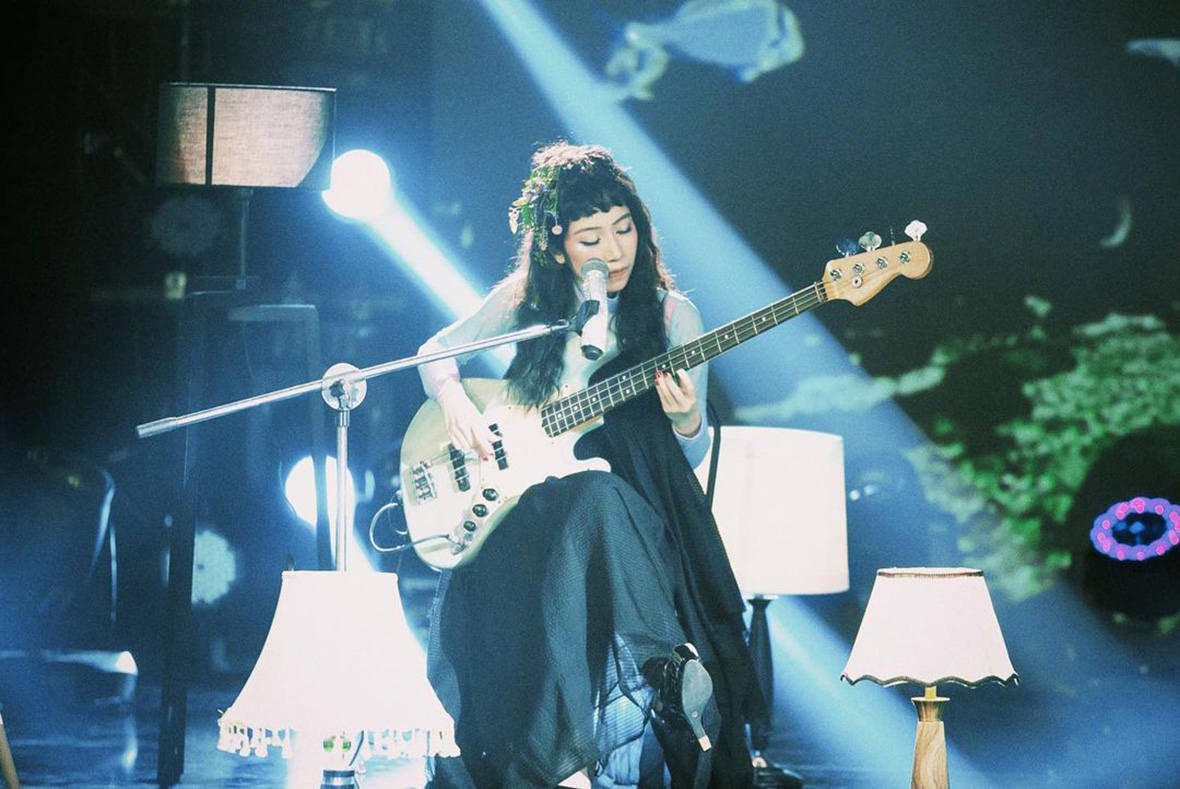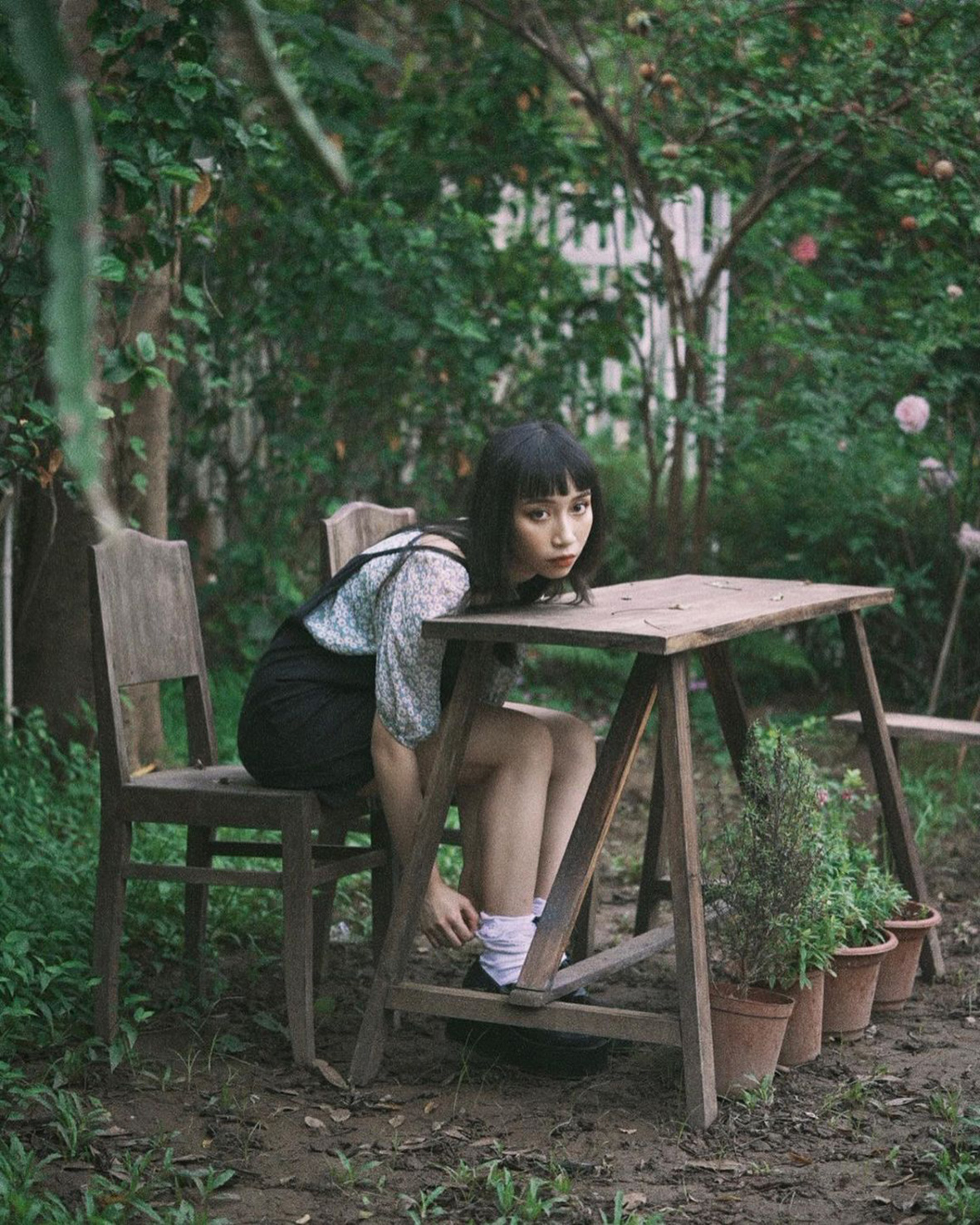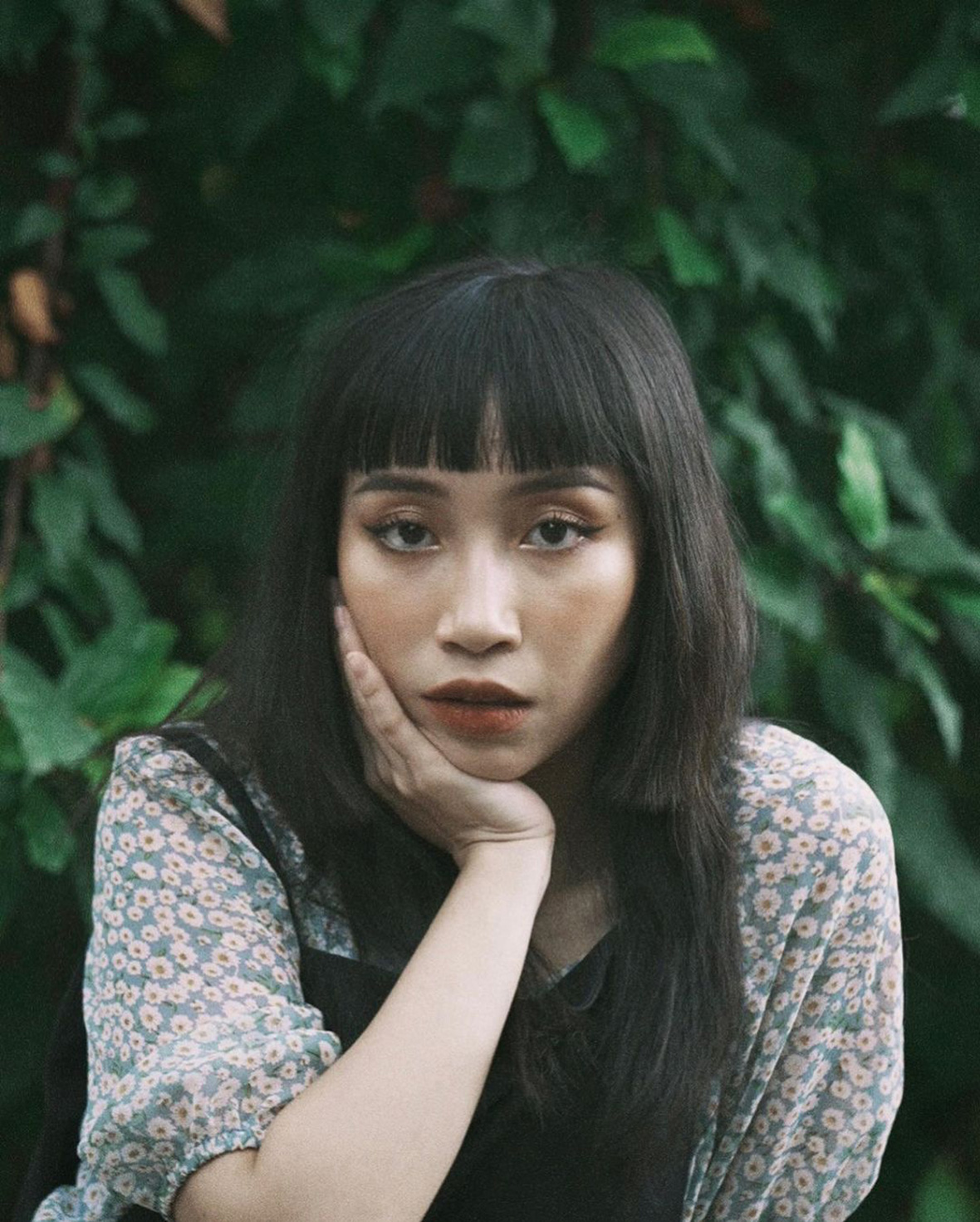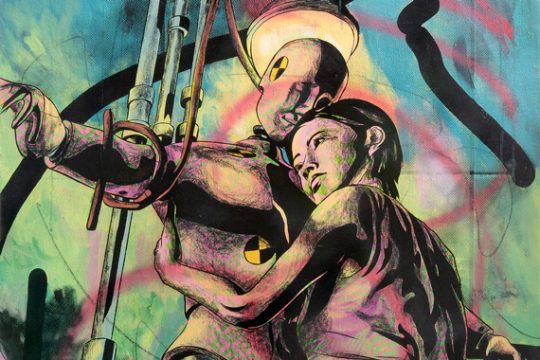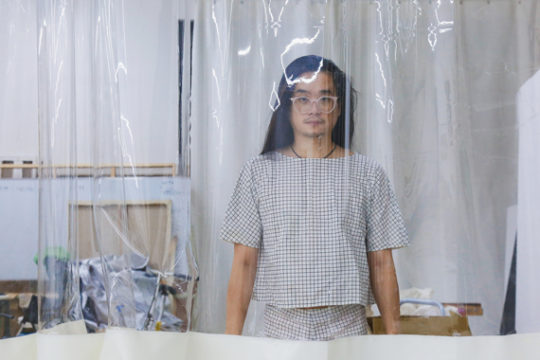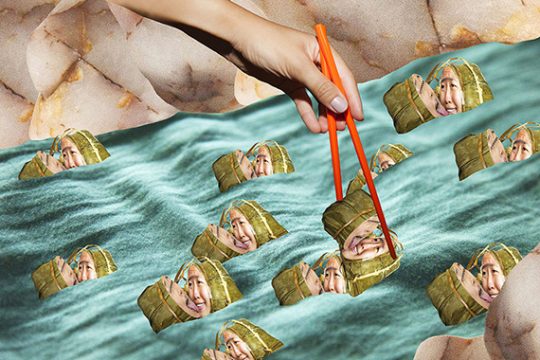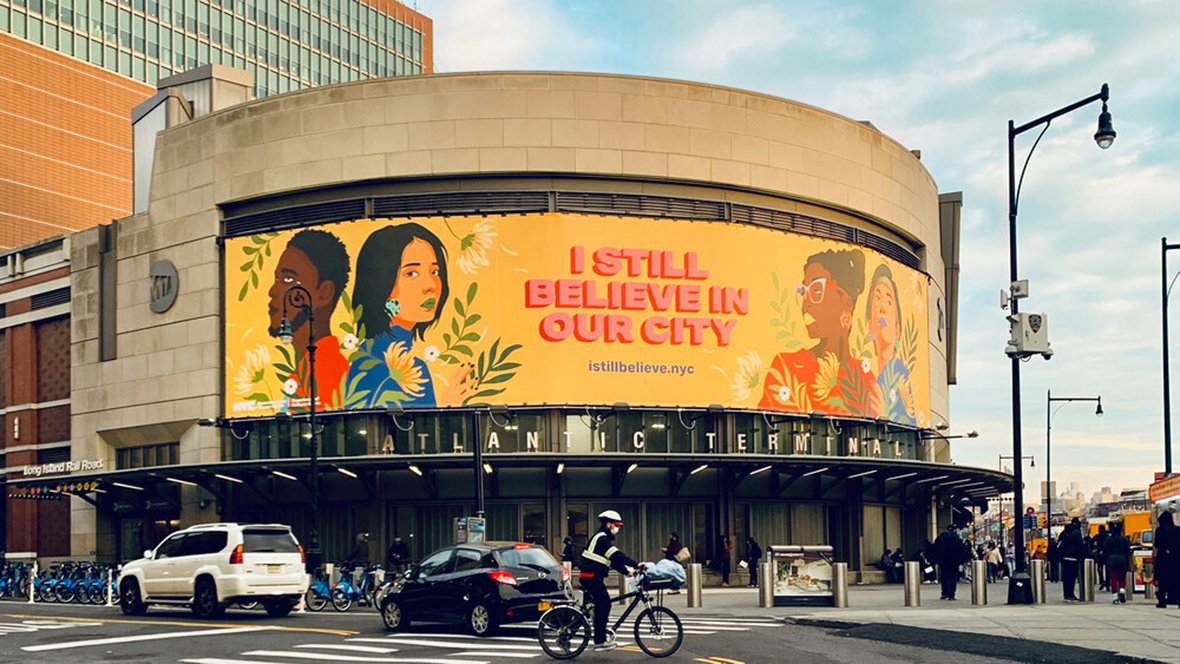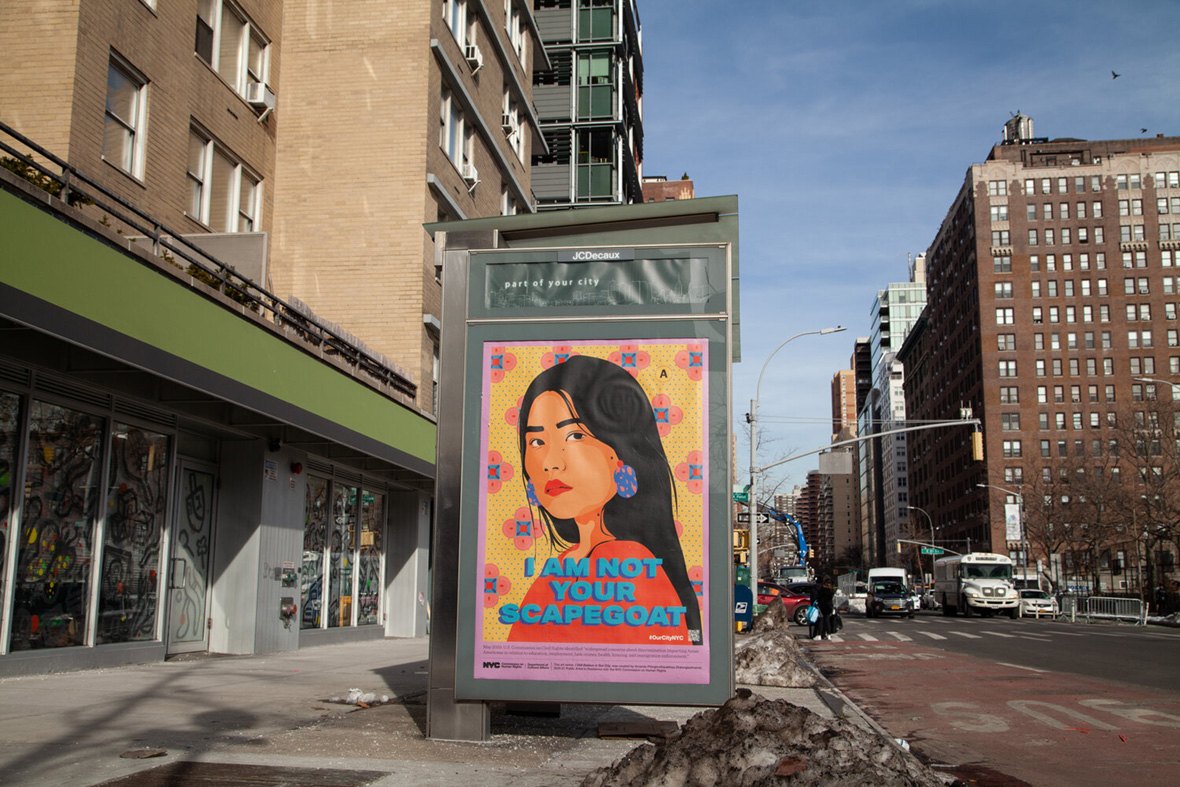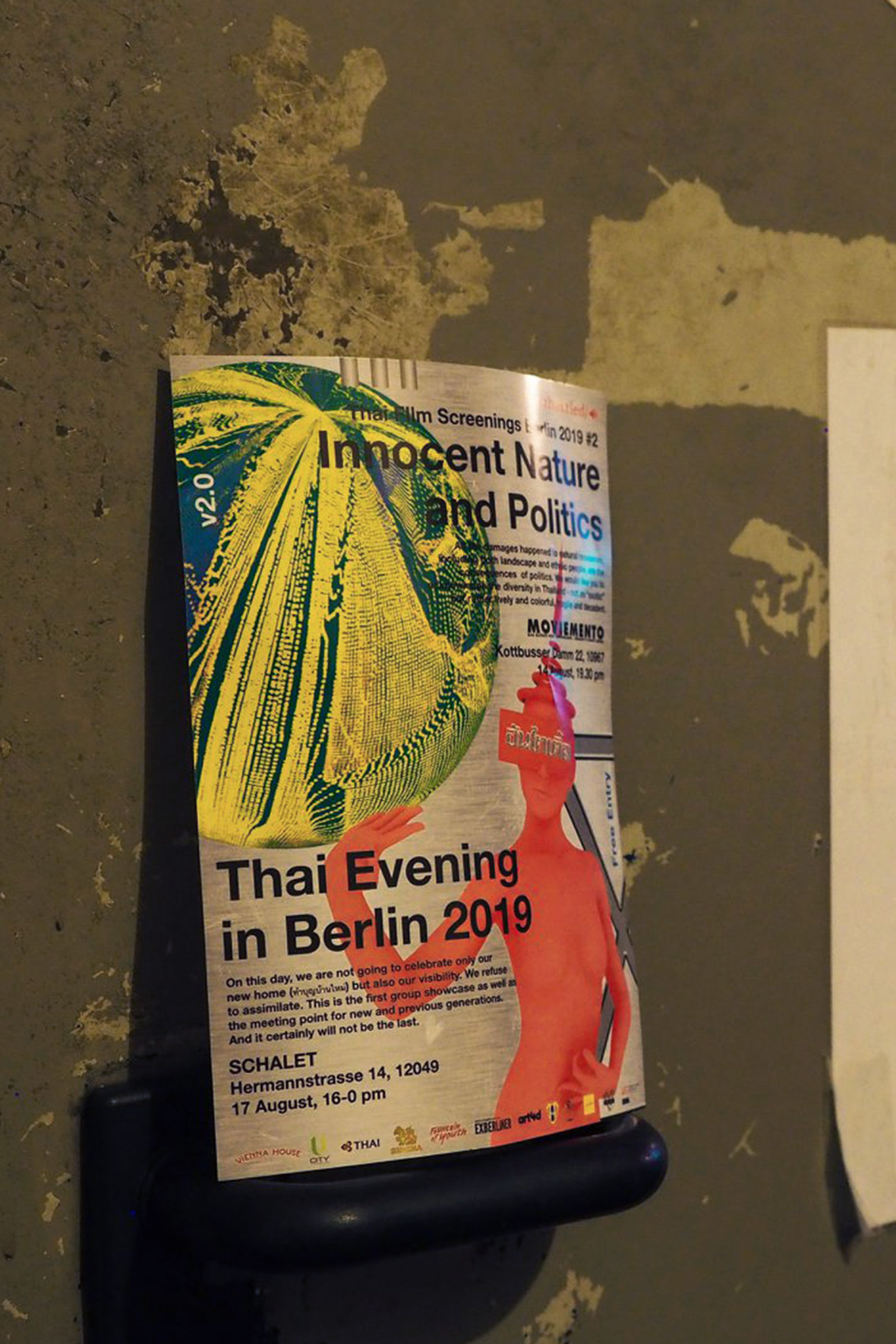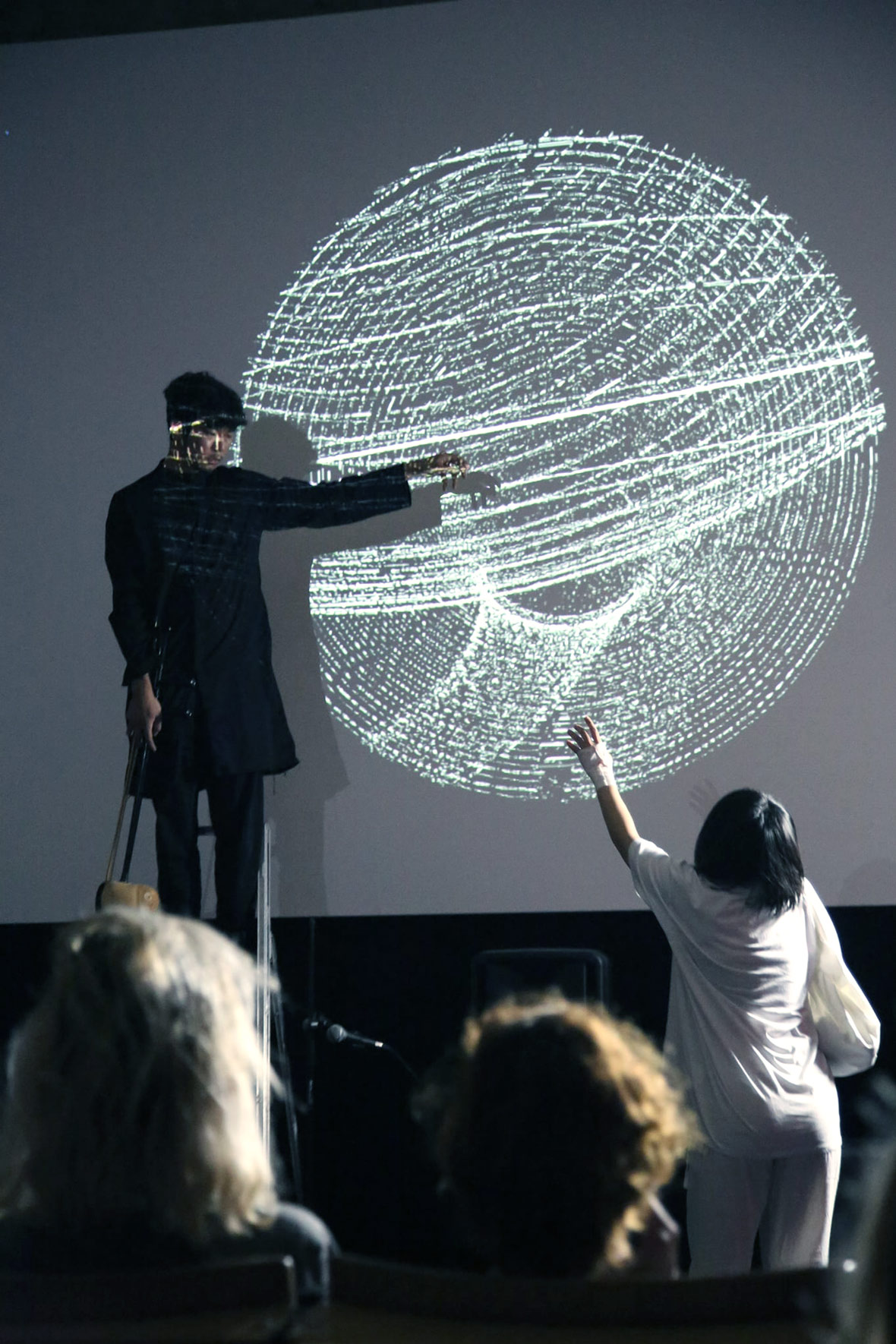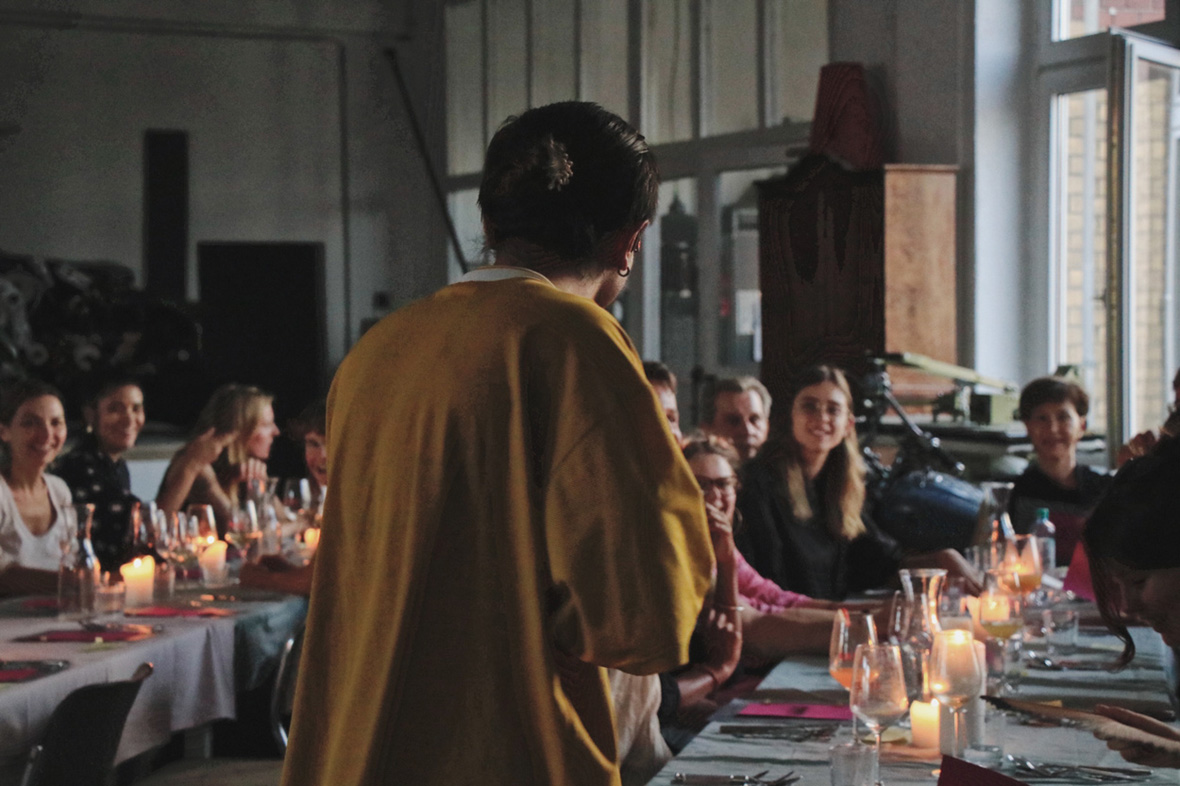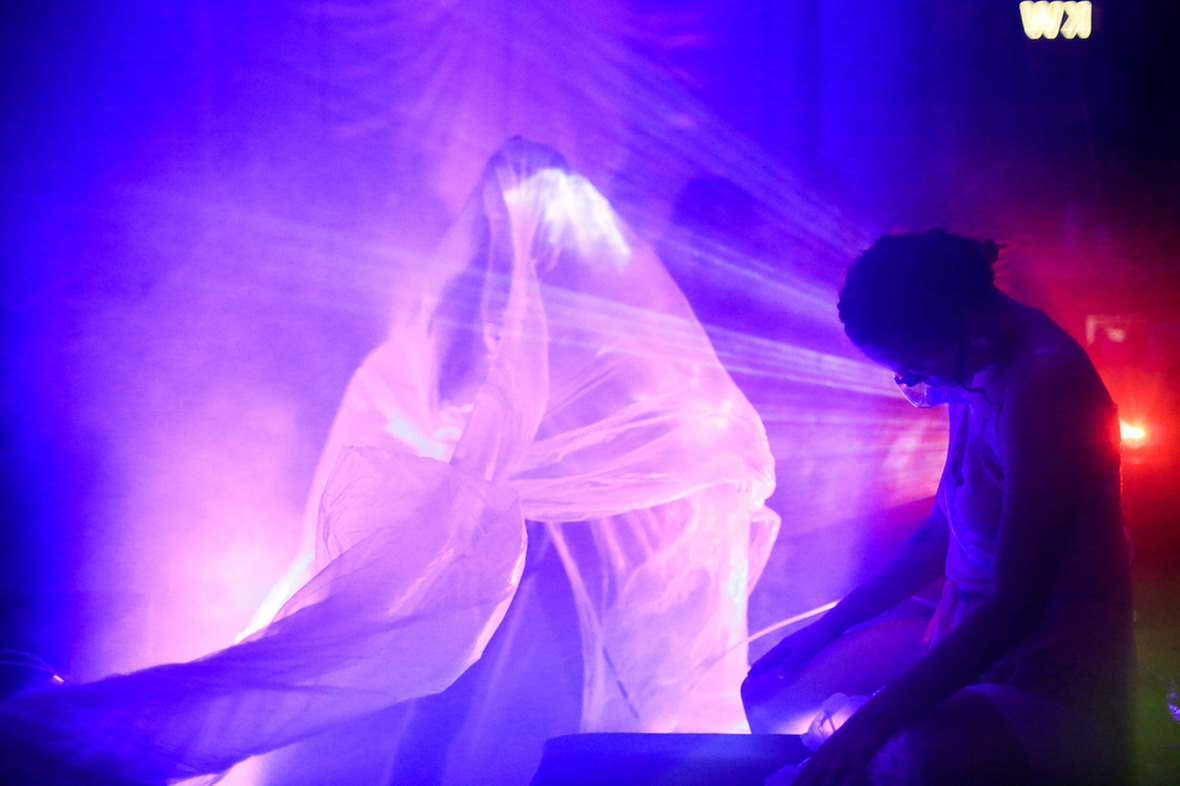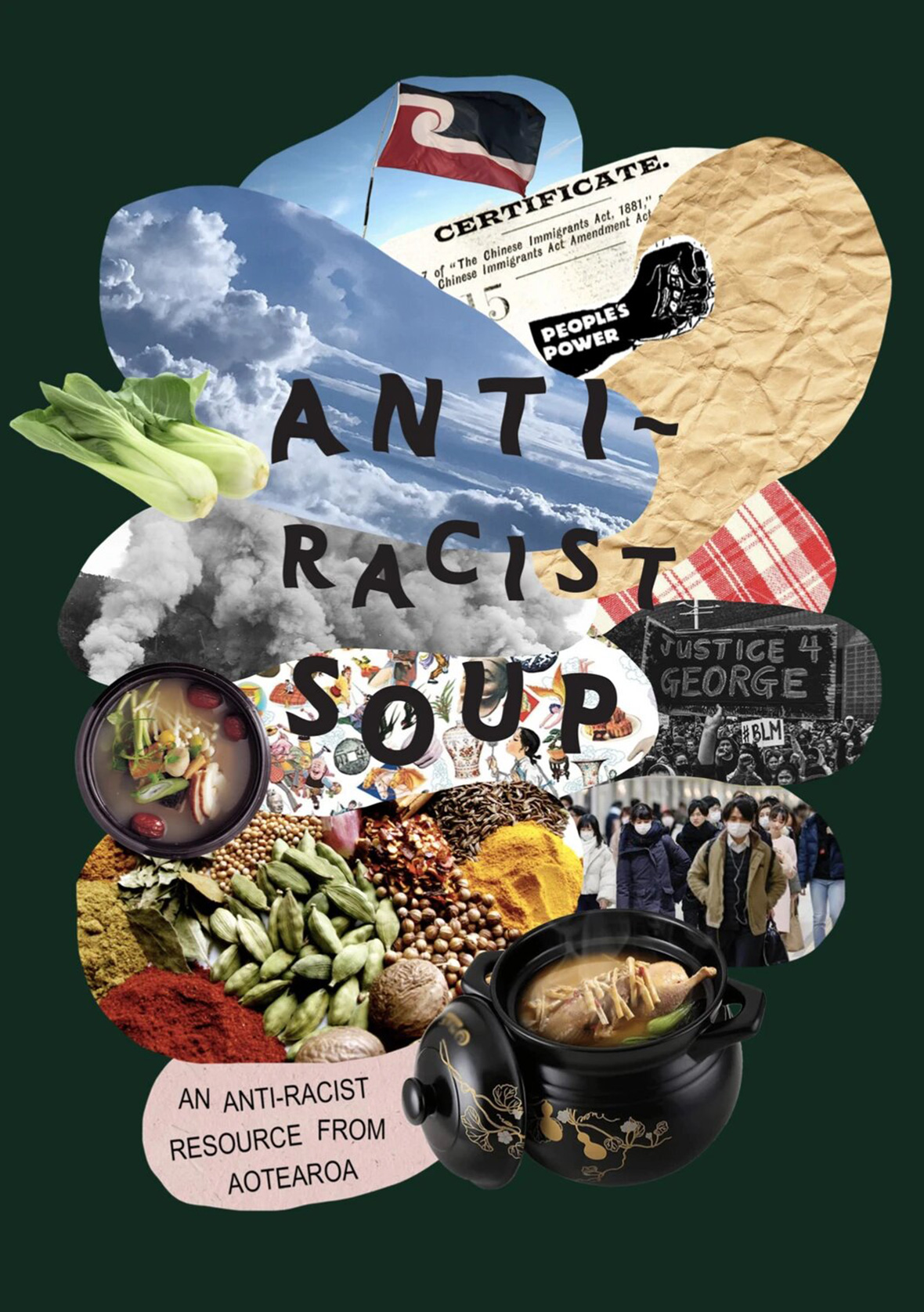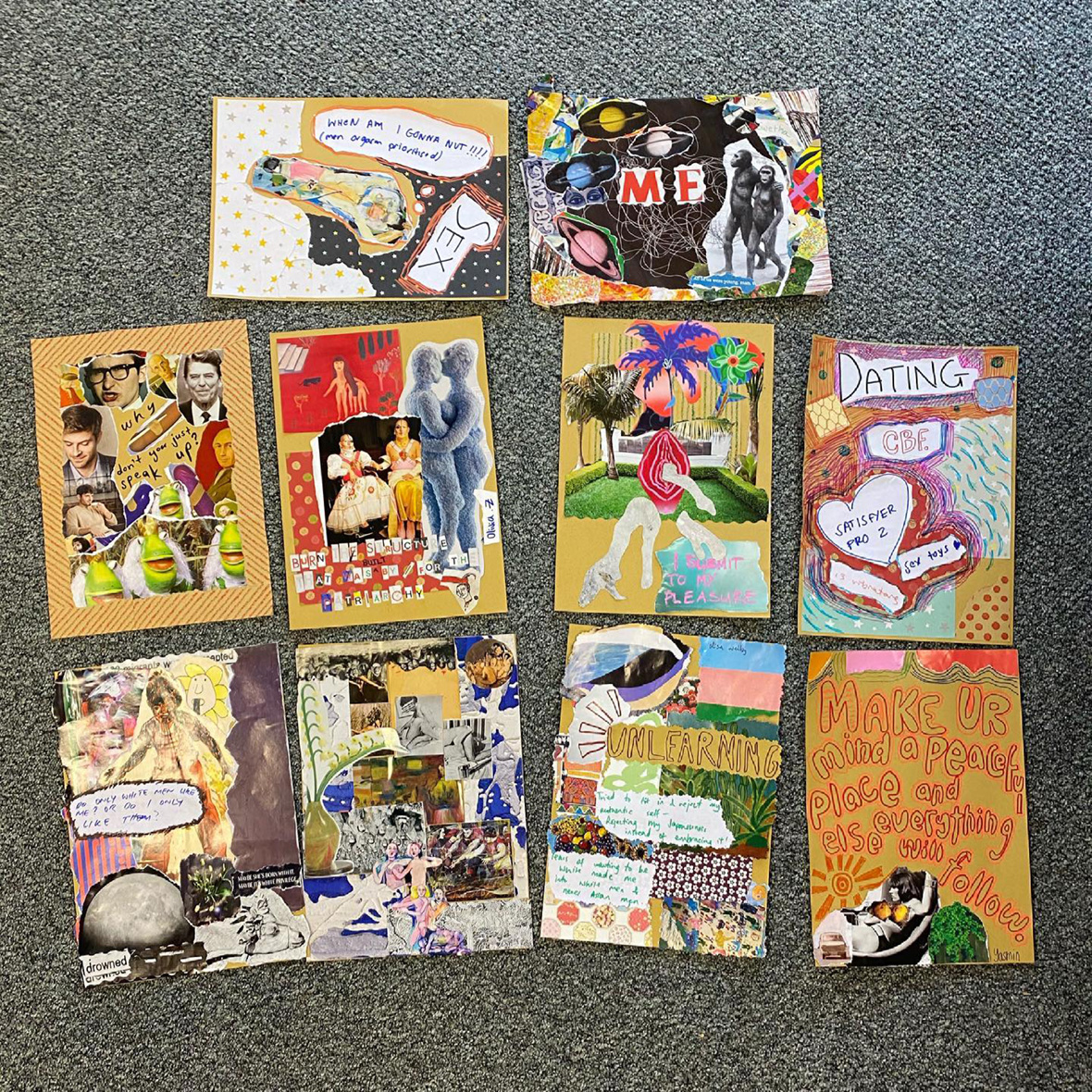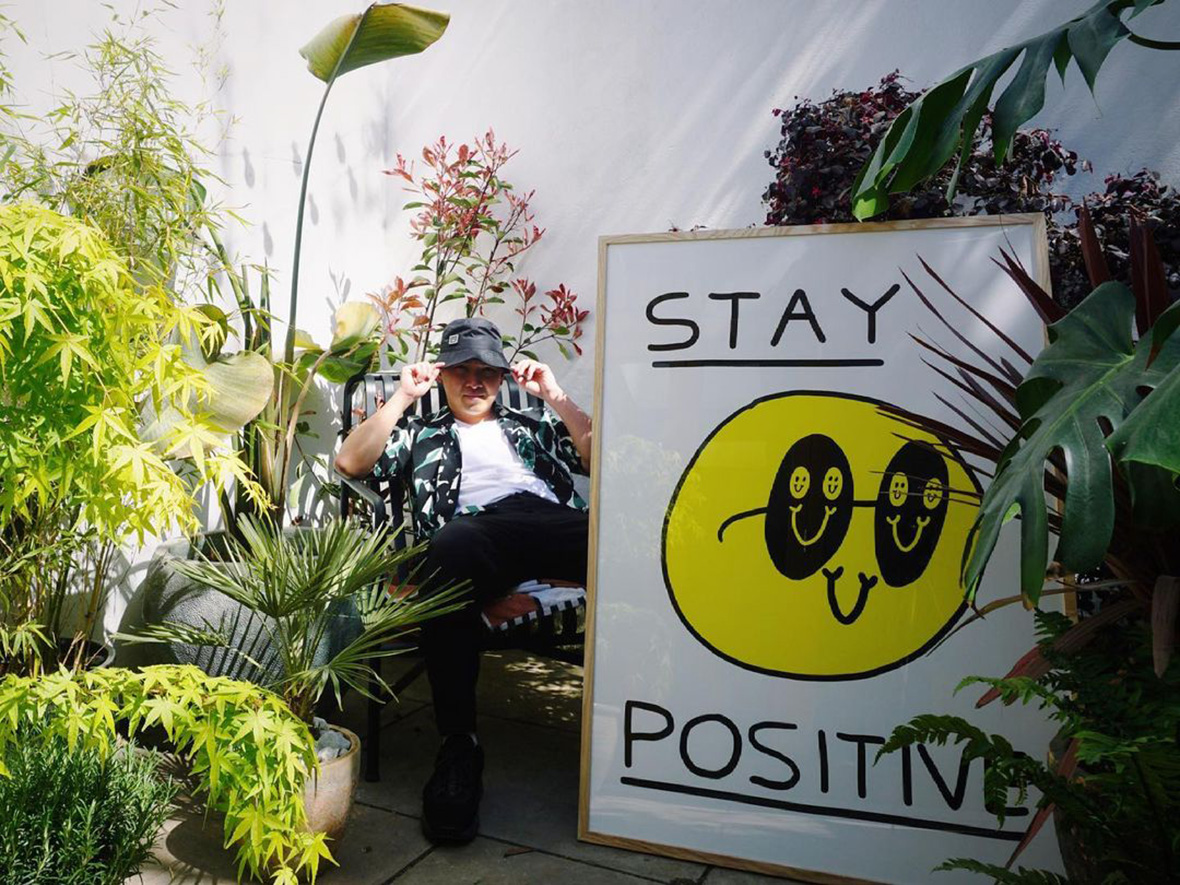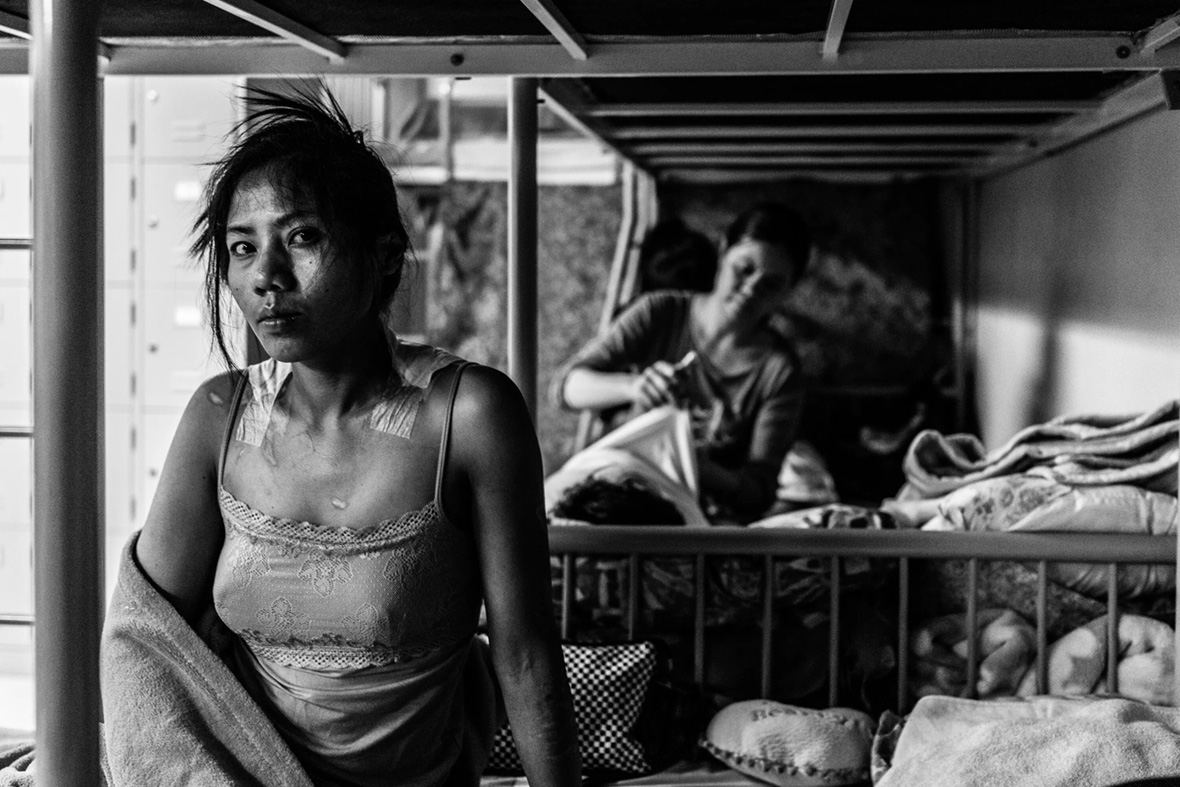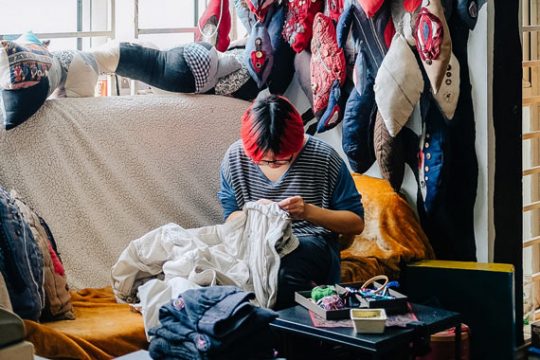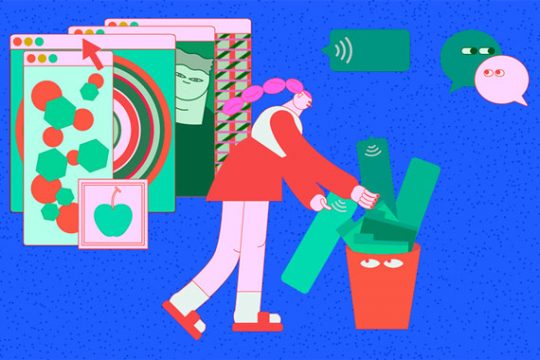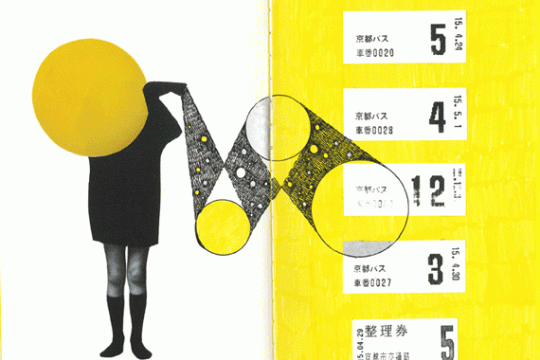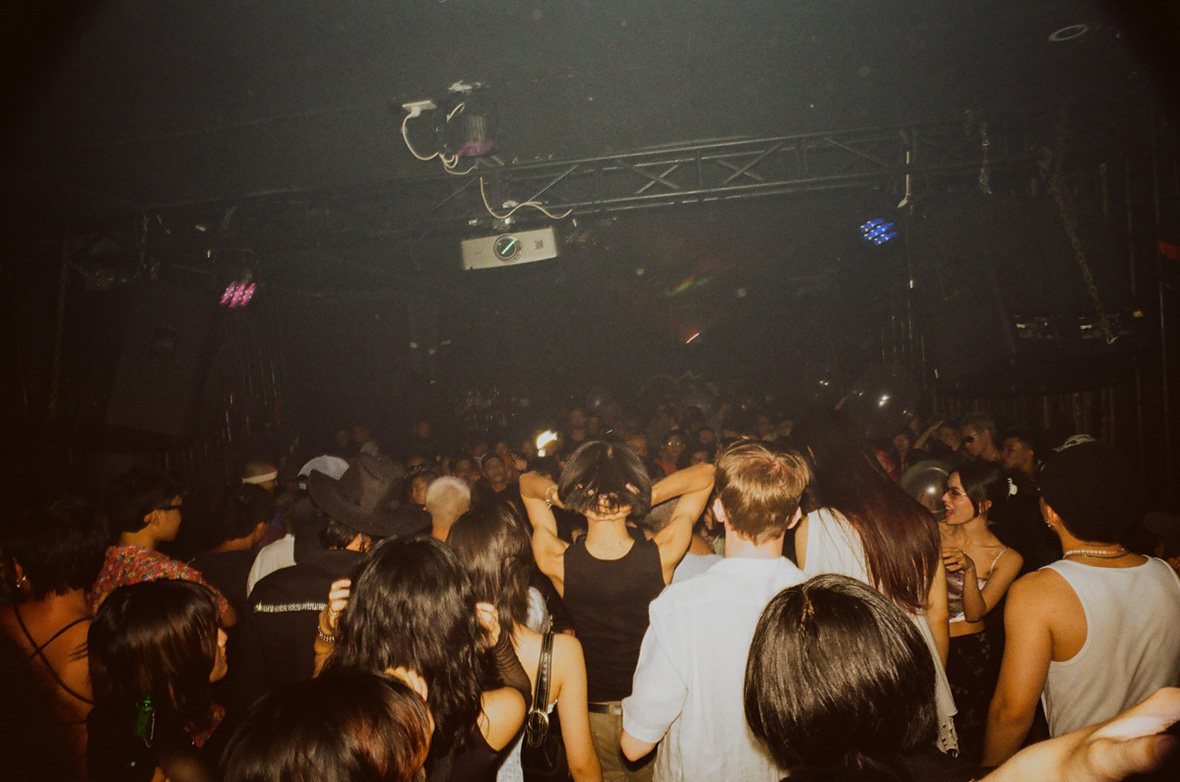
The sounds of local and international music spill out into the streets from bars and super clubs in Saigon’s Bui Vien neighborhood. Smaller venues are hidden away within old apartment buildings and tucked behind restaurants. Street food vendors and performers jostle for space with travelers and locals in the narrow streets. On a recent night there, inside a three-story tube house that acts as a hotel, something very different was happening: a new breed of club life called Gãy. This Vietnamese collective is emblematic of the country’s fast-growing youth culture, which has rapidly embraced fashion, photography, graffiti, music, and more.
Gãy focuses on global underground dance music and their events are must-visit destinations for anybody in Vietnam with an interest in what’s new and creative. What started as a night for a couple of dozen friends to party together and listen to the music they enjoy has grown into a regular event with an affordable cover charge that attracts stylish crowds in the hundreds. They also now have a record label, help locals learn to DJ and produce, and bring together the Vietnamese diaspora from around the world.
在胡志明市 Bui Vien (碧文街) 酒吧街区,世界各地的音乐在这里此起彼伏,无论在灯红酒绿的主干道、还是破旧的公寓楼或餐馆背后,都藏匿着大大小小的音乐场所。即便你穿行于那片区域的背街小巷,小吃摊贩、表演者、游客和当地人都会挤满有限的空间。不久前,一股当地的地下派对新势力在一幢三层楼的长屋旅馆内横空出世。他们跨越时尚、摄影、涂鸦、音乐等不同领域,折射出越南这几年国内迅速崛起的青年文化,并迅速在全球电子音乐场景中掀起热度。派对的名字被称作为 Nhac Gãy。
Gãy 专注于全球地下跳舞音乐,如果你对潮流和创意文化感兴趣,Gãy 的活动绝对是不二之选。派对的雏形是几位朋友以分享音乐为目的的小型聚会,现在,已然发展成为定期举办的青年文化盛宴,加上便宜的入场费,每场都能吸引数百名锐舞客的参与。除此之外,他们还创立音乐厂牌,扶持当地新晋音乐人,汇聚着来自世界各地的越侨年轻人们。
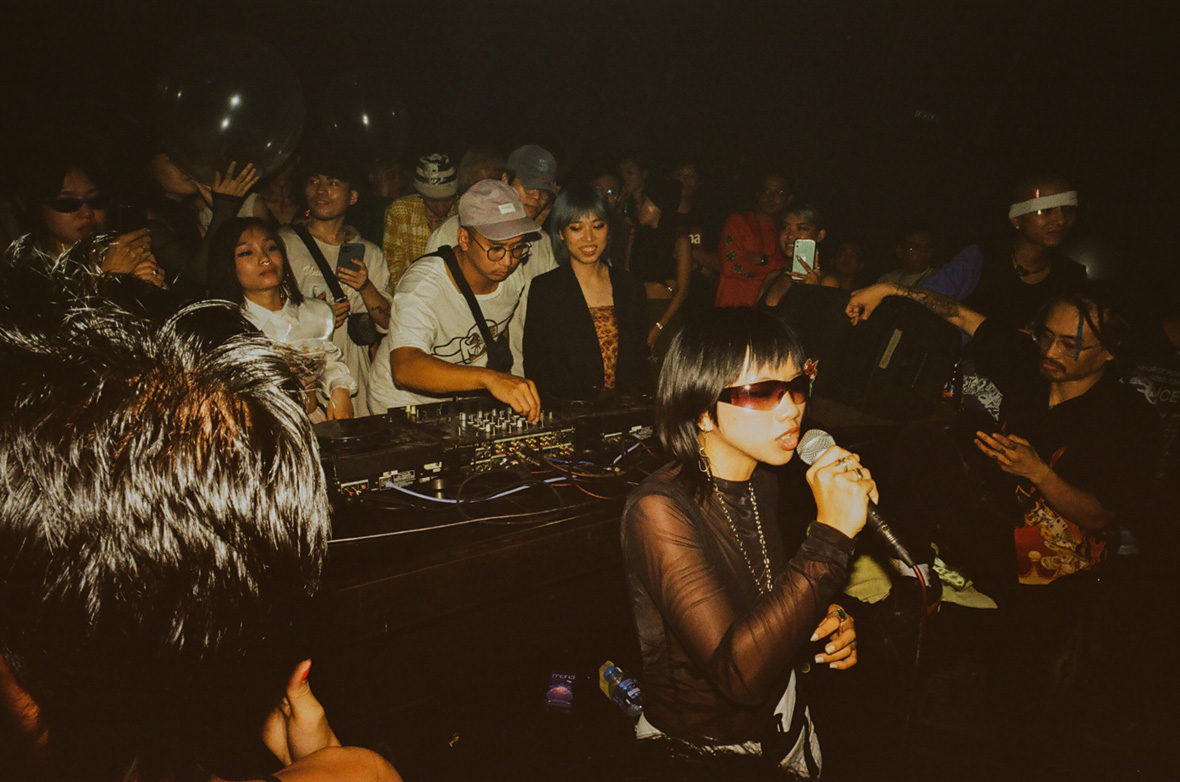
Anh Phi Trần is one of Gãy’s founders. He’s a việt kiều, or overseas Vietnamese, who grew up in the suburbs of Paris before moving to Saigon as an adult. “Both of my parents are Vietnamese boat people,” he says. “They arrived in France with nothing, fleeing the American war. But they started a restaurant and were able to give us a good life.” Although he visited in the summers as a kid, he found himself curious about what people from his generation were doing in Vietnam. “We have social media now, but as a kid, I only knew about the food and some old-school music.”
As an adult, he decided to move to Vietnam and make a living as a filmmaker. However, he was a little disappointed with the lack of variety in the local music scene when he arrived in 2016: Only the rap scene had momentum, though it was still underground at the time. “There wasn’t much electronic music,” he recalls. “The parties were mostly strict techno and house or top 40 and EDM, and all full of expats.”
Anh Phi Trần 是 Gãy 的创始人之一,也是一名越侨。他从小在巴黎郊区长大,随后移居胡志明市。他说道:“我的父母都是越南船民。当初为了躲避越南战争,前往法国。他们那时候身无分文,靠着开餐馆,为我们提供着丰裕的生活。”虽然小时候每年夏天他都会回一趟越南,但他一直很好奇同龄人在越南的生活。“我们现在有社交媒体,但在小的时候,我对越南的了解只停留在一些食物和民间老歌。”
长大后,他决定移居故乡,在当地成为了一名制片人。但 2016 年回到越南之后,当地单一的音乐场景却令他颇为失望:只有说唱音乐势头强劲,地下音乐缺少多样性。他回忆道:“当时的电子音乐很小众。派对上大多都是 Techno 和 House 音乐,或者是流行榜单 Top 40 和 EDM 电子舞曲,且大多数舞客都不是本地人。”
He met another of Gãy’s founders, Abi Wasabi, whose real name is Linh Ngô, through mutual friends. They bonded over a shared taste in art and music. Ngô says, “We started hanging together all the time, going to clubs, but there weren’t many places to go. We just went out to go out.” Ngô grew up in Saigon and has been participating in local nightlife since she was 17 years old. She says that club culture in Vietnam has been around for decades, but youth culture is still very new. “Growing up, there’d be like one place for younger people to go that played newer music, but then it would close and another would open.”
后来,通过朋友的介绍,Anh Phi 与 Gãy 的另一位共同创始人 Abi Wasabi (真名 Linh Ngô) 相识。他们有着共同的艺术和音乐胃口,两人一拍即合。Ngô 说,“我们经常一块儿蹦迪,虽然当时可去的地方并不多,但我们就是想出去玩。”Ngô 从小在胡志明长大,17 岁就已经在当地地下音乐场景打拼。她说,其实蹦迪文化在越南已有几十年历史,但青年文化这个词语还很新。“每次出现一个新潮一点儿、适合年轻人去的场所,就会很快倒闭,然后过一段时间又会重开一家,循环往复。”
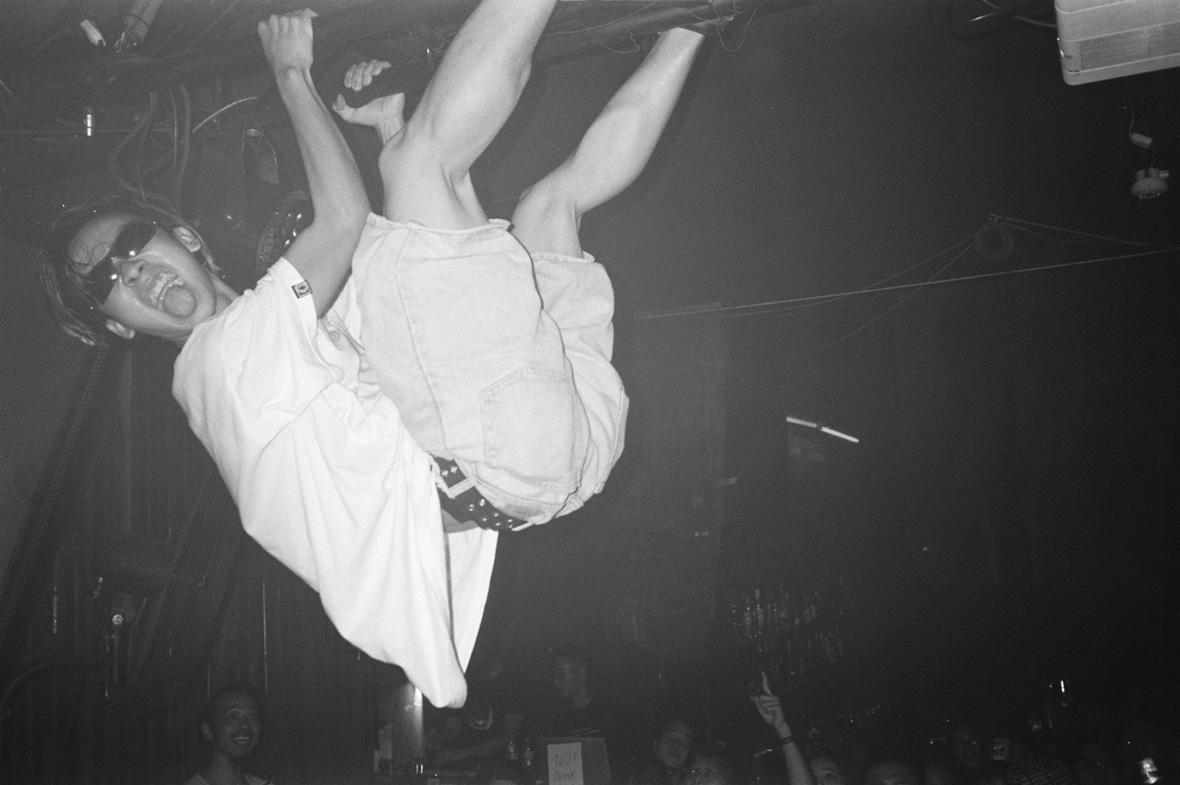
For years, the only electronic music that appealed to local crowds was vinahouse, a style of dance music that used to be frowned upon by the more cosmopolitan kids, but is now embraced by many, including the Gãy collective and its regulars. It’s a bright and energetic style with shiny synths and hard beats that started in 2006 and has a number of clubs dedicated to it filled with locals. “It has a cheesy and funny vibe. It’s got all of Vietnamese culture in it,” Ngô explains. “I was kind of prejudiced about it myself growing up but fell in love with it when we went to one of the vinahouse clubs on my birthday in 2019. You really have to experience it in its element. Their lighting and sound systems are as powerful as the ones at festivals; it’s crazy!” The sound of vinahouse is everywhere in Vietnam, filling the streets throughout the day and night via street vendors and passing tuk-tuks, and it racks up views in the millions on Youtube. But you still won’t hear it on the radio because of its association with drugs, which makes it taboo.
多年来,Vinahouse 一直在当地炙手可热。这种音乐风格拥有极强的感染力,带有强劲的合成音色和节奏,最早出现于 2006 年。虽然曾在一段时期被年轻舞客嗤之以鼻,却在如今重回热度,包括 Gãy 团体,甚至出现在许多当地主流俱乐部。“这种音乐蛮俗的,但倒是很有趣,是越南文化的缩影,”Ngô 解释道,“此前我一直对这种音乐带有一些偏见,直到 2019 年我生日那天,和朋友去了一家主打 Vinahouse 的俱乐部,从那次后,我就彻底爱上了这种音乐。你必须亲身体验过才能感受到这种音乐的魅力。那里的灯光和音响系统毫不逊色于音乐节,现场十分疯狂!”在越南街头巷尾,无论白天黑夜,从街头小贩到驶过的嘟嘟车 (tuk-tuks, 三蹦子),到处都是 Vinahouse,其最热门的打榜曲目在油罐上的视频点击率也高达数百万。不过,人们往往将它与毒品联系起来,让其蒙上了一层禁忌的色彩。

To carve out a space for themselves within those limited options, Trần and Ngô—along with the other three Gãy co-founders Celina Huynh, Thao Vu and Mike Pham—wanted to throw their own small parties, just for their group of friends on special occasions like New Years or a birthday. “One time we rented a bus and partnered with a street food vendor for catering,” Trần recalls. When his birthday came around in October of 2019, they rented out a small club in Bui Vien, made a poster, and decided to learn how to DJ. “We got a controller two weeks before the party and just figured it out. When I went on stage I was chicken!” Ngô smiles. It was all just for fun with no plans for the future and a group of about 30 friends showed up. “We called that party Gãy because that was the spirit of it; to just have fun even if it’s a mess.” Gãy is Vietnamese slang for “broken,” but in a good way. Like if you’re too drunk, you’re gãy. “If it’s wrong it’s fine,” he explains. Ngô adds that while the name Gãy isn’t a reference to its English meaning, the space is open to everybody: “Our party embraces all the weirdos and the misfits. We do attract a large LGBTQ contingent, partially because of the name, but mainly just because they’re a big part of the creative community.”
“Our crowd is mostly creative people, about 90 percent locals, and they range from 18 to 30 years old,” Ngô says. “They’re very respectful, even though they’re crazy as hell. They’ll jump on tables and take off their shirts, but at the same time if you tell them something they’ll listen. They come there to enjoy the music so they’re very respectful of each other’s space. There’s no creeps at our party. It’s very comfortable and safe. In other clubs, it’s not like that.”
Trần chimes in: “They dance like crazy, sometimes screaming. You get mosh pits, people hanging from the ceiling. It’s pretty wild and expressive. Whenever we play something intense, people really react to it.”
A month after their first party, Trần says there happened to be a bunch of foreign artists and việt kiều in town, so they decided to invite them for another Gãy party at the same venue.”About 150 people showed up,” Trần says. “The club was packed. That’s when we realized we were onto something. There weren’t many events doing what we were doing, playing the genres we’re playing.”
随后,Anh Phi、Ngô 和另外三位 Gãy 联合创始人 Celina Huynh、Thao Vu 和 Mike Pham 相识,他们都希望能从越南地下舞曲的狭缝中开辟一片属于自己的天地。最开始,派对以新年聚会、生日宴会等小规模形式呈现,大多时候邀请了认识的朋友来玩。“记得有一次我们租来一辆中巴车,拉上街头小吃摊位,活动就在车上进行,”Anh Phi 回忆道。
2019 年 10月,在 Anh Phi 的生日当天,他们在碧文街租下了一处不大的空间。“派对前两周才搞到混音台 (Mixer),试着摸清怎么用,那场演出可谓现学现卖。当时台上的我紧张坏了!”Ngô 笑着说道。派对邀请了三十余位友人前来参加,对于他们来说,这一切只是出于好玩,也没有对未来有任何计划,但却为之后埋下了伏笔。
“那场活动以 Gãy 命名,代表了我们的派对初衷 —— 即便生活糟糕透顶,也要出门找点乐子。”Gãy 在越南俚语里意为“坏掉的”,但也有一层褒义蕴含其中,举个例子,如果喝醉后感觉很“gãy”,“就是说,即便喝了再多也没有关系的意思,”Anh Phi 解释道。Ngô 补充说,虽然 Gãy 这个名字并不是英文对应的意思,但我们依然欢迎所有人参与:“我们的派对欢迎所有怪咖和不合时宜的人,因为名字的一部分原因,也确实吸引了大批 LGBTQ 群体,而他们本身也都是创意社区的重要参与者。”
Ngô 接着说道:“来玩的大多是创意从业者,大概 90% 是本地人,年龄在 18 到 30 岁之间。虽然他们玩起来很疯,但都非常有礼貌。他们会跳上桌子,脱掉衬衫,疯狂之余,他们会用心聆听每一个人的想法和表达。每个人都是来享受音乐的,所以相互都很尊重。我们的派对不欢迎那些令人讨厌的人,每个来参加派对的人都能感到自在和安全。这是和其他俱乐部不同的地方。”
Anh Phi 补充说:“他们跳起很疯的,尖叫声无处不在,甚至会相互乱撞,做 ‘Mosh’,还有人将自己吊在天花板上,大家都很放得开,很尽兴。每当音乐过门儿之后的低音响起,观众的反应都十分激烈。”
第一场派对的一个月后,又一场派对紧锣密鼓地进行开来。由派对组建者和一群外国和越侨艺术家共同参与。“那天来了大约 150 人,整个空间热闹非凡。”Anh Phi 回忆道,“我们突然意识到派对可以一直这样延续下去。因为当时在胡志明很少有这样的年轻人派对,也很少有人会播放我们喜欢的音乐。”
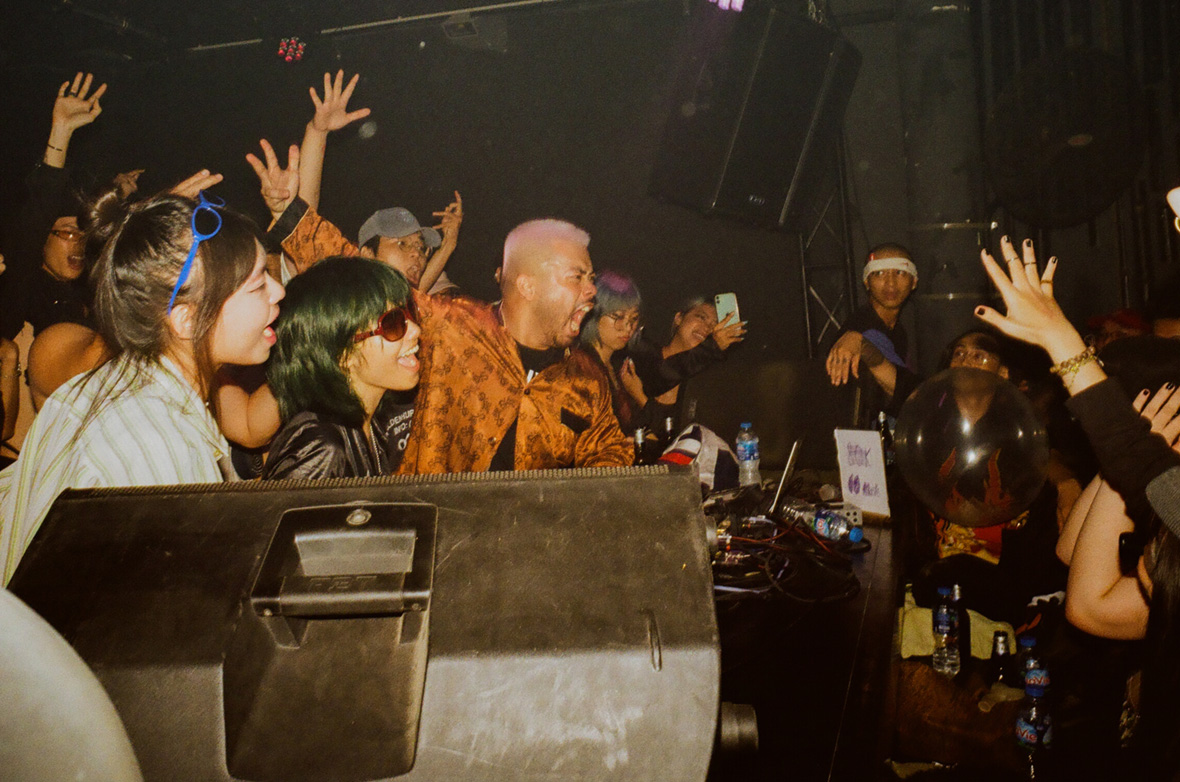
At a Gãy party, party-goers might hear experimental club, vinahouse, industrial techno, or trance—pretty much anything that’ll make a dancefloor move. But they purposely avoid trying to be too purist about any one sound, encouraging a hybrid of styles. “In every set, a DJ will try and navigate through at least five genres,” he says. “I think that’s the Vietnamese spirit. It’s always been a matter of blending cultures and accepting whatever comes its way. Look at the bahn mi sandwich. It’s like, ‘OK, we’ve been colonized by the French, so let’s take all our ingredients and slam them between their bread. Same with American and Chinese cultures, they’re everywhere. You can see it in the architecture too; the first floor of a building will be in one style, and the second story will be done in another sitting right on top of it.”
“We keep learning and changing,” Ngô says. “We keep surprising ourselves. We try to surprise the people and end up surprising ourselves. I discovered a part of myself that I didn’t know because of Gãy.”
Thao Vu has made sure that Vietnamese culture stays central to the Gãy parties since their first event. Vu, who works under the solo moniker mess., mixes traditional Viet music with contemporary dance styles when DJing, a philosophy that she’s well known for as a member of experimental electronic music group, ANNAM. “A few parties later ANNAM actually performed and we played live instruments at the club. I played a flute called the sáo mèo and my team member played a Chinese trumpet called suona. It was very weird at first but people went wild! The Gãy community isn’t the normal club scene; we want to rave in different ways.”
在 Gãy,你能听到先锋 Club 音乐、Vinahouse、Industrial Techno 或 Trance,以及各式各样引爆观众的地下舞曲风格。他们刻意避免过分专注于同一种音乐,尽可能呈现多元化的氛围,甚至人们一提到音乐风格,就会觉得俗。“每次现场,DJ 都会尽量播放 5 种以上不同风格的音乐。我觉得这也是一种越南精神。这个国家一直在推动文化融合,不断接纳新事物,越式三明治 (Banh Mi) 就是一个好例子。我们曾经被法国殖民,于是我们将各种越南特色食材塞在两片法式面包片之间。美国和中国文化也是如此,这些外国文化在越南无处不在,譬如在建筑方面,同一栋楼,一楼是一种风格,到了二楼就变了模样。”
Ngô 对此也表示赞同:“我们总是在不断学习和改变,不断制造惊喜。本来是想让别人惊喜,结果往往也惊喜到我自己。因为 Gãy,我对自己也有了很新的认识。”
从举办的第一场活动开始,Thao Vu 就致力于传统越南文化与俱乐部音乐的融合。作为一名 DJ,Vu(又名 mess)习惯将传统越南音乐与现代舞曲相结合,这也是她所在的实验电子音乐团体 ANNAM(安南)所推崇的理念。“在举办了几次派对后,我就带着 ANNAM 团体过来玩。我们在地下俱乐部现场演奏乐器,我吹越南笛子(sáo mèo),其他成员吹起了中国唢呐。观众一开始都很意外,但大家都很喜欢!Gãy 不是传统的俱乐部,我们想打造更多元化的锐舞文化。”
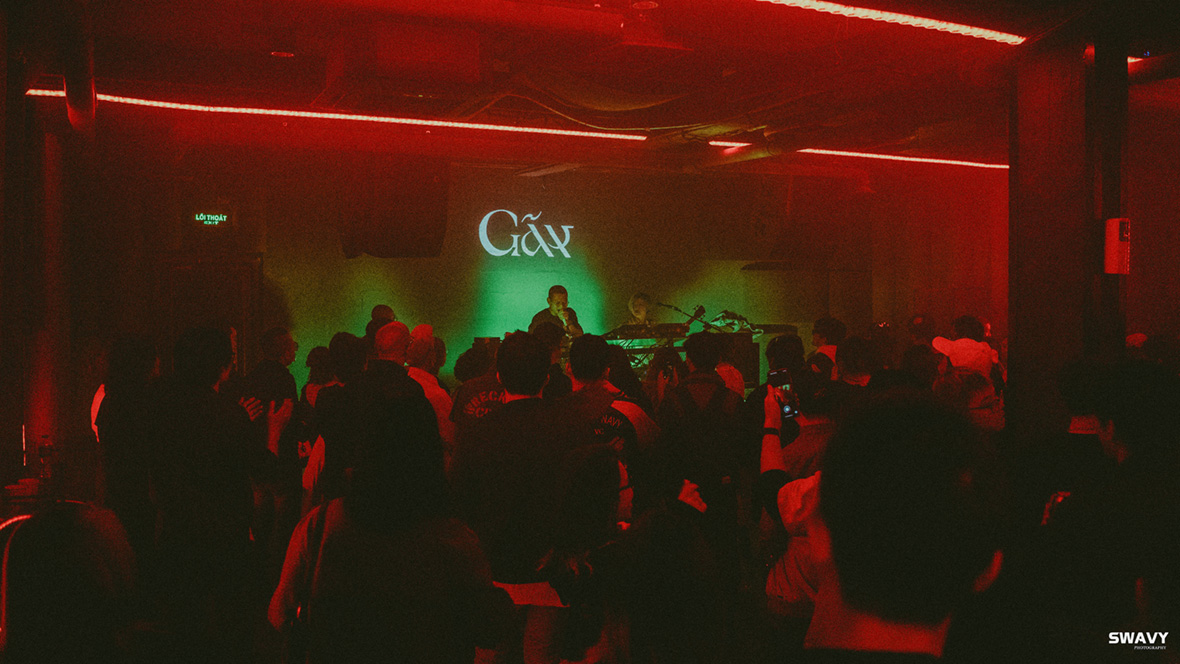
After the second event, they decided to make it a monthly party and began eyeing regional artists they could invite to play, stitching Vietnam into the fabric of the larger Asian music experience. “Vietnam isn’t on the map yet. When international artists go on tour, they don’t stop here,” Ngô complains. They were contemplating booking acts with a similar mindset like Beijing’s Do Hits and Hong Kong’s Absurd Trax. The first overseas artist they successfully brought to the country was experimental club producer Sonia Calico from Taiwan. But the plan was quickly derailed by COVID and they had to reconsider. Vietnam had weathered the first year of the pandemic better than most countries, and they were able to party again once the virus was curbed a couple months after it started. But with their strict border closure, the collective couldn’t invite outside artists as planned. So they decided to focus instead on local talent.
“After COVID, we had to dig more into local artists,” says Trần. “We took some of the profits from our parties and paid for DJ lessons to help people learn and gave them slots at our raves. All the money we make, we invest it back into the community. We want to help people express themselves, grow, and heal.” The move has helped the wider scene grow, and some of these novice DJs have gotten booked at other events. “The scene is very small, so whenever there’s a new DJ who’s good enough and has a particular style they can make a name for themselves.”
第二场活动之后,成员们决定把 Gãy 变成每月一次的定期派对,开始寻找更多本土艺术家来进行表演,同时希望让越南传统融入更当代的亚洲音乐场景当中。“人们常常会忽略越南这个国家,很多国际艺术家巡回演出时都不会来这里。”Ngô 抱怨道。他们正在考虑像北京 Do Hits 和香港 Absurd Trax 那样音乐组织前来造访。他们成功邀请到的第一位海外艺人是台湾的先锋俱乐部音乐创作人 Sonia Calico。但计划很快因疫情爆发而被搁置,不得不别辟蹊径。在疫情爆发的头一年,越南对疫情的控制比很多国家都要好,仅几个月后,就控制住了病毒,人们又能重返派对。但由于边境封锁,无法按计划邀请海外艺术家来表演,于是他们决定将注意力转向本土音乐人才。
Anh Phi 说:“疫情让我们更专注于挖掘本地的艺术家。我们拿出一部分派对收入,资助了很多人参加 DJ 课程,并在我们的锐舞派对上给他们提供表演机会。我们的所有盈利都用来回报社区。我们想帮助人们表达自我、成长并获得治愈。”这一举措也进一步促进了整个行业的发展,其中一些团队内的新晋 DJ 也开始接到其他活动的邀约。“这个圈子很小,如果新手 DJ 能力不错或风格独特,很快就能闯出名堂。”
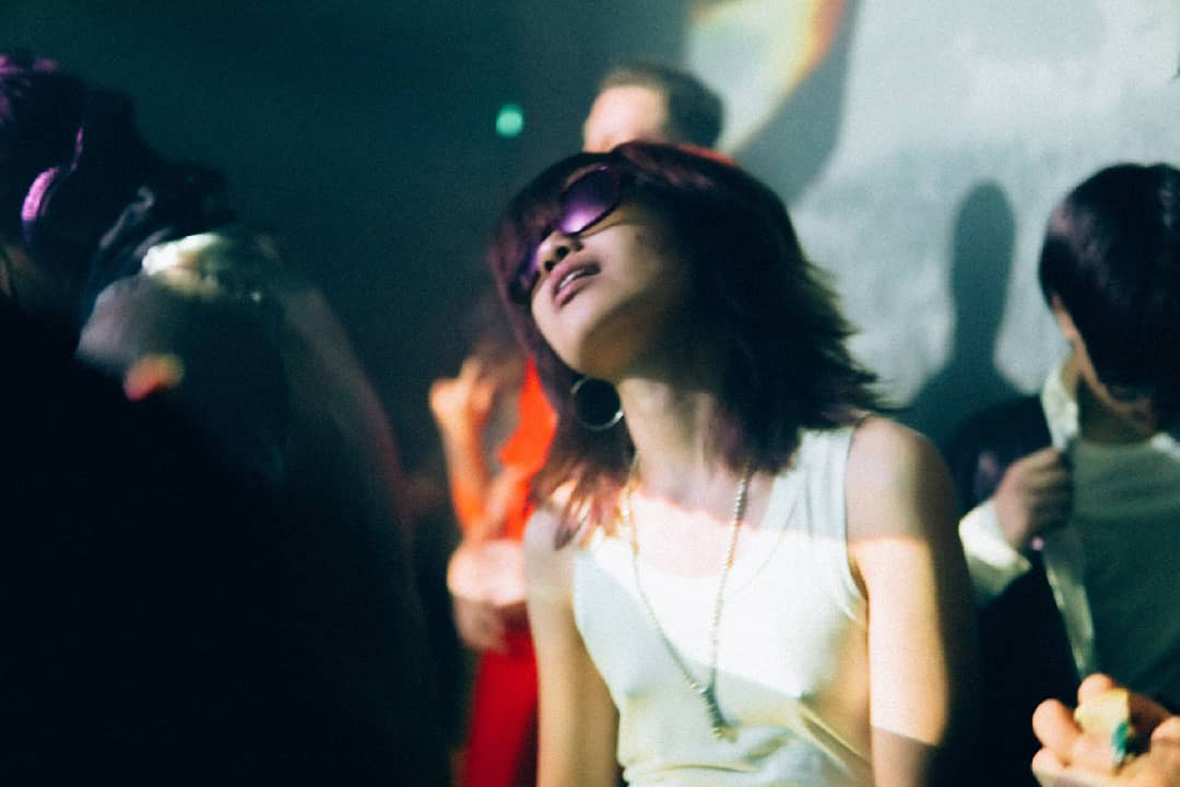
One DJ they put through classes and who’s gotten other bookings is Keikk0. She’s now a resident DJ at the Gãy parties as well. Keikk0, who’s real name is Tôn Tôn Bo, grew up on the outskirts of Saigon and got involved in the local electronic scene during her university years. Like many of those involved with Gãy, her creativity isn’t limited to music alone—she’s also a visual artist and is an accomplished photographer and director. “I saw all my friends were going to Gãy and I wanted to go too,” she recalls of her introduction to the scene. “By that time I had been to some good clubs in the city, but Gãy was such a new feeling. It was the music that I would listen to at home by myself. To see all the people dancing to the music I loved was amazing!”
At their third party, Ngô met Bo in the crowd and asked if she’d do the flyer for the following event. She agreed and they became friends and partners. “Then they asked me if I wanted to DJ, and I was like yes! I didn’t have to think about it at all, I was ready to throw out my whole life, I was ready to show off. I’m still not a good DJ, but I have a fun playlist.”
Another DJ who started with Gãy and has gone on to play at other parties is Puppy Ri0t, whose real name is Nguyễn Linh Nhi. She moved to Saigon from Hanoi at 15 and started producing on Garageband and taught herself to DJ on a controller at 20. But she had lost interest for a while until Gãy inspired her to try again. “I started going out in high school. I was pretty much all over the place, hanging out on street corners,” Nguyễn laughs. “I got into the party scene when I was 18 but got bored with it quickly. It was very unchanging until recently with Gãy, which was very inspiring. The parties used to be hosted by expats and foreigners and not a lot of Vietnamese people were there. They all went to vinahouse clubs but I wasn’t interested in that at the time.” Nguyễn—who recently put her spin on vinahouse for a new compilation of Southeast Asian club music titled Redline Legends—says that since she’s started producing music, she’s found a new appreciation for the genre, noting that it has great production quality and a wide range of sounds.
“My first Gãy party was chaotic but beautiful,” Nguyễn recalls. “It was the change in the scene that I wanted. Young and energetic. When I got there, I was trying to get a drink outside and heard them playing music by Shygirl. It was the song I wanted to start whatever my first gig would be. What a coincidence! When we went inside, there were all these fashion students, everything was colorful, people were dancing. I wanted to be a part of it immediately.” She had friends who introduced her to the founders, and she joined in the regular jam sessions where they’d all hang out and play music on the controller at their home. “Trần took an interest in what I was playing even though I really sucked at the time and I played at the next party. A lot of my friends came, which was scary, but they told me I did very well.”
Keikk0 就是其中一位在他们扶持下学习并成为 DJ 的艺术家,她现在是当地活动的常客,也是 Gãy 派对的常驻 DJ。Keikk0 原名 Tôn Tôn Bo,从小在胡志明郊区长大,大学时期开始接触本地的电子音乐圈子。和 Gãy 的许多艺术家一样,她的创意表达并不局限于音乐领域,同时也是一位视觉艺术家,以及出色的摄影师和导演。“我看到很多朋友喜欢去 Gãy,我也想去试试,”她回忆自己第一次接触这个圈子的情景,“在那之前,我也去过本地一些不错的派对,但 Gãy 是一种全新的感觉。那里的音乐也是我平时在家会听的,能在俱乐部和大伙儿一起跳这些音乐,真是太棒了!”
Gãy 的第三场派对上,Ngô 便认识了 Bo,并问她是否愿意会为接下来的活动制作传单。Bo 一口答应,两人也从此成了朋友和合作伙伴。“后来他们问我想不想当 DJ,我说想!这根本不需要去考虑,因为我已经准备好全身心投入,我想在舞台上发光发热。虽然我现在的 DJ 水平还没够火候,但我有一份有趣的歌单。”
另一位从 Gãy 开始 DJ 生涯的艺术家是 Puppy Ri0t(原名 Nguyễn Linh Nhi)。她 15 岁时从河内搬到胡志明,很早便开始尝试用 Garage Band (音乐制作软件) 制作音乐,20 岁时便开始学习使用混音台,自学成才。中间有一段时间她失去了兴趣,直到遇到了 Gãy,重新激发她的热情。Nguyễn 笑着说:“我从高中就开始出来,我喜欢到处乱逛。我 18 岁就开始去参加派对,但很快就厌倦了。这种情况持续了很长时间,直到我去了 Gãy。以前的派对基本上都是外国人举办的,很少越南人参加。”Nguyễn 最近推出了 Vinahouse 风格的东南亚舞曲音乐合辑《Redline Legends》,她说自己开始制作音乐后,逐渐领略到这一音乐流派的独特魅力。除了超高的制作质量,她还善于融合广泛的音乐类型。
Nguyễn 回忆道 :“我第一次参加 Gãy 派对,就觉得很对味儿。年轻,有活力。当时我正在外面喝东西,听到有人在放 Shygirl 的歌。无论我在哪里演出,那首歌都是我首选的开场曲,那种感觉就像回到了家!我看到派对上有很多时装专业的学生,大家花枝招展,所有人都在跳舞。当时的我很想加入他们。”她的朋友把她介绍给了 Gãy 的创始人,她平时也定期和他们一起练习,分享音乐。“Anh Phi 当时对我的音乐很感兴趣,很快为我安排了一场演出。当时很多朋友都来玩,我反倒非常紧张,但最后他们都说我放得不错。”
Despite the new challenges brought by the pandemic, Gãy parties continued growing and they soon needed a bigger venue. “Because of safety reasons, we stick to legitimate venues,” Trần says. “In Europe you can be sneaky and the cops will be chill, but in Vietnam I don’t want to put our audience at risk.”
Bars and clubs had closed down and reopened a few times, but people still wanted to party. During the first year of the pandemic, their parties were whittled down to being held once every two or three months. One of their more memorable parties was the one held at the family-owned backpacker hotel. “I was walking around and the family was just hanging out downstairs, playing cards while selling drinks and nitrous balloons,” Trần recalls. “Because of COVID they didn’t have any guests, so we asked if we could throw a party and they were like, ‘Sure.’ It’s basically just a house, but the ground floor has this huge sound system… which was really bad. We brought our own system and put it at the bottom of the stairs. The hotel is surrounded by all these big bars and clubs blasting their own music super loud. It was fun to compete with them!”
尽管疫情带来了新的挑战,但 Gãy 的派对规模仍在不断扩大。很快,他们不得不迁址到更大的跳舞空间。Anh Phi 说:“出于安全考虑,我们坚持找合法的场地举办派对。在欧洲,只要你低调一点,警察也不太管。但在越南,我不想让观众冒险。”
疫情期间,越南的酒吧和夜店几度经历停摆和重开,但人们对于参加派对的热情从未减褪。2020 上半年,Gãy 派对减少到每两三个月举行一次,其中最难忘的一次派对体验是在一间背包客旅馆里举行。“当时我正在街上乱转,碰到旅店一家人在楼下,他们一边打牌一边售卖饮料和氮气球,”Anh Phi 回忆道,“由于疫情,旅馆没有房客入住,于是我们问他们能不能租下这里办场派对,他们爽快地答应了。”这个房子其实很简陋,虽然一楼有一个巨大的音箱,但可惜完全不能用。所以我们带来了自己的音响系统,放在楼梯下面。这间旅馆周围都是大型酒吧和夜店,每家声音都震耳欲聋,感觉像和他们比赛一样,特别有意思!”
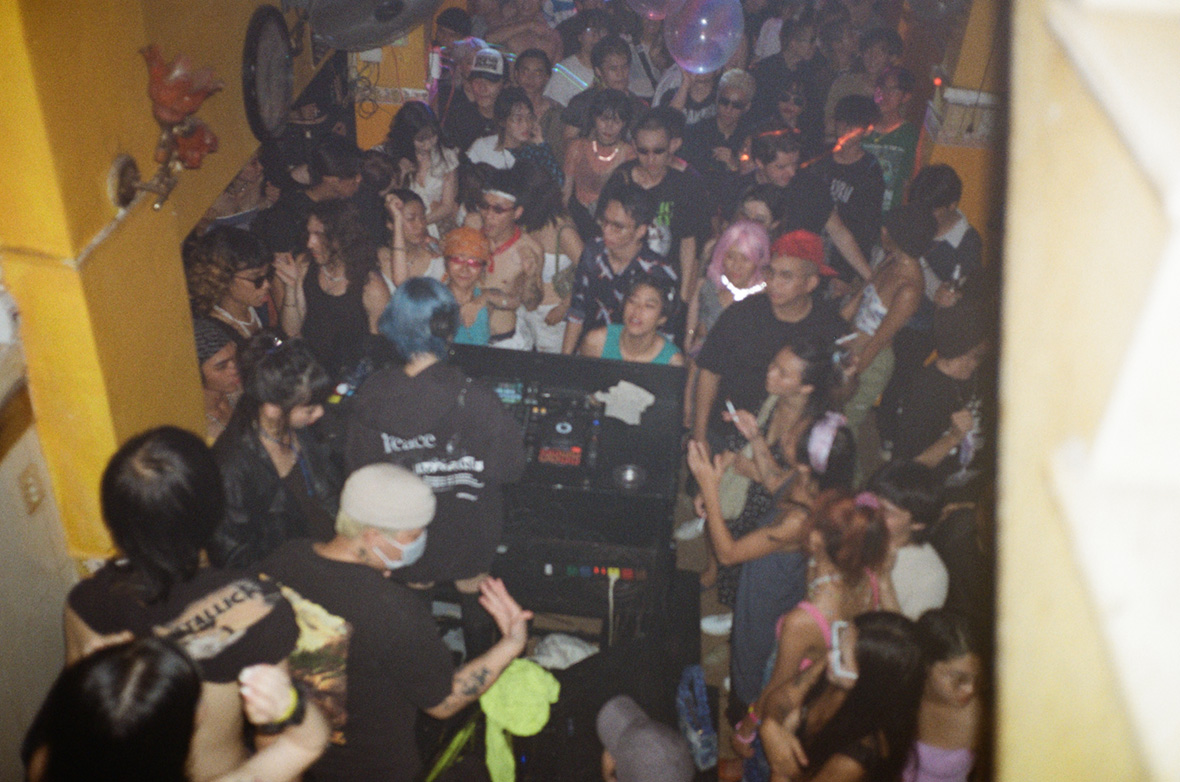
In June 2020, they made a new home at the 350-person capacity club Arcan, a club that previously focused more on psytrance. After Mixmag Asia first wrote about Gãy, the owner reached out and the collective quickly settled in. “We redecorate every time. Every party is a different set design,” Ngô says. “It takes two to three weeks to put one together. We come up with an idea and find artists who can realize it. Once I hung a bunch of construction mesh. It felt like a construction site. Another time we covered the space in graffiti. We had visuals projected onto the ceiling at another one.”
Another perk to moving in is that the owner of Arcan is an accomplished DJ, and during the pandemic, he decided to start teaching lessons. “We send people to him for classes, we can’t teach anyone even though we try,” she laughs.
Gãy also expanded into Hanoi, throwing several parties in the northern city, and the energy level there matches the parties in the south. “I’m a tourist now when I visit Hanoi, but when I played at the Gãy party there, I was very surprised, because people were so reserved when I was a kid,” Nguyễn says. Vu, who lived in Hanoi for five years before moving to Saigon in 2019, says life in Hanoi was still a bit slower when she lived there as well. “Experimental music is stronger there and the scene is tiny. We generally worked lowkey, making music and releasing it online. There are some good clubs there now; it’s a bit more humble than Saigon but still growing.”
2020 年 6 月,他们进驻了能容纳 350 人的 Arcan 俱乐部,起初这家俱乐部侧重于 Psytrance 舞曲。但在看到了 Mixmag 杂志对 Gãy 进行的采访之后,俱乐部很快将活动收编。Ngô 说:“我们每次活动都会对场地进行装饰。每场派对都有不同的设计主题。筹备一次派对需要两到三周的时间。先是有了想法,然后去找适合的艺术家。有一次,我找了一堆施工用的爬架摆在舞池,让整个场地看上去像施工现场;还有一次,我们用涂鸦覆盖了整个空间,还试过将视觉效果投影到天花板上面。”
该俱乐部负责人本身也是一位 DJ,在疫情期间开始教授课程,以赚取额外收入。“我们安排学生去他那里上课,我们试过自己教,但实在教不来。”Ngô 笑着说道。
Gãy 还曾将攻势拉进河内,在这座北部城市举办派对,现场的气氛与南部的胡志明也堪称旗鼓相当。“能在河内举办 Gãy,真的非常令我感到意外,我记得小时候,那里的人都还很保守的。”Nguyễn 说道。Vu 在 2019 年移居胡志明,在此之前,她曾在河内生活了 5 年,她说那时候的河内生活节奏还是比较慢的。“在那里,实验音乐更受欢迎,这个圈子还比较小众化。我们一向都比较低调,制作音乐然后发布到网上。现在那里也有一些不错的俱乐部,虽然比不上胡志明,但正在飞速发展。”
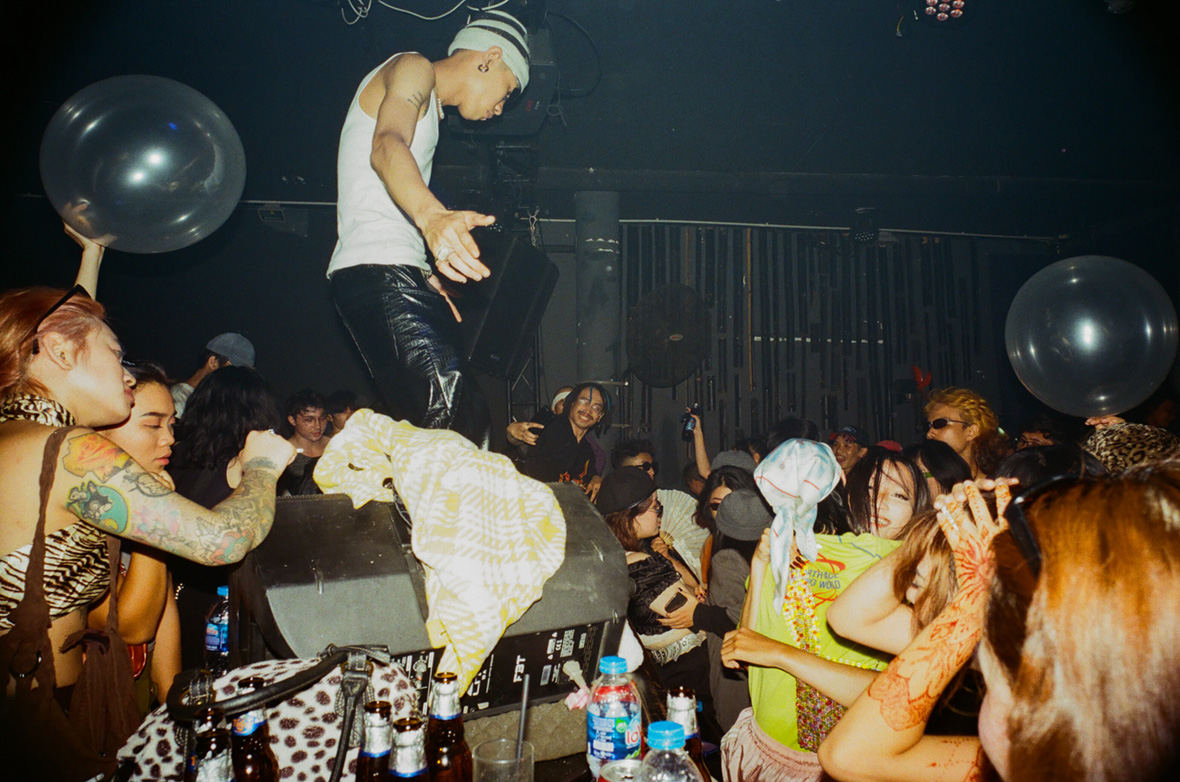
The pandemic was not entirely bad for their scene, and the collective actually feels that the lowered frequency of their parties makes each event that much more special. “The scarcity amps up the energy,” says Trần. “People get excited to show up and dye their hair, get all dressed up super fashionably. It became kind of a ritual.” Originally, the parties spread by word of mouth, through people within the collective’s circle. But it’s taken on a life of its own. “It’s still mostly creative types but has become more diverse. There are a lot more students. I’ve even seen some random CEO types, like advertising dudes just hanging out.”
When they started reorienting towards a local approach, the collective also started thinking about inspiring more local producers. “I realized that while most of the crowd is Vietnamese or việt kiều, most of the music we play is made by foreigners. So I really wanted to inspire locals to start creating music,” Trần says. This is when the idea for the Nhạc Gãy Tổng Hợp Số 1 compilation started to take form. “We invited producers to make club tracks, because most of the artists we approached were making experimental or pop music. Some people were making stuff but didn’t dare to release it. They’re mostly our friends and some of them are part of the collective. More than half have played at the rave already. I didn’t only want Vietnamese artists to be on the compilation though; I wanted to connect with việt kiều from around the world as well.”
Listen to select tracks from the compilation below:
Trần says they just gave the artists a couple themes and let them express themselves in their own style: “That’s why each track is different. One is baile funk, one is gabber, one is techno. It’s not exactly the type of music we’d play at our raves, but it fits in terms of the type of melting pot, hybrid ideal we have. In a way, it was sort of an experiment to see how each artist would translate the Vietnamese spirit into their music. Some played old stuff, some used language. Larria, Nodey, and I each blended vinahouse into our tracks.”
New events and clubs have also recently emerged, mutually influenced by Gãy, often booking their DJs. Upcycled fashion label TÁ LẢ invited Nguyễn to play at a recent release drop. Error 102 is a new club that attracts a similar crowd and taps DJs from Gãy as well.
疫情对他们来说不全是坏事,对于团队而言,减少举办派对的频率,反而令每次的派对显得更加特别。Anh Phi 说:“因为难得,人们的情绪反而更高涨。来参加的每个人都异常兴奋,染头发,精心打扮,变得更有仪式感了。”最初,这些派对都是靠圈内口口相传,但现在声名大噪,完全不用考虑宣传问题。“现在来参加的舞客主要是创意从业者,但依然朝着更多元化的方向发展。有越来越多学生。我甚至偶尔会看到一些公司的精英白领,还有一些广告人。”
当他们开始将目光投向本土,团队也渐渐发掘了大量本地优秀的音乐制作人。Anh Phi 说:“我发现虽然大多数观众都是越南人或越南侨民,但我们播放的音乐作品大多都来自外国。”这正是《Nhạc Gãy Tổng Hợp Số 1》合辑最初诞生的原因。“我们邀请本土制作人参与,他们中一些此前仅创作过实验或流行音乐。还有一些人也有制作,但始终未能发布。他们大多都是我们的朋友,还有一些是团队的成员。超过一半的人都曾在派对上表演过。除了本地音乐人的作品,我们还希望合辑能收录世界各地越南音乐人的作品。
点击即可试听:
Anh Phi 表示,他们通常会给艺术家们一个特定主题,然后就任由他们用自己的风格来自由发挥:“正因如此,每首歌的风格都各不相同。有 Baile Funk、 Gabber 还有 Techno。这些音乐可能不完全是我们在派对上演奏的音乐,但需要是我们所追求的那种多元融合和混合风格。在某种程度上,合辑更像一场实验,看看每位音乐人如何用自己的音乐演绎越南精神。有的人加入了复古元素,有的人则直白地运用语言。而 Larria、Nodey 和我分别在我们的音乐中融入了 Vinahouse 元素。”
在 Gãy 的影响下,当地在这段时间涌现了更多新的派对和俱乐部,他们也会邀请 Gãy 的 DJ 来进行表演。倡导回收利用的潮流品牌 TÁ LẢ 就邀请了 Nguyễn 参加最近的产品发布会。新成立的 Error 102 俱乐部也吸引着类似的观众,同样邀请了 Gãy 的成员放歌。
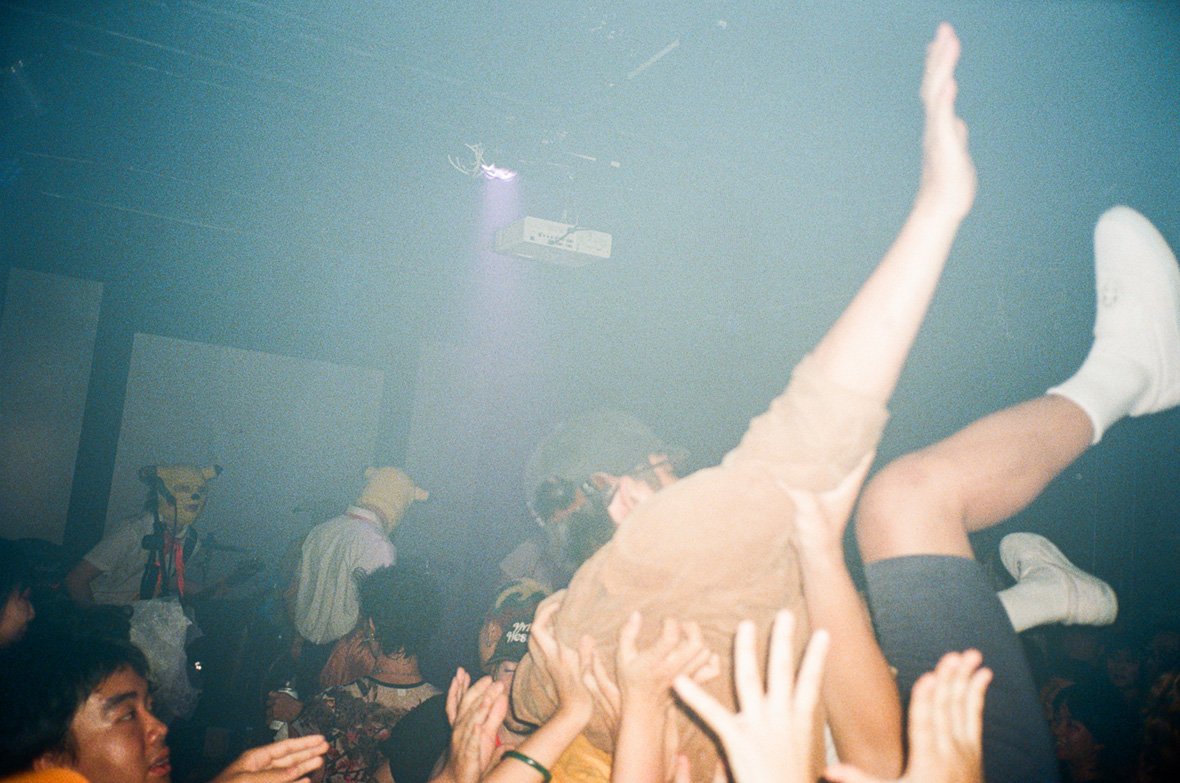
“When I was a teenager I wanted to move, to study abroad like some of my friends, but I couldn’t,” Ngô says. “Now I’ve realized there’s a lot of freedom here. Things are not well established yet in everything from fashion to music to design. You can open any business because things are still fresh and new. There are no rules yet.”
Bo agrees: “In the past few years things have grown so fast. It’s very exciting but can also tiring. Especially in fashion, you need to keep up. If you leave for a couple months, when you return it’s completely different.”
Although Vietnam has gone into lockdown for the first time in over a year while the Delta variant rages across Asia, Gãy is ready to go again as soon as possible. And even under lockdown they’ve been no less active, with a full-day livestream on Aug. 29 in addition to the release of their compilation. “The raves are a physical outlet for all of us, but now we’re reaching the rest of the world by releasing music online,” Trần says. “Now maybe people will see us as more than some kids partying and instead see us as building a new identity. It’s still just art and partying, we’re not essential workers or anything, but it has real meaning. We’re bringing people together from across the globe.”
Ngô 说:“十几岁的时候,我总想搬出去住,像我的朋友一样出国留学,但我去不了。现在我意识到,故乡或许意味着更加自由的表达。在时尚、音乐到设计这些领域,一切都尚未成熟。你可以从头开始,因为一切都尚在起步阶段,没有任何规矩来限制你。”
Bo 表示赞同:“过去几年,整个行业发展得飞快,场景十分精彩,稍有疲惫,你就跟不上了。尤其是在时尚行业,你得跟上潮流。一旦离开几个月,再回来的时候,就又是一个截然不同的世界。”
虽然由于病毒在亚洲各地肆虐,越南近一年多来首次进入封锁状态,但 Gãy 始终蓄势待发。即使在封城期间,他们也同样活跃,除了发布合辑,还在今年 8 月 29 日进行了全天的公益直播。Anh Phi 说:“锐舞对我们来说是现实的私人宣泄口,不过现在我们也正在通过线上发布,面向世界各地的观众。大家不会再把我们看作是几个喜欢派对的小孩,而是看到我们正在努力打造的一个全新平台。在这个平台,艺术和音乐仍然是核心,虽然这不是什么至关重要的工作,但一切有了更实在的意义 —— 将各地的年轻人们聚集起来。”
Like our stories? Follow us on Facebook and Instagram.
Instagram: @nhac_gay
Facebook: ~/nhacgaysaigon
Bandcamp: nhacgay.bandcamp.com
Contributor: Mike Steyels
Chinese Translation: Olivia Li
Instagram: @nhac_gay
Facebook: ~/nhacgaysaigon
Bandcamp: nhacgay.bandcamp.com
供稿人: Mike Steyels
英译中: Olivia Li

